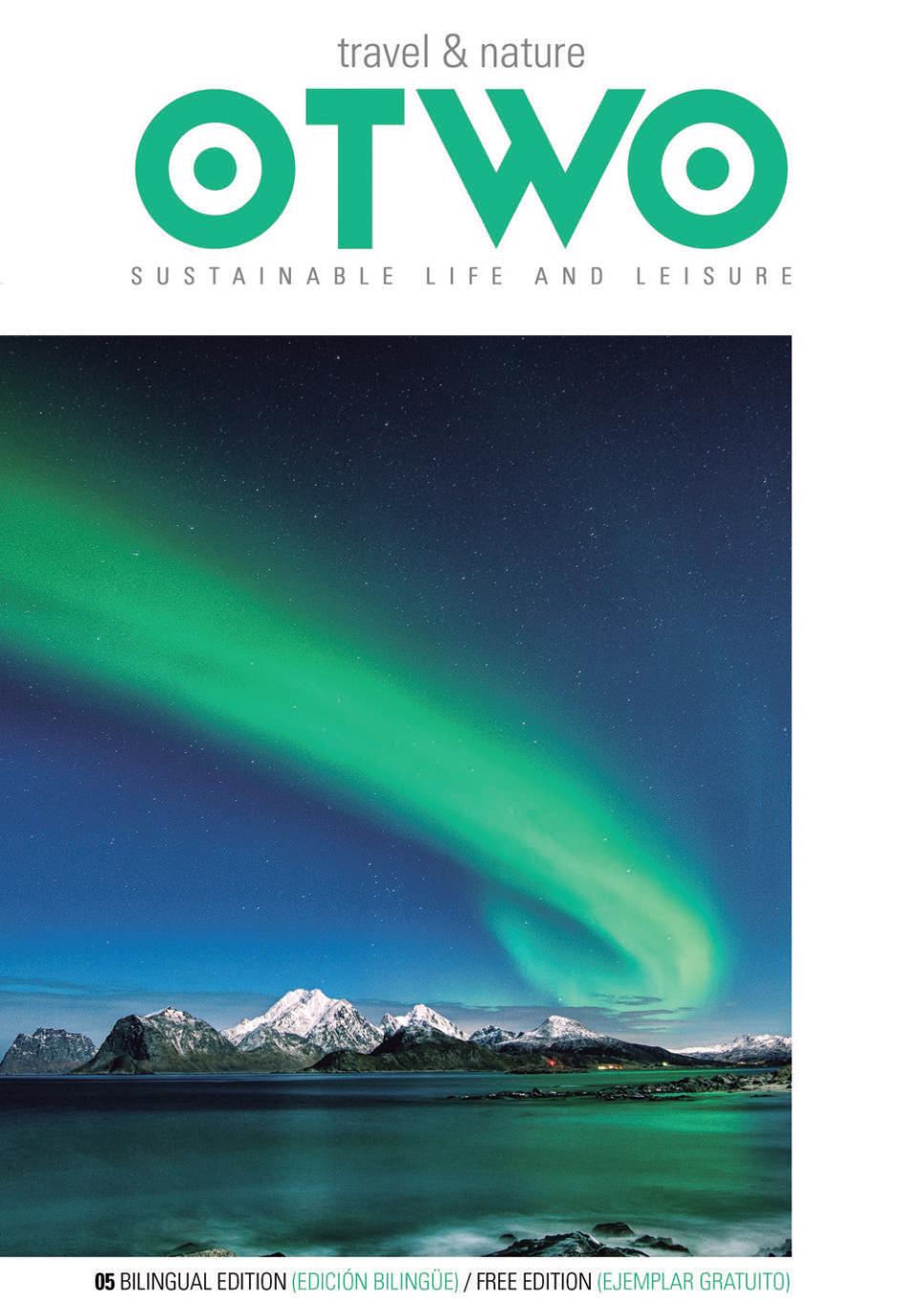
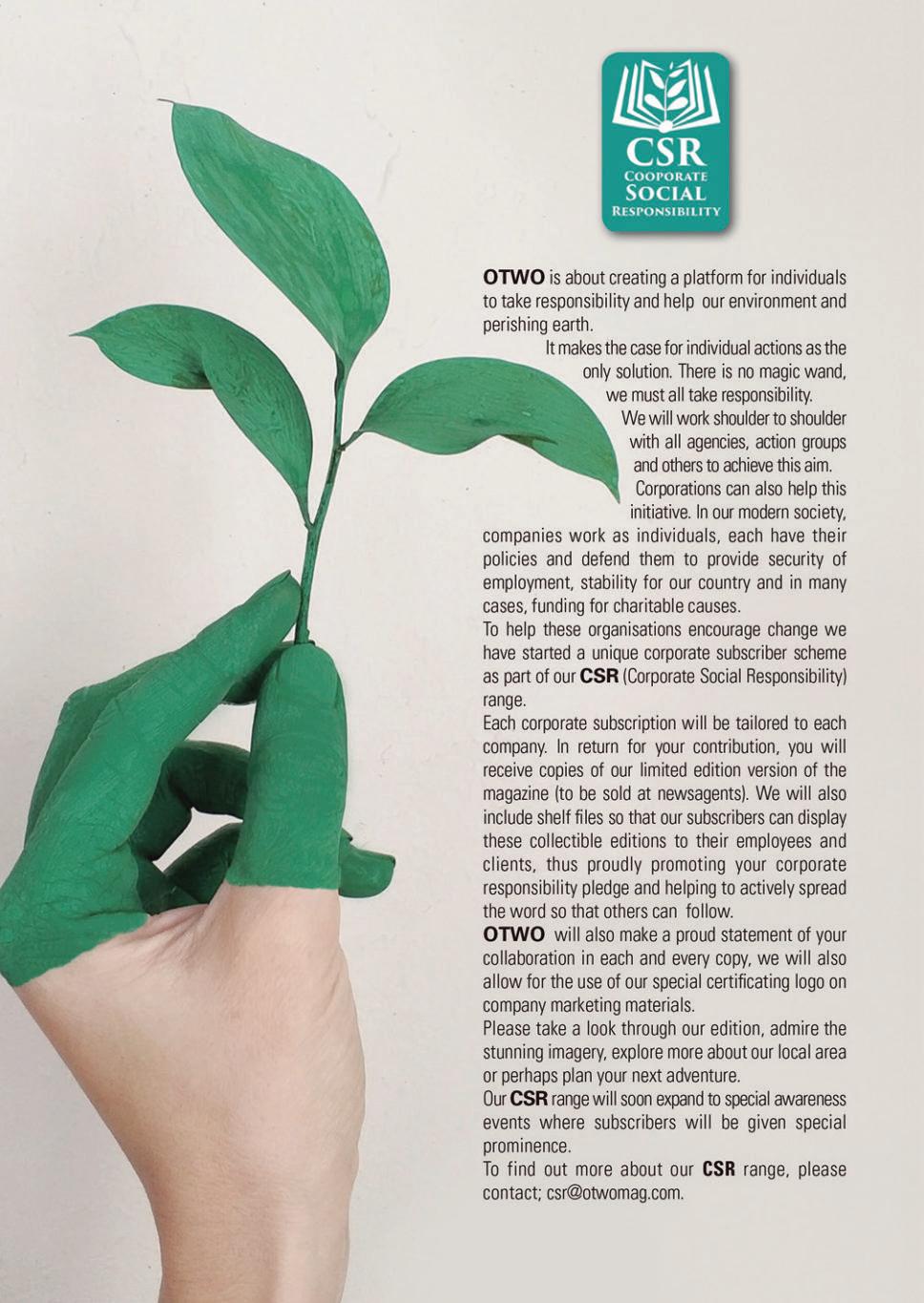
Following the successful launch of eBike tours of the Rock this summer, EBike-Gibraltar will soon be opening their EBike Experience Store at the new entrance to Ocean Village.
The eBike is quickly becoming the personal transport mode of choice for those individuals intent on reducing their contribution to air and noise pollution, as well as those who are tired of battling daily with traffic congestion and expensive/limited car parking options.
For others the attraction is just experiencing all the joys of cycling without any of the sweat!

The store will stock an extensive range of eBikes from premium eBike manufacturer Riese&Müller. (www.r-m.de)
This Christmas EBike-Gibraltar invite you to demo ride their different styles of eBike and trade your motor vehicle keys for an eBike for a week to see if the eBike really can change your life! (conditions apply).
For more information please visit our website www.ebike-gibraltar.com or contact Stuart on 56004948 or at info@ebike-gibraltar.com.
#futureoftransport #cleanerairgibraltar #keys4bike
33 Waterport Wharf, Ocean Village

“A city is not measured by its length and width, but by the breadth of its vision and the height of its dreams”. (Herb Caen).
“Una ciudad no se mide por su longitud y anchura, sino por la amplitud de su visión y la altura de sus sueños.” (Herb Caen).
PHOTOGRAPHY: PEXELS.COM
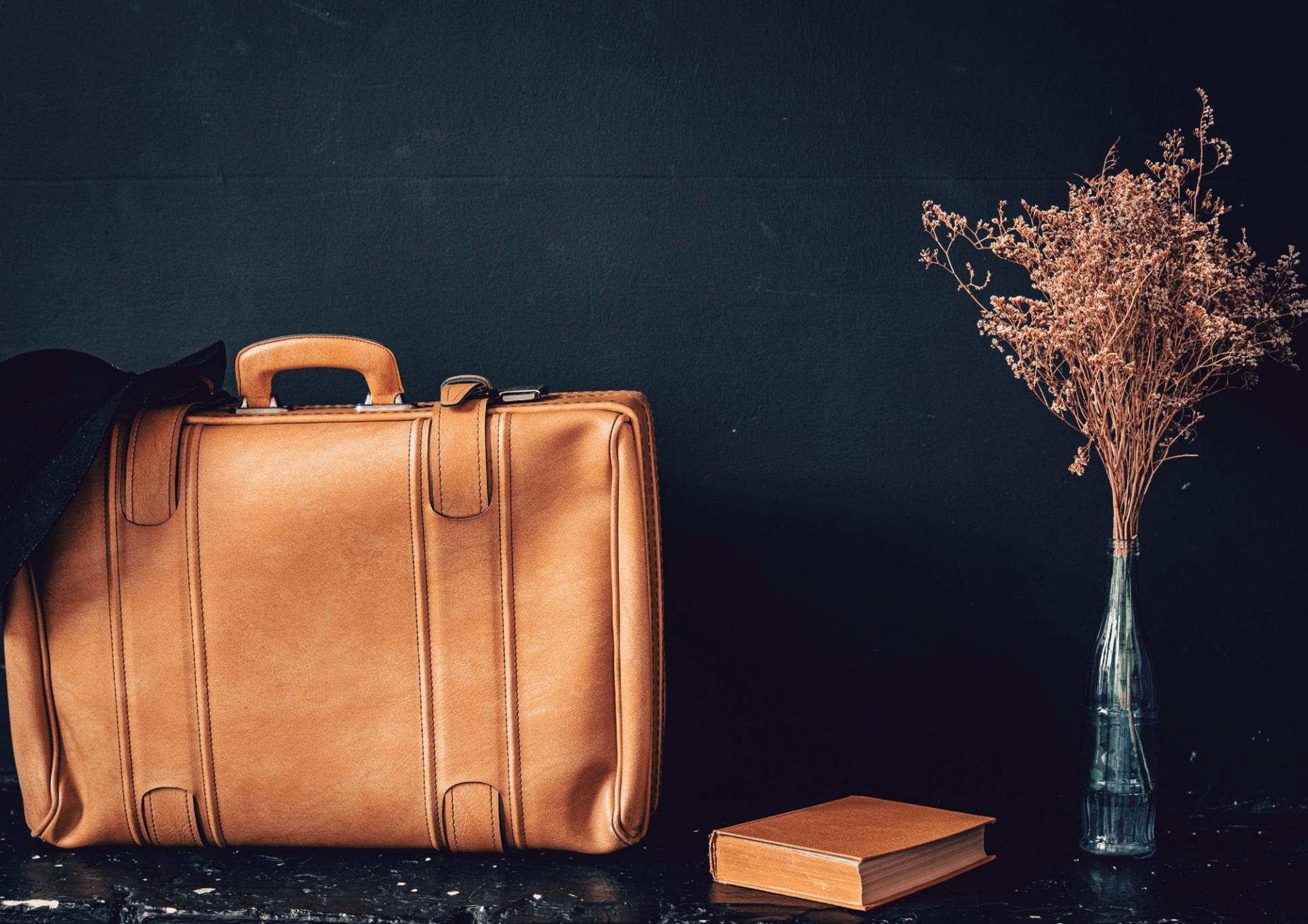
“Viajar te deja sin palabras y después te convierte en un narrador de historias”. (Ibn Battuta).
“Viajar te deja sin palabras y después te convierte en un narrador de historias” (Ibn Battuta).
Online subscriptions available at: https://joom.ag/0r0e.
Get your free OTWO copy every month via email.

Editorial
Suscripciones disponibles via online: https://joom.ag/0r0e.
Recibe tu copia de OTWO por email todo los meses.
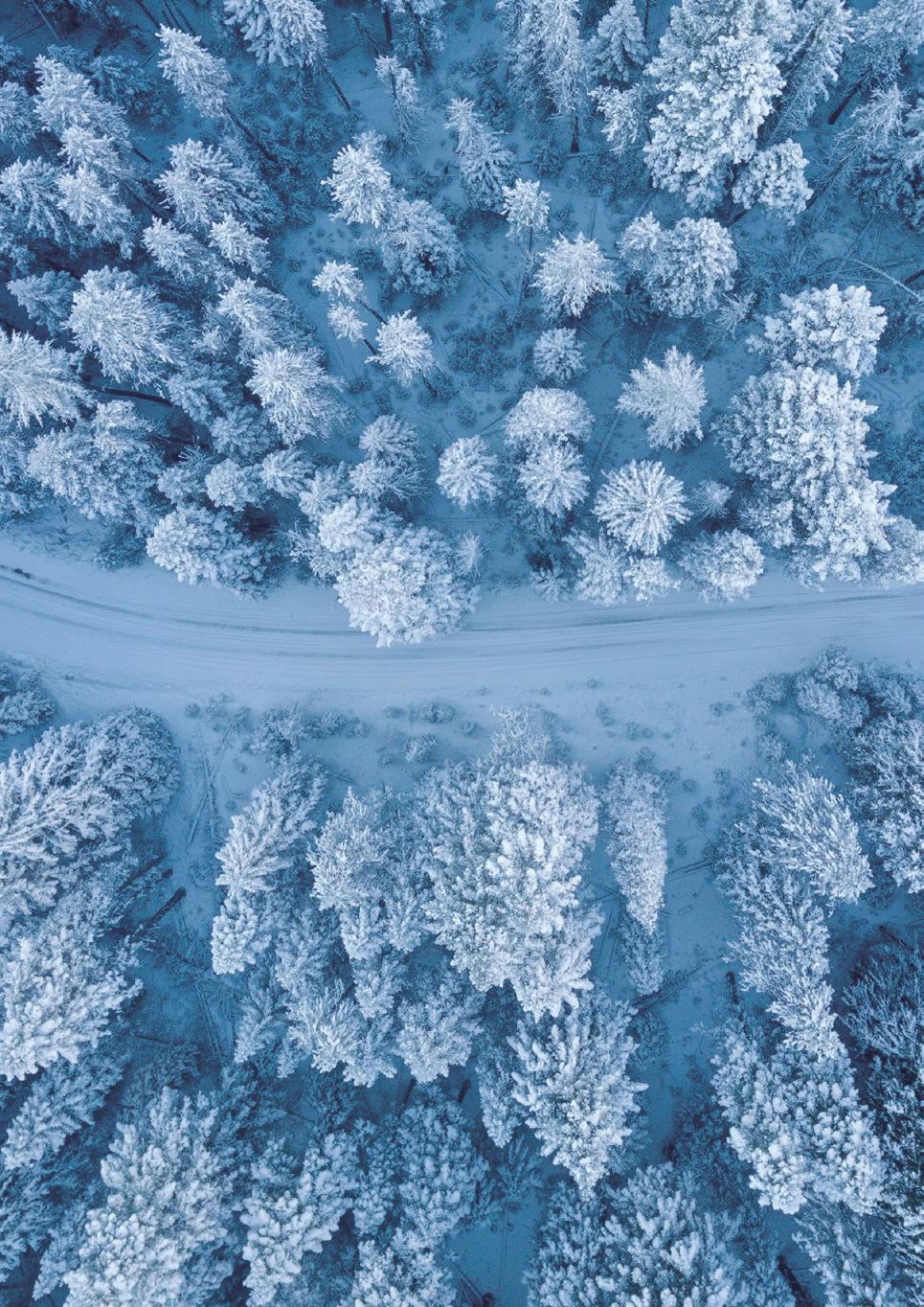
This volume was published in December 2019 by Oxygene Ltd. OTWO Issue 5
Oxygene Ltd.Business Centre.
19 George´s Lane.
GX11 1AA, Gibraltar Tel. +00350 54080331
www.oxygenecommunications.com
© Publishing: Oxygene Ltd.
Vanessa Byrne Managing Director
Juanjo Trujillo Creative Director
Sarah Birch Columnist

Ana Villalta Sales Representative
Photographer: Verdemar, Keith Bensusan, Leslie Linares, Deixter Thomas, Eco Park, Rocio Espada., Sarah Birch,.
Cover photo: Stein Egil Liland
Back Cover photo: Sergio Souza
Translation: Sarah Birch, Ana Villata and Merlin Gutherless
Printing: Santa Teresa Industrias Graficas SA
All rights reserved. No part of this publication may be reproduced, stored in a retrieval system or transmitted in any form or by any means, electronic, mechanical, photocopying, recording or otherwise, without the prior permission in writing from the publishers.
All rights reserved.


Collection “The flower of the month”.
Colección “La flor del mes”.
Shorts / Cortos.
Eco Passion.
The Natural Swap. El Cambio Natural. Mi Moana

My love of the sea / Mi amor por el mar
Plastic Killer / Plástico asesino
Sustainable Tips for the Festive Season
Eco-Park / Parque ecológico.
Swap over Shop / Intercambios
Mi beloved bike / Mi querida bicicleta
Interview Hon Fabian Picardo
Narrowing the Strait Estrechando el Estrecho
Spirit of the Rock
Ronda Via Ferrata
Quick Guide to Finland. Guía Rápida de Finlandia.
Experience Catalog



OTWO
5
8 72 60 48 44 40 38 34 30 24 20 18 12 84 88 92 95 2019 001 10
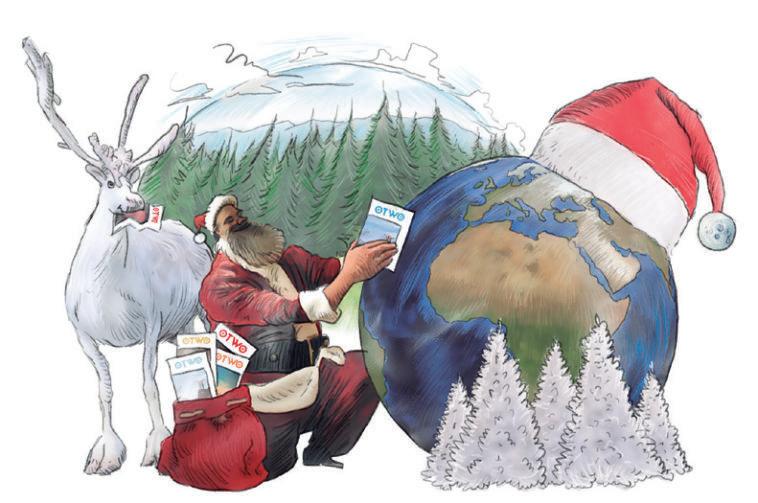
A note from the editor
Vanessa Byrne / Managing Director
And with a blink of an eye December is here. Seems like yesterday I was trying to slim up for my bikini and now I find myself doing the same for Christmas, ahh… the joys.
As the season of giving is upon us I cannot be prouder of this edition by the contribution of ideas to make your Christmas festivities as sustainable and eco-friendly as possible. A big Well Done to The Nautilus Project and Eco Passion for their constant commitment by providing these to our readers.
The concept of “think before you buy” at Christmas seems to be sometimes thrown out the window by impulsive, last minute buying. However, we cannot forget the waste that leaves our homes every morning Christmas Day and piles of packaging and single use products found in our rubbish bins. Please think before you buy this year, it is for us to set the example for future generations, for there to be a future generation.
This month we proudly publish our interview with our very own Chief Minister Fabian Picardo. It was an amazing honor to be given this opportunity along with colleague Sarah to ask him a few
JUANJO TRUJILLO
Y en un abrir y cerrar de ojos, diciembre está aquí. Parece que ayer estaba tratando de adelgazar para mi bikini y ahora me encuentro haciendo lo mismo para Navidad, ahh ... las alegrías.
Como la temporada de regalos y excesos está sobre nosotros, no puedo estar más orgulloso de esta edición por la contribución de ideas para hacer que sus festividades navideñas sean lo más sostenibles y ecológicas posible. Una gran enhorabuena a The Nautilus Project y Eco Passion por su compromiso constante al proporcionar estos a nuestros lectores. El concepto de “pensar antes de comprar” en Navidad parece a veces ser arrojado por la ventana por compras impulsivas de última hora. Sin embargo, no podemos olvidar los desperdicios que salen de nuestras casas cada mañana el día de Navidad y las montanas de envases y productos de un solo uso que se encuentran en nuestros contenedores de basura. Por favor, piense antes de comprar este año, es para que demos el ejemplo a las generaciones futuras, para que pueda ver una generación futura.
Este mes publicamos con orgullo nuestra entrevista con nuestro propio Primer Ministro, Fabian Picardo. Fue un gran honor tener esta oportunidad
questions about future projects and our Gibraltar’s environment. I am very proud to say we have a leader who is setting an example, not only by his personal sustainable alternatives done day by day but by his leadership and focus for a better Gibraltar.
I for one cannot wait for see Gibraltar change to a more child, environmental and people friendly area. We need to change our mentalities and realize that cars and motorbikes are not the only mode of transport. Mentalities to get there that little bit quicker than the person in front of us needs to stop. Bicycles, buses, scooters, WALKING are all such better alternatives to transport and on many occasions quicker. If the Chief Minister of Our Gibraltar can walk to work every day then how can we not have time for such things?! This month we proudly roll out our exciting new Green Week Convention plans. The idea is for this to be held yearly. Sustainable workshops, eco-friendly product stalls, vegan and organic food tasting displays. We also plan to have talks on sustainable transport, alternative renewable energy and so much more. Its going be an amazing event. Very excited to start getting this organized, roll on next year!!
I am definitely one that will end this year on a positive, I see the world is changing for a much better place to live in. New sustainable technologies are rolling out daily, the public mindset is changing and the environmental awareness there is now was most certainly not there last year. There is hope for us yet!
Let me take this time to thank all our readers, supporters and contributors for their constant support and motivation.
From all of us at OTWO we wish you the best of Christmases surrounded by those you love and the most prosperous and sustainable New Year!.
Peace and love to all always.
junto con nuestra colega Sarah para hacerle algunas preguntas sobre proyectos futuros y el entorno de Gibraltar. Estoy muy orgullosa de decir que tenemos un líder que está dando el ejemplo, no solo por sus alternativas sostenibles personales que se hacen día a día, sino también por su liderazgo y enfoque para un mejor Gibraltar. Por supuesto, creemos que se puede hacer mucho más en algunas áreas, pero puede haber pocas dudas sobre la sinceridad del hombre al respecto y su resolución.
Por mi parte, no puedo esperar a ver que Gibraltar cambie a un área más amigable para los niños, el medio ambiente y las personas. Necesitamos cambiar nuestras mentalidades y darnos cuenta que los automóviles y las motos no son el único medio de transporte. La mentalidad que nos hace querer llegar primero, de siempre querer ser un poco más rápido de lo que la persona frente a nosotros, necesita cambiar. Bicicletas, autobuses, scooters, CAMINAR son alternativas tan mejores al transporte y en muchas ocasiones más rápidas. Si el Ministro Principal de Nuestro Gibraltar puede caminar al trabajo todos los días, ¿cómo podemos no tener tiempo para esas cosas nosotros?
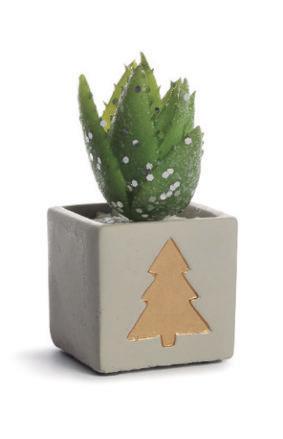
Este mes lanzamos con orgullo nuestro nuevo y emocionante concepto de la Convención de la Semana Verde. La idea es que esto se realice anualmente. Talleres sostenibles, puestos de productos ecológicos, exhibiciones de degustación de alimentos veganos y orgánicos. También planeamos tener conversaciones sobre transporte sostenible, energías renovables alternativas y mucho más. Será un evento increíble. Me da mucha illusion organizar esto, ¡a por todas el próximo año!
Definitivamente, soy una que terminará este año de manera positiva, veo que el mundo está cambiando para tener un lugar mucho mejor para vivir. Nuevas tecnologías sostenibles se implementan a diario, la mentalidad pública está cambiando y la conciencia ambiental que existe ahora es más que la que fue el año pasado. ¡Aún hay esperanza para nosotros! Permítanme aprovechar este momento para agradecer a todos nuestros lectores, seguidores y colaboradores por su constante apoyo y motivación. De parte de todos nosotros en OTWO, ¡le deseamos la mejor Navidad rodeada de sus seres queridos y el Año Nuevo más próspero y sostenible !.
Paz y amor a todos siempre.
9 8
OTWO 05 / DECEMBER 2019 OTWO 05 / DECEMBER 2019
ILLUSTRATION:
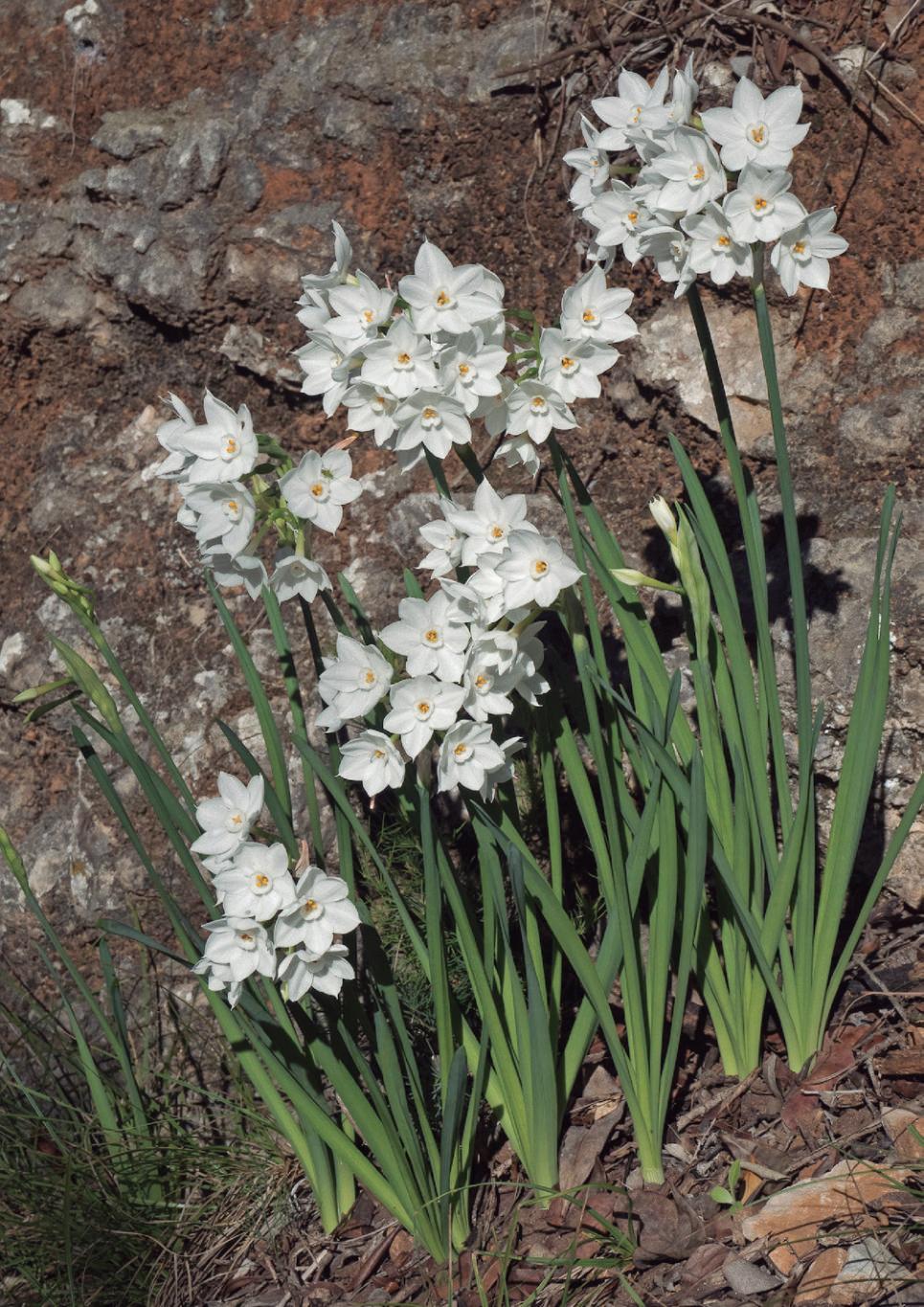

DECEMBER / Diciembre
Collection “The flower of the month”
PoinsettiaEuphorbiapulcherrimaand PaperwhiteNarcissusNarcissuspapyraceus
Dr Keith Bensusan Director
Gibraltar Botanic Gardens, The Alameda.
The Poinsettia or Christmas Flower Euphorbia pulcherrima is probably the plant that is most closely associated with Christmas throughout the world. The species is from Mexico and although it is most commonly grown indoors, it can grow outdoors in Gibraltar, such as at the Gibraltar Botanic Gardens where it forms tall shrubs. However, traditionally the most typical flower of the Christmas period in Gibraltar is the Paperwhite Narcissus Narcissus papyraceus. The Narcissus are commonly referred to as daffodils and although the large, yellow Wild Daffodil Narcissus pseudonarcissus is the best-known species, the little Paperwhite that grows on the Rock is also a daffodil. Its very fragrant flowers divide opinion, but the strong Jasmine-like scent will remind many Gibraltarians of Christmas time. The species is very common on the Upper Rock during this period. This group of bulbs is distributed around the Mediterranean and Central Europe, with southern Iberia as a centre of diversity of Narcissus, with many different species growing in the mountains surrounding Gibraltar, mainly from autumn to early Spring. A second species also grows in Gibraltar, including at the botanic gardens: the Bunch-flowered Narcissus Narcissus tazetta. This species is rare locally and may have been introduced by humans.

El pascuero o flor de pascua, Euphorbia pulcherrima, es con toda probabilidad la planta más comúnmente asociada a la navidad por todo el planeta. La especie procede de Méjico y aunque se cultiva de forma más habitual en interiores, puede crecer al aire libre en Gibraltar. La podemos encontrar en los jardines botánicos, donde forma una serie de arbustos de gran tamaño. No obstante, la flor más navideña más tradicional en Gibraltar es el narciso blanco, Narcissus pseudonarcissus, siendo además la especie más conocida. Las muy aromáticas flores de esta pequeña flor que crece en el Peñón dan pie a una división de opiniones en cuanto a gustos, pero no cabe duda de que su intenso olor ajazminado evocará la navidad para muchos gibraltareños. Se trata de una especie muy común en la parte alta durante esta parte del año. Esta familia de bulbos crece por la región mediterránea y Europa central, con el sur de la península ibérica siendo la zona con mayor diversidad de especies de narciso, muchas de las cuales crecen en las montañas cercanas a Gibraltar, principalmente entre el otoño y el arranque de la primavera. Una segunda especie, el narciso amarillo o campanita, crece también en el Peñón y puede encontrarse, en forma de arbustos floreados, en los jardines botánicos. Se trata de una especie inusual en la zona que podría haber sido introducida aquí por el hombre.
10 11
OTWO 05 / DECEMBER 2019 OTWO 05 / DECEMBER 2019
Narcissus.
Narcissus Photo by Leslie Linares.

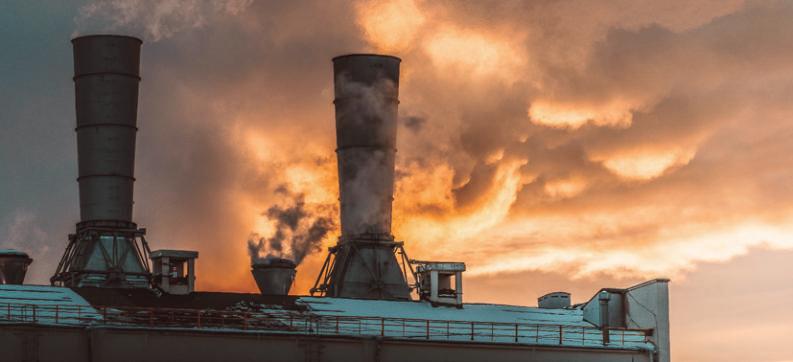
As a part of the BLF (British Lung Foundations), Campaign for Clean Air and Healthy Lungs, a presentation was held at Loreto Convent School for both kids and parents to learn more about the potential risks of bad air quality and campaigning.
Alison Cook, Director of External Affairs for the BLF, visited Gibraltar to speak to the young students, focusing her talk on the effects of pollution and inviting children to ask questions and find out more about how they can get involved to push for change.
Established in 1984, the British Lung Foundation works primarily with people who suffer from lung disease. They also fund life-saving research and campaign extensively within government and the public for positive change in the UK.
Asking the kids what they thought were the biggest causes of air pollution, the children responded with the airport, lorries and very specifically, exhausts.
Alison went on to explain more about additional causes of poor air quality and the importance of lowering harmful emissions around vulnerable areas, as well as how they can get involved with campaigning, who to target and which actions have the greatest effect.
Later, parents were invited to attend a similar talk, allowing them the opportunity to ask questions about the harmful impacts of air pollution and where to find helpful resources. Parents also discussed their health concerns and lack of available real-time local information.
Gibraltar’s air quality has been under heavy scrutiny
for many years, with bunkering, power generation and road traffic the main culprits of the high-levels of air pollutants in the area.
Unfortunately, it is children that suffer the most. Various studies have found that growing up in areas with poor air quality can stunt lung development, leaving them damaged for life. Poor air quality is also responsible for one-third of child asthma cases, and several reports have also found that living in a highly polluted area can negatively affect mental health.
So, what can be done locally? The masses of cars on Gibraltar’s roads have to be addressed, with peak times such as early morning and after school having the biggest impact on air conditions.
Campaigning can make a massive difference, with the kids at Loreto showing great interest in how they can help and get involved. Alison recommended they put up posters, write to local politicians or support local environmental groups. Parents can also help by gathering resources and installing air monitors around their homes and schools for real-time air quality data.
As individuals, we should walk more or use public transport to travel, particularly at peak times. Which would not only result in a substantial reduction in emissions but also help improve general health and wellbeing.
Education is also paramount, so it would be fantastic to see more talks like this rolled out across all of the local schools.
For information on how to get involved, you can visit the Clean Air Parents Network: https://www.clientearth.org
Conferencia sobre la calidad del aire ofrecida por BLF Kids
La Fundación Británica del Pulmón (BLF) y su Campaña por un Aire Limpio y Pulmones Saludables, organizó una presentación en el Loreto Convent School, para que alumnos y padres conozcan un poco más los riesgos potenciales de su campaña sobre la mala calidad del aire.
La Directora de Asuntos Externos del BLF, Alison Cook, visitó Gibraltar para charlar hablar con los jóvenes estudiantes, enfocando su discurso sobre los efectos de la contaminación e invitando a los niños a preguntar y conocer cómo ellos pueden ser parte del cambio involucrándose en cuestiones propias.
La Fundación Británica del Pulmón, creada en 1984, principalmente trabaja con personas que padecen enfermedades pulmonares. Entre sus cometidos se encuentra también la financiación de investigaciones y la inversión en campañas que salvan vidas tanto entre los gobernantes como entre los ciudadanos, para conseguir un cambio positivo en el Reino Unido.
Los niños contestaron a sus preguntas sobre cuáles eran las principales causas de la contaminación del aire, respondiendo que el aeropuerto, los camiones y, de forma muy específica, los gases de tubos de escape. Alison continuó explicándoles algunas causas adicionales de la mala calidad del aire y la importancia de reducir las emisiones nocivas en las áreas más vulnerables, así como su participación en la campaña, a quién dirigirse y qué acciones tienen el mayor efecto.
Más tarde, se invitó a los padres a asistir a una charla similar, permitiéndoles hacer preguntas sobre los efectos nocivos de la contaminación del aire y dónde encontrar recursos útiles. Los adultos disertaron sobre sus preocupaciones de salud y por la falta de información local disponible en tiempo real.
La calidad del aire en Gibraltar ha estado bajo un intenso escrutinio durante muchos años, con el abastecimiento de combustible, la generación de energía y el tráfico rodado como causas principales
de los altos niveles de contaminantes del aire en la zona.
Por desgracia, los niños son los que más sufren estos infortunios. Son varios los estudios que ponen de manifiesto que el crecer en áreas con mala calidad del aire puede retrasar el desarrollo pulmonar, dejándolos dañados de por vida. La mala calidad del aire también es responsable de un tercio de los casos de asma infantil, y varios informes también han encontrado que vivir en un área altamente contaminada, puede afectar negativamente la salud mental.
Por tanto, ¿qué se puede hacer desde el ámbito local? Hay que tomar medidas sobre la cantidad de tráfico rodado en y los horas punta como la madrugada y las salidas escolares, tienen el mayor impacto en las condiciones del aire.
La campaña puede marcar la diferencia, con los alumnos del Loreto interesados en cómo ayudar e involucrarse en sus objetivos. Alison les recomendó colocar cartelería, escribir a políticos locales o apoyar a grupos ambientales de la zona. También los padres pueden ser parte de la campaña apoyando en recursos e instalando monitores de medición en los alrededores de viviendas y escuelas de para obtener datos de la calidad del aire, en tiempo real.
Como ciudadanos, debemos caminar más o usar el transporte público para viajar, sobre todo en las horas punta. Con solo esto, no solo habría una reducción sustancial de las emisiones, sino que también ayudaría a mejorar la salud y el bienestar general.
La educación es también primordial, por lo que sería fantástico contar con más conferencias y charlas como está en el resto de colegios.
Si desea más información sobre cómo participar, puede visitar la Red de Padres de Aire Limpio: https://www.clientearth.org
Sitting around the dinner table and pulling apart a Christmas Cracker, has been a British Christmas day tradition for decades. We all laugh or groan at the terrible joke inside and everyone, including Grandad,

13 12
OTWO 05 / DECEMBER 2019 OTWO 05 / DECEMBER 2019
WAITROSE & JOHN LEWIS TO REMOVE PLASTIC FROM CRACKERS
BLF KIDS AIR QUALITY TALK
dons the silly paper hat. These decorative Christmas day staples grace millions of dinner tables across the UK on Christmas day. They were conceived in the mid-1800s when a London confectioner had the idea to start adding a motto to his sugared almond bon-bons, which he sold wrapped in a twisted paper package.
For any of our Spanish readers who may not know what a Christmas Cracker is, it is a colourfully wrapped cardboard tube, containing a small plastic toy, a paper hat and a slip of paper with a silly joke. A person grasps each end of the cracker and pulls until the tube breaks with a loud crack, the person holding the biggest broken half gets to keep the contents. As fun and traditional as crackers are, it is estimated that a staggering 154 million crackers were pulled in the UK during Christmas 2017. But with their small plastic toys and trinkets usually making their way straight into the bin, environmental campaigners have been calling for them to be banned or their contents modified for years.
This year, however, two of the UK’s largest retailers have announced that they will stop putting plastic toys inside their crackers.
By Christmas 2020, Waitrose and John Lewis will only sell crackers filled with toys and other items made from recyclable materials such as metal and paper.
John Lewis is currently also selling “fill your own” Christmas crackers, which are proving very popular with customers and account for 1 in 3 packets sold.

Campaigners have praised this is a step in the right direction towards reducing the amount of single-use plastic used during the festive season. But have also called for glitter and other plastic wrappers to be removed from the millions of products sold over Christmas.
Standard glitter is considered a real environmental plight. This popular and widely used decorative product is made from etched aluminium bonded to polyethylene terephthalate - a form of microplastic that can find its way into oceans and harm animals.
Waitrose and John Lewis have already reduced the amount of glitter on their own-brand Christmas product by two-thirds, and have pledged to ban altogether by either removing it from products or using environmentally friendly alternatives by 2020. Other retailers have also made moves to remove plastic from some of their Christmas lines, with Tesco and Marks & Spencer’s already switching to biodegradable glitter this year.
With the enormous amounts of plastic toys, packaging and decorations purchased throughout Christmas, these first steps will hopefully lead the way for all major supermarkets and retailers to make a swift transition from unnecessary single-use plastics.
Waitrose & John Lewis eliminan el plástico de los Christmas Crackers.
Sentarse alrededor de la mesa y tirar de envoltorios que sorprenden cuando rompen con pequeños regalos navideños ha sido durante décadas, una tradición británica del día de Navidad. Todos reímos o protestamos ante la detestable broma que esconde en su interior y todos, incluido el abuelo, se ponen el tonto sombrero de papel.
Estos elementos decorativos adornan millones de mesas en todo el Reino Unido, el día de Navidad. Fueron ideados a mediados de 1800, cuando a un pastelero londinense se le ocurrió añadir una leyenda a sus bombones de almendra azucarados, vendiéndolos envueltos en un paquete de papel retorcido.
Para cualquiera de nuestros lectores españoles que no sepan qué es un Christmas Cracker, es un tubo de cartón envuelto de colores, que contiene un pequeño juguete de plástico, un sombrero de papel y un trozo de papel con una patosa broma. Cada per-
sona agarra un extremo del envoltorio coloreado y tira con hasta que el tubo cede con un fuerte crujido, y el que sostiene la mitad mayor, se queda con el bromista contenido.
Tan divertida y tradicionales son estos Christmas Crackers, que asombrosamente se estima que en 2017 fueron aproximadamente 154 millones consumidas en el Reino Unido durante esa Navidad. Pero, debido a sus contenidos donde la estrella son los pequeños juguetes y baratijas de plástico que de forma habitual van directas al contenedor, los activistas ambientales llevan años pidiendo que dicho contenido se modifique o se prohíba.
No obstante, este año, dos de los mayores minoristas del Reino Unido han anunciado que dejarán de poner juguetes de plástico dentro de sus Crackers.
Para la Navidad de 2020, Waitrose & John Lewis solo venderán galletas que contengan juguetes y artículos de broma realizados con materiales reciclables como papel y metal.
Actualmente, John Lewis está comercializando unos Christmas Crackers bajo el lema “rellénelas usted mismo” que, en una proporción de un tercio de las ventas, se están posicionando e incrementando su consumo entre los clientes.
Los activistas han alabado esta correcta dirección comercial como un importante paso para reducir la cantidad de plástico desechable durante las fiestas navideñas. Aunque también han pedido que se eliminen las brillantinas y el resto de envoltorios plásticos de millones de productos vendidos durante la Navidad.
La purpurina, se considera una verdadera contaminación ambiental. Esta popular decoración se fabrica de aluminio grabado unido al tereftalato de polietileno, una fórmula de micro plástico que puede llegar a los océanos y dañar a los animales.
Waitrose & John Lewis ha reducido en dos tercios la cantidad de brillantina en su marca propia de productos navideños, y se ha comprometido a eliminarlo por completo, erradicándolo de sus artículos o alternativas ecológicas para 2020.
Esta misma senda está siendo imitada por otros minoristas al eliminar el plástico de algunas de sus líneas navideñas como es el caso de Tesco y Marks & Spencer, que ya están cambiando a purpurina biodegradable para este año.
Con la enorme cantidad de juguetes, paquetería y decoraciones de plástico comercializados en durante la Navidad, se espera que estos primeros pasos abran el camino para que todos los grandes supermercados y minoristas cambien rápidamente los innecesarios plásticos desechables de sus productos y lineales.
AWCP OPEN DAY


The Alameda Wildlife Conservation Park kicked off its new Habits for Habitats campaign, with a fun-filled day of family activities at the Gibraltar Botanic Gardens in early November, as part of the AWCP Open Day.
Joined by other local NGO’s such as the Nautilus Project and the Environmental Safety Group, various creative and interactive activities allowed both kids and adults to get involved and learn more about species and habitat protection, as well as how to live more sustainably.
Some of the many fantastic activities held were; a behind the scenes tours of the Botanic Gardens and their labs, animal feeding at the Wildlife Park, a creepy Halloween cave, capoeira sessions and Village Fete style games. There were also tree climbing demonstrations where kids could join in. A sustainable food market was also serving up delicious falafel and hummus, plant-based burgers and cakes.
Visitors were also able to learn more about the Alameda Biodome Project announced earlier this year. Once completed, the biodome will allow people to
15 14 OTWO 05 / DECEMBER 2019 OTWO 05 / DECEMBER 2019
explore the natural world through a greenhouse, indoor and outdoor learning spaces, a sensory garden and other horticultural and educational features. The Habit’s for Habitat campaign is an initiative that aims to promote awareness of human-driven species extinct and threats to species all over the world and how we, at home, can make a difference by making informed swaps and changes. Some of the habits the campaign asks us to think about are ditching or reducing meat consumption, driving less, cooking from scratch, reducing waste and conscious voting.
Jornada de puertas abiertas de AWCP
La Reserva de Fauna Salvaje Alameda inició su campaña Hábitos para el Hábitat, con una jornada llena de actividades familiares en el Jardín Botánico de Gibraltar a principios de noviembre, como una de las partes integrantes de la Jornada de Puertas Abiertas de la AWCP.
La participación de otras ONGs locales como el Proyecto Nautilus y el Grupo de Seguridad Ambiental, permitieron que niños y adultos se involucraran con tareas creativas e interactivas y aprendieran más sobre las especies y la protección del hábitat, a la vez que recababan información para vivir de forma sostenible.
Algunas de las estupendas actividades realizadas fueron: visitar entre bastidores los jardines botánicos y sus laboratorios, la alimentación animal en el Parque Salvaje, una espeluznante Cueva de Halloween,
Sesiones de capoeira y juegos locales. También se realizaron escaladas de árboles a las que pudieron unirse los más pequeños.
Un mercado de alimentos sostenibles también estaba sirviendo deliciosos falafel y hummus, hamburguesas y pasteles a base de plantas.
Los visitantes también pudieron aprender más sobre el Proyecto Bio-Dome Alameda anunciado a principios de este año. Una vez concluido, el biodomo permitirá a los visitantes explorar el mundo natural a través de un invernadero, recorrer espacios interiores y exteriores de aprendizaje, disfrutar un jardín sensorial y disfrutar de otras especialidades hortícolas y educativas.
La campaña Hábitos para el Hábitat, tiene como
objetivo concienciar ante las amenazas de extinción de distintas especies en todo el mundo y de cómo nosotros tan cerca de casa, Podemos marcar la diferencia con simples intercambios y permutes de información.
Algunos de los cambios propuestos en la campana son simples cambios de actitud como renunciar o reducir el consumo de carnes, utilizar menos el automóvil, usar alimentos en crudo, disminuir los residuos y votar de forma coherente.
LONDON’S FIRST 100% ELECTRIC BLACK CAB HITS THE STREETS

London is once again at the forefront of implementing a clean public transport model with the introduction of their first fully electric black cab, demonstrating the capitals commitment to making London a cleaner and safer city.
The Dynamo Taxi is the new eco-answer to the world-famous London Hackney Carriage. Converted from a Nissan electric van, it is the first 100% electric taxi with zero-emissions on the streets of London since 1897.
Yes, you heard right, 1897! Walter Bersey was the first to try out fully electric taxis in London at the end of the 19th century. But due to the Bersey’s top speed of 14-19 kph and their tendency to frequently break down, these first self-propelled vehicles never really took off and were only on the road for two years.
Flash forward to 2018 and London’s air pollution rates soaring, the Mayor of London, Sadiq Khan, implemented new legislation to encourage all new London taxis to go green.
These new rules mean that only two vehicle types, both zero-emission capable, can be granted a taxi license.
Since the introduction of this legislation in January 2018, 2,450 LVEC hybrid-electric cabs have made their way onto the capital’s streets.
The LVEC hybrid-electric model has a battery range of 112km, but now the new Dynamo Taxi gives driver’s the option to purchase a greener alternative that can travel up to 300km on a single charge, and is thankfully, much quicker than the Bersey.
With most of the 20,000 licensed black cabs in London running on diesel, the Mayor, Sadiq Khan,
hopes that this new “Dynamo taxi will accelerate the retirement of polluting diesel taxis from city streets across the UK”.
Taxis account for 16% of vehicle nitrogen oxide emissions in London and with the UK capital ranking as one of the worst cities in the world for air quality, the Mayor has pushed for tougher measures to reduce harmful emissions.
Earlier this year, an Ultra-Low Emission Zone was introduced in central London, requiring any vehicle driving into the zone that doesn’t meet exhaust emissions standards has to pay £12.50 each day within the ULEZ. This new charge zone has already proved successful in reducing the number of diesel cars entering the city centre.
Los primeros taxis 100% eléctricos salen a la calle en Londres
Una vez más, Londres se pone a la vanguardia con la implementación de un modelo de transporte público limpio, un taxi totalmente eléctrico, demostrando el compromiso por hacer la capital londinense una ciudad más limpia y segura.
El Dynamo Taxi es la nueva respuesta ecológica al mundialmente conocido London Hackney Carriage. El nuevo taxi negro, se ha transformado a partir de una camioneta eléctrica de Nissan y es desde 1897, el primer taxi 100% eléctrico que recorre las calles de Londres con cero emisiones.
Sí, escuchaste bien, ¡1897! Walter Bersey, probó por primera vez en Londres taxis totalmente eléctricos a finales del siglo XIX. Pero debido a la velocidad máxima del Bersey de 14/19 km/h y sus fallos frecuentes, estos primeros vehículos eléctricos no despegaron y se mantuvieron solo dos años en las carreteras.
El alza en las tasas de contaminación en el aire de Londres, propició que el alcalde de Londres, Sadiq Khan, implementase para 2018 una legislación estimulase optar por los taxis ecológicos en la ciudad de Londres.
Con esta nueva normativa, solo dos tipos de vehículos pueden obtener una licencia oficial de taxi, ambos con emisión cero.
Desde la entrada en vigor de esta regulación en enero de 2018, han llegado a la capital 2.450 coches híbrido-eléctricos LVEC.
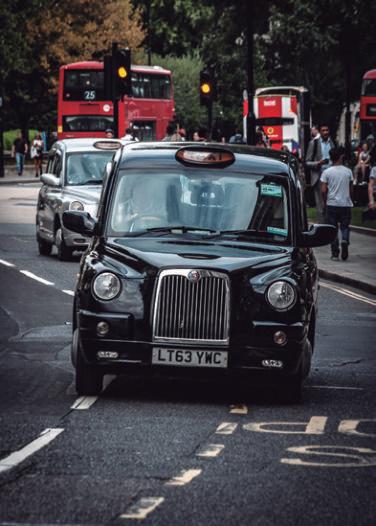
El modelo híbrido-eléctrico LVEC tienen una batería que le permite 112 km de autonomía, pero el nuevo Dynamo Taxi ofrece la posibilidad de hacerse con una batería cuya carga le permite hasta 300kms de viaje, una alternativa más ecológica y por fortuna, mucho más veloz que el Bersey original.
El alcalde londinense, Saiq Khan, espera que la mayoría de los 20.000 taxis diésel que en la actualidad tienen licencia en Londres, opten por este nuevo modelo, “El taxi Dynamo acelerará la retirada de los contaminantes taxis diésel de las calles de las ciudades en todo el Reino Unido”.
Los taxis, representan el 16% de las emisiones de óxido de nitrógeno de los vehículos en Londres y, la actual clasificación de la capital del Reino Unido como una de las peores ciudades del mundo en calidad del aire, el alcalde ha impulsado medidas más estrictas para reducir las emisiones nocivas. A principios de este año, se introdujo una Zona de Emisiones Ultra Bajas (ULEZ) en el centro de Londres, que exige el pago de £ 12.50 por día a cualquier vehículo que acceda a dicha zona y no cumpla con los estándares de emisiones de escape establecidos. Una decisión que ya ha constatado el éxito de la resolución de esta nueva zona de ULEZ al reducir el número de vehículos diésel que acceden al centro de la ciudad.
17 16 OTWO 05 / DECEMBER 2019 OTWO 05 / DECEMBER 2019
The Natural Swap


El Cambio Natural Especial Navidad
Christmas Cards
Recyclable? Many cards can be recycled but cards containing glitter, glue, is over printed in foil or a 3D image cannot be recycled.
How long does it take to decompose: Cardboard – 3 month. Glitter or glue cards – 10-1000 years
Alternatives:
E-greeting cards. Recycled or recyclable cards. Plantable cards.
Wrapping Paper
Recyclable? Most wrapping paper is recycling contamination. If wrapping paper is metallic, has glitter on it, or has a texture to it, it is not recyclable. However, unlaminated paper-based wrapping paper and pre-recycled wrapping paper are usually recyclable. How long does it take to decompose: – 2 – 6 weeks
Alternatives:
Recyclable wrapping paper. Newspaper. Fancy, reusable gift boxes.
Artifical Christmas Tree
Recyclable? Artifical trees cannot be recycled. How long does it take to decompose: – 400 Years.
Alternatives:
Real Christmas tree. Table top tree. Wood tree. Staked planks. Chalkboard tree
Christmas Crackers
Recyclable?
Wrapping is recyclable unless glitter is used. Plastic toys inside are not. How long does it take to decompose: – Cardboard – 3 months.
Alternatives:
Only purchase crackers with recyclable material (check the box). Reusable bag crackers with sustainable alternatives inside. Knitted Christmas crackers with sustainable alternatives inside.
Postales de navidad
¿Reciclable? Muchas postales se pueden reciclar, pero los postales que contienen brillo, pegamento, se imprimen en papel de aluminio o una imagen en 3D no se pueden reciclar.
¿Cuánto tiempo tardan en descomponerse?
Cartón: 3 meses. Postales con brillo o pegamento (micro plastico): 10-1000 años
Alternativas: Postales de felicitación electrónicas. Postales recicladas o reciclables. Posatles con semillas.
Papel de regalo
¿Reciclable? La mayoría del papel de envolver contamina. Si el papel de regalo es metálico, tiene brillo o tiene una textura, no es reciclable. Sin embargo, el papel de envolver no laminado con base de papel, y el papel de envoltura pre-reciclado son generalmente reciclables.
¿Cuánto tiempo tardan en descomponerse?
2-6 semanas.
Alternativas: Papel de embalaje reciclable. Periódico. Cajas de regalo elegantes y reutilizables.
Árbol de navidad artificial
¿Reciclable? Los árboles artificiales no pueden ser reciclados.
¿Cuánto tiempo tardan en descomponerse?
400 años.
Alternativas:
Árbol de navidad real. Árbol de mesa Árbol de madera. Tablones estacados. Árbol de pizarra.
Christmas Crackers
¿Reciclable? La envoltura es reciclable a menos que sea de brillo. Juguetes de plástico en el interior no lo son.
¿Cuánto tiempo tardan en descomponerse?
Cartón: 3 meses
Alternativas: Solo compre Christmas crackers con material reciclable (mira la caja). Christmas Crackers reutilizables con alternativas sostenibles en el interior. Christmas Crackers tejidas con alternativas sostenibles en su interior.
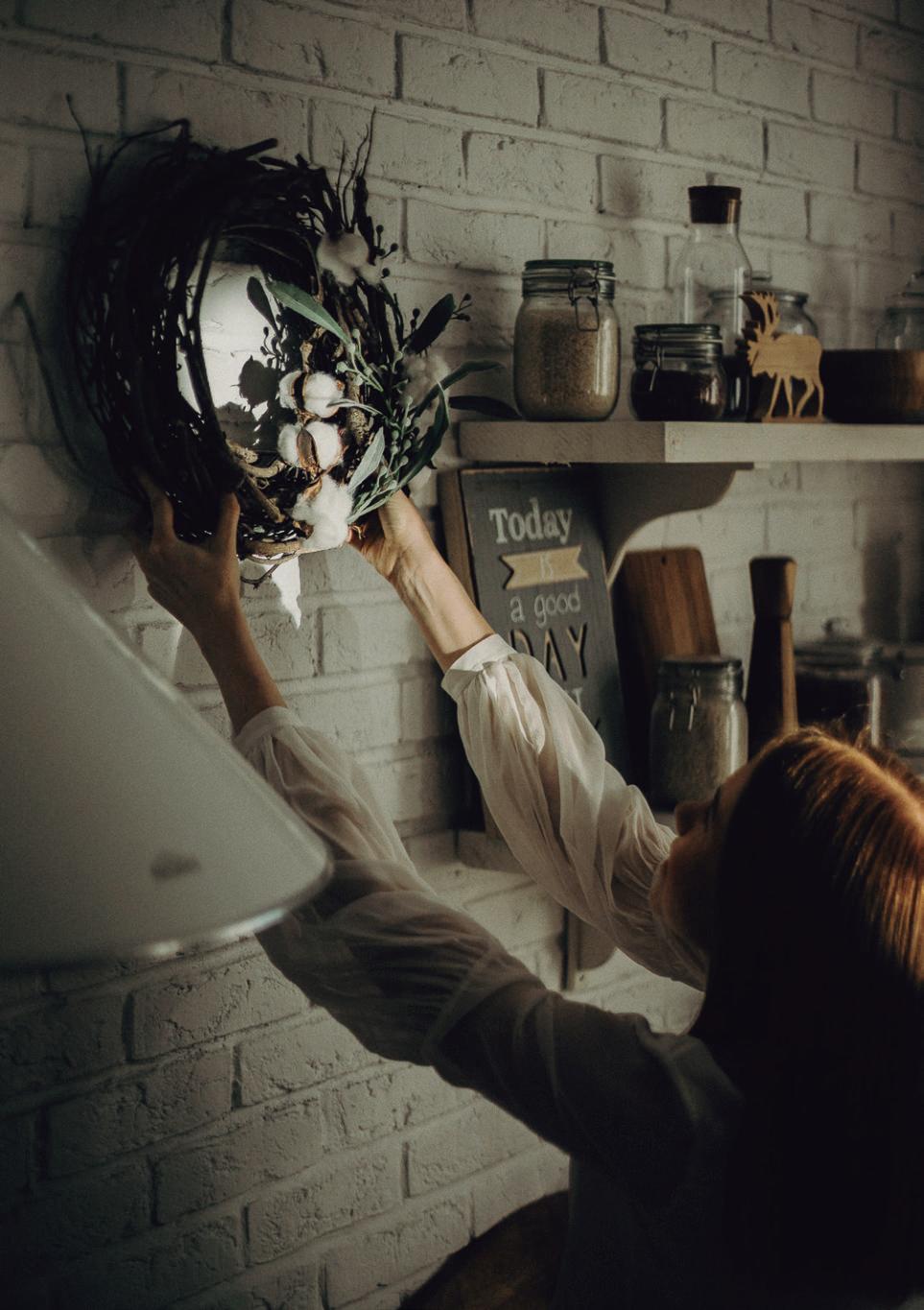
18

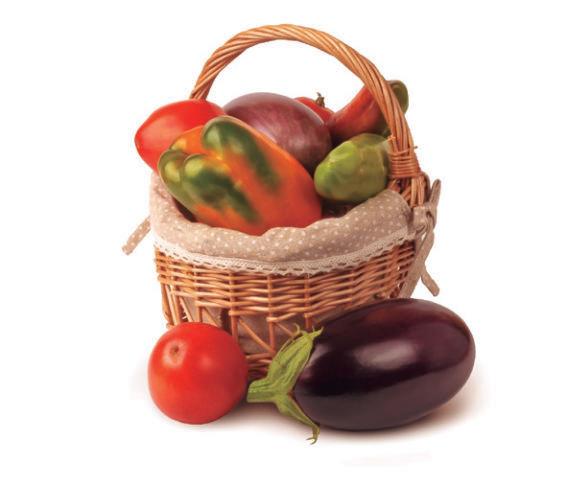
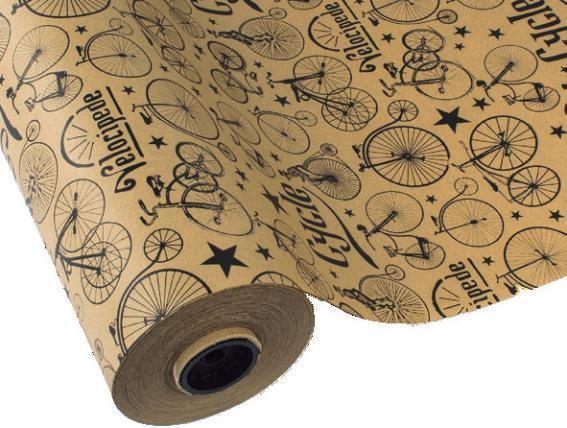
to help you get inspiration and if you have children, what better way to get prepared for Christmas than by having a craft session together and teaching them the importance of not buying plastic. Some of our favourite tree decorations are ones we have been given by others who have handmade them - they also make excellent gifts.
4. Toys
Christmas can be a difficult time to avoid plastic, there are so many temptations and habits that we are accustomed to, but, if you’ve been conscious about your waste and your use of plastic for a while, you will have hopefully been starting to think of ways to keep waste to a minimum at Christmas time too. In case you need some last-minute inspiration, have a look at these ideas:
1. Gifts.
Giving time and thought to your purchases this year can make all the difference when trying to aim for a zero waste or plastic-free Christmas. There are so many great ways you can avoid unnecessary plastic or waste when buying gifts and you can reduce your carbon footprint along the way too. For adults who like toiletries, opt for solid soaps, shampoos and even lotion bars and try to go to markets where you can buy locally-made products, you can complement these with accessories like natural loofah or wooden soap dishes. Alternatively, give an experience gift such as a spa treatment or tickets to the theatre, or even better, make a donation to charity or sponsor something/ someone.
2. Wrapping.
Remember the massive bin bag of wrapping paper your household can accumulate just on Christmas day? It is thought that in the UK alone the amount of wrapping paper used (and then thrown away) is enough to wrap around the equator 9 times!
(227,000 miles) And that’s just the UK... If you do want to use wrapping paper, then opt for the most natural ones that can be recycled when used and avoid plasticised paper, ribbon or bows too. Another idea is to wrap your presents in used fabric, newspaper or magazine pages for a funky twist, and instead of sellotape, use jute string or strips of fabric from old clothes that can be cut into strands. Additionally, tell the recipient of your gift to be thoughtful about how they use the wrapping and ask them to re-use or recycle as best they can.
3. Decorations
While the decorations aisles in all the shops can tempt you into upgrading your tree adornments or changing the colour scheme this year, why not opt for wooden, recycled, homemade or even edible tree decorations and handmade paper ones for the ceiling. There are a million posts and videos online
If, like me, you have a son who loves Lego, it can be really difficult to avoid plastic when children are young. Coupled with electronic devices and games and even many board games and craft kits coming with plastic pieces or wrapped in plastic. It seems like an impossible feat to achieve a plastic-free Christmas for little ones. However, you could aim to get a lot of gifts like these second-hand. Many items like Lego and board games can be bought on local ‘for sale’ online groups or via Ebay/Amazon’s second-hand sections and the quality is often very good. If everyone adopted this ideal, the demand -> production -> waste would all reduce. You could also consider getting wooden toys, books (second hand even better) or fabric toys well as those which use solar power or are made from recycled materials.
5. Food
This is another area where it can seem tricky to avoid plastic and waste in general. Let’s stop and have a think about the quantities we’re buying as well as the packaging our food is coming in and try to prevent waste. It’s becoming more and more well known that the meat industry has a huge impact on our environment. If you or your family are not ready to ditch the meat from your dinner table, then at the very least try to source your meat from local farms and producers who will have a minimal impact on



the environment and who have reared their animals in the best possible way.
When it comes to the vegetables and trimmings, visit your greengrocer or local market to ensure you can buy the veg loose and not wrapped in unnecessary plastic. Try to also get locally-grown produce and support your local organic farms where possible. If you’re buying sauces and condiments - get glass jars that can easily be reused or recycled and if you have the time to make things from scratch, you’re much more likely to reduce the packaging waste. Most of all, enjoy the time with family and friends, and be kind to the planet!
www.ecopassion.es

21 20 OTWO 05 / DECEMBER 2019 OTWO 05 / DECEMBER 2019

Cincomanerasdecelebraresteaño unaNavidadlibredeplásticos
Habiendo tantas tentaciones y estando tan acostumbrados a ciertos hábitos, las navidades pueden ser una época complicada si se quiere evitar el plástico. Pero si estamos lo suficientemente concienciados sobre nuestros residuos y nuestro uso de dicho material, seguramente hemos empezado a considerar alternativas para reducir al mínimo nuestros residuos también en esta época festiva. En caso de necesitar ideas de última hora, aquí proponemos algunas:
1. Regalos
Dedicar tiempo y reflexión a las compras de este año puede marcar la diferencia en cuanto al objetivo de celebrar unas navidades libres de plástico. Existen numerosas maneras de evitar el plástico innecesario, y con ello los residuos, a la hora de comprar regalos. Y de paso también reduciremos nuestra huella de carbono.
Para quienes gustan de adquirir productos de higiene personal y belleza existe la opción de los jabones, champús e incluso lociones de tipo sólido. Intenten comprar en mercados donde se puedan adquirir productos producidos localmente que pueden ser complementados con artículos como la lufa natural o jaboneras de madera. Otras alternativas pueden ser los regalos-experiencia como tratamientos de spa, entradas para el teatro o, aún mejor, las donaciones.


2. Papel de regalo
En el día de Navidad los regalos dejan una acumulación inmensa de papel de regalo. Se calcula que sólo en el Reino Unido la cantidad del papel de usar y tirar rodearía el diámetro de la tierra nueve veces (365.321 kilómetros) Y eso sólo con el Reino Unido. Si no queremos usar papel de regalo, basta con decantarse por el de composición más natural, reciclable, y evitar así el plastificado así como los lazos. Envolver los regalos con material textil usado o páginas de periódico o revistas constituye otra solución de efecto original y en lugar de cinta adhesiva de celo podemos emplear cuerdas o cordones de ropa usada, cortados a conveniencia. Asimismo, deberíamos decirle a la persona a la que regalamos algo que se conciencie respecto a cómo envolvemos los regalos además de pedirle que recicle todo lo que pueda.
3. Decoración
Frente a la tentación que sugieren los escaparates para saturar la decoración de nuestro árbol de Navidad existe la alternativa de optar por adornos de madera, material reciclado, caseros o incluso comestibles además de los de papel para colgarlos desde el techo. Existen millones de textos y videos en internet que nos pueden ayudar a inspirarnos y si se tienen hijos, qué mejor manera de preparar la Navidad que la de una sesión de manualidades en la que podemos inculcar la importancia de no comprar plástico. Al-
gunos de nuestros adornos de árbol predilectos son aquellos que hemos recibido de personas que los hicieron a mano, que a su vez pueden ser magníficas opciones para convertirse de nuevo en regalos.
4. Juguetes
Si tiene un hijo que adora el Lego, como el caso de mi hijo, puede resultar realmente complicado evitar la compra de productos de plástico cuando los niños son pequeños. Al igual que sucede con los dispositivos electrónicos y video-juegos, muchos juegos de mesa e incluso de manualidades tienen piezas o envoltorios de plástico. Para pues una misión imposible disponer unas navidades libres de plástico para los más pequeños. Sin embargo, se puede intentar adquirir muchos de estos productos de segunda mano. Muchos productos como los Lego y juegos de mesa están en el mercado local online las secciones de segunda mano de Ebay y Amazon y suelen tener buena calidad. Si todos adoptáramos este sistema ideal, en la cadena demanda-> producción ->residuos se reduciría en todos sus elementos. También podemos plantearnos la adquisición de juguetes de madera, libros (y mejor si son de segunda mano) o juguetes de trapo así como todos aquellos que funcionen con energía solar o estén fabricados a partir de materiales reciclados.
5. Comida Aquí tenemos otro campo en el cual puede parecer complicado evitar el plástico y la producción de residuos en general. De cara a intentar atajar el problema, reflexionemos sobre las cantidades que estamos adquiriendo así como sobre su envasado. Existe una evidencia creciente sobre el enorme impacto que la industria de alimentación cárnica tiene sobre el medio ambiente. Si ni nosotros ni nuestras familias
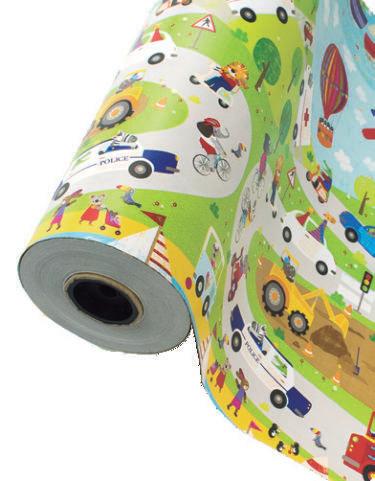
estamos dispuestos a eliminar la carne de nuestra mesa de comedor, lo menos que podemos hacer es comprar a productores locales cuyo stock tiene un mínimo impacto sobre el medio ambiente y cuyos animales son explotados de la mejor forma posible.
En lo concerniente a las verduras, los restos de trocearlas y pelarlas y de sus envases, visitemos nuestra frutería o vayamos al mercado local donde podemos pedir que nos sean vendidas sin envoltorios de plástico. Intentemos asimismo apoyar la producción de verdura y fruta locales así como a nuestras granjas en la medida de lo posible. Si vamos a comprar salsas y condimentos, apostemos por los botes de cristal que son fácilmente reutilizables o reciclables y si tenemos el tiempo de elaborar comidas sin adquirir productos ya elaborados, reduciremos los residuos de envasado con toda probabilidad.
Por encima de todo, disfrutemos de esta época con nuestros familiares y amigos y cuidemos nuestro planeta!
www.ecopassion.es

OTWO 05 / DECEMBER 2019 23 22 OTWO 05 / DECEMBER 2019
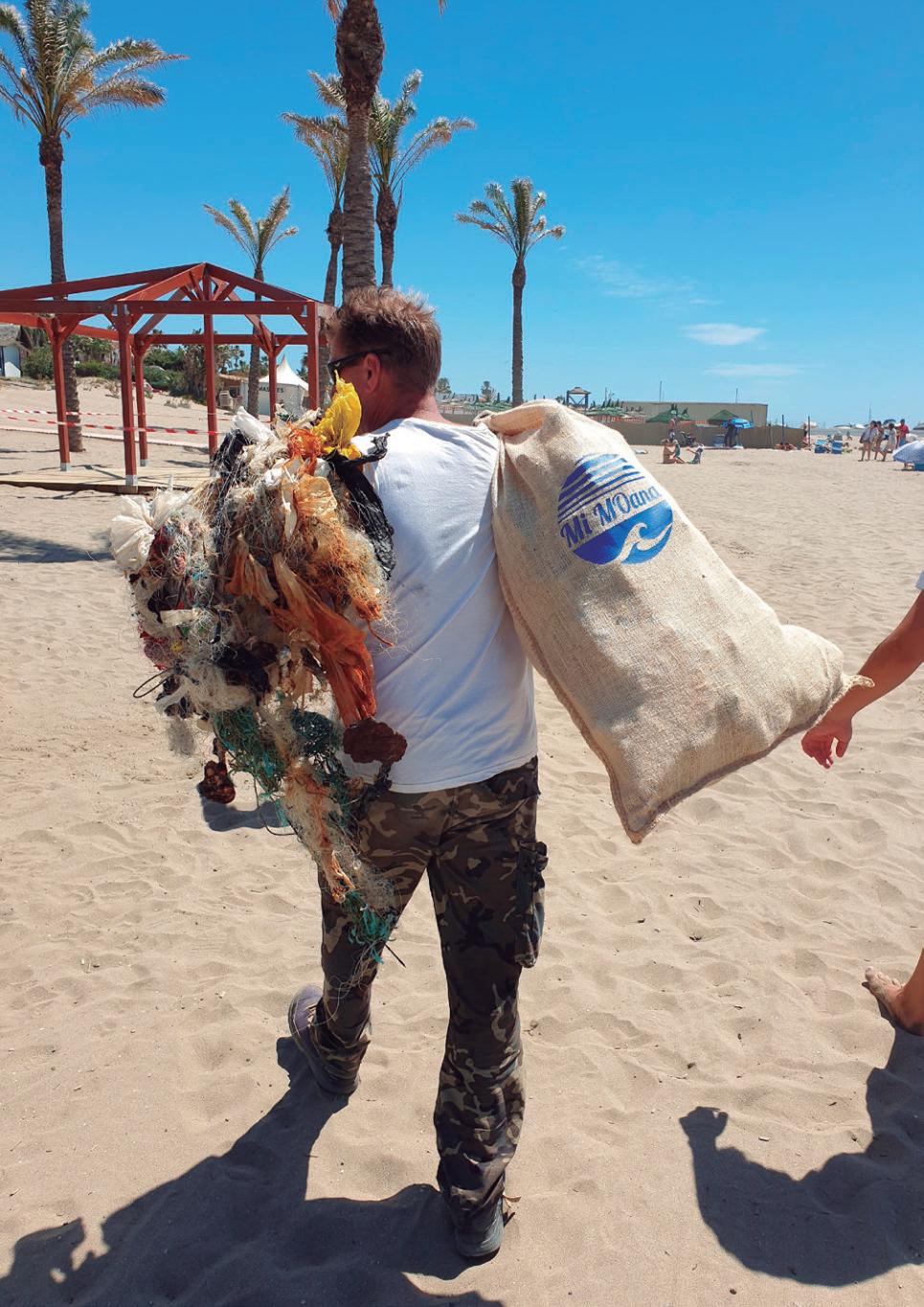
Mi Moana - Protecting the Costa del Sol’s oceans
Mi Moana is an environmental association, set up by mother and daughter team Natasha and Nikky Wegloop at the end of 2018, with the aim of protecting the ocean. Mi Moana means “My Ocean” in Hawaiian and they were inspired to start the charity after seeing plastic waste in the oceans on a diving holiday. When they returned to the Costa del Sol, they wanted to do their bit for their stretch of coastline and set up Mi Moana. They have committed to organize one beach clean-up per month and go into schools throughout the Costa del Sol to educate the next generation and help them reduce their impact on their environment.
Everyone can do their bit to protect the planet
In Mi Moana’s monthly beach cleans, everyone is invited to take part. They want as many volunteers as possible to come down and collect waste, which would otherwise go into the ocean, and learn about the effect of our actions and wasteful lifestyle. Mi Moana wants to educate the volunteers, their families and people enjoying the beach, on how to have less of an impact on our planet. They have an activity for kids at all their beach clean events, where they encourage children to look for microplastics in the sand and receive a reward for finding them and removing them from the environment. By doing so, and expanding their education programme, they hope that they can stop waste at the source and minimise what ends up in our oceans and on our beaches.
“Reuse or Refuse, that’s the message”, stresses Natasha Wegloop. “We have to find a way to stop using single use plastics, recycle and generally reduce our waste, not simply chuck things onto the street, onto our beaches, or into the sea. At this moment a garbage truck’s-worth of plastic ends up in the ocean every minute, this has to change! We can
clean up beaches for the next
100 years but if the next generation doesn´t change their attitude it will be for nothing.”
They are concerned about the effects on our planet, wildlife and also on our health and want to make a difference. Nikky Wegloop explains, “I think it is important to take action because if we don’t do our best to try to change the mentality and the modern ways of life, not much will be left for my generation and future generations. As divers, my mother and I can see the effect that our habits are having in a way you can’t at the surface. We know that just because you can’t see it, doesn’t mean it’s gone. I have decided to set up this charity to try to reduce pollution, because it isn’t only bad for nature, it is also bad for us.”
Natasha Wegloop adds, “In recent studies by universities in the Netherlands, micro and nano plastics have been found in human bloodstreams. We don’t know what effect this will have on our health in the long term, but I don’t think it will be good! This is why I decided to start to make a difference at a local level and inspire others to do the same.”
When asked what she thinks the planet will be like when she’s older, Nikky says, “In one word - dirty, or maybe even useless. There won’t be anything left for us to use.” But she is still positive and passionate about our ability to make a change. “It’s not to late to do something, but we need to take action right now. If we don’t change by 2050, there will be more plastic in the sea than fish. That is just 31 years away! I don’t think we are too late, but we don’t have much time to change.”
Businesses supporting the planet
It’s not just volunteers who are making a difference, businesses and Town Halls are supporting Mi Moana with their work.
OTWO 05 / DECEMBER 2019 25
Text: Georgina Shaw
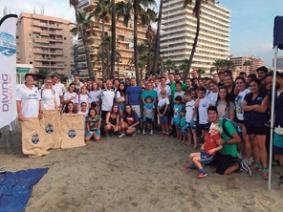
Local businesses Diving with Nic and Togi Data have been supporting the project since the beginning. Nicoli Unt from Diving with Nic has supported Mi Moana as part of every beach clean-up, donating diving equipment so their volunteer divers can remove waste directly from the ocean, while volunteers clean the beaches. On International Coastal CleanUp Day, Specsavers Ópticas in Fuengirola announced they were also supporting this important cause.
Store Director Amrik Sappal commented, “Specsavers Ópticas is committed to protecting the environment. We stopped using plastic bags in store last year and help our customers to recycle their old glasses and put them to good use through the Lions Club’s glasses recycling programme.
Now we are lending our support to Mi Moana, as we have been impressed by the education programme and beach clean events which Natasha Wegloop and her team are undertaking. Our team was delighted to attend the beach clean-up in September. We will be supporting future events and minimising our waste and environmental impact as much as possible in the store.”
Mi Moana are encouraging other businesses and brands to follow suit, reducing their waste and setting an example for their customers and employees by supporting environmental charities such as theirs. Mi Moana are looking for more sponsors to support their beach and underwater clean-ups and to start a powerful education programme for schools.
To find out more about their work, participate in their next beach clean-up, or become a sponsor please visit www.mimoana.com or follow them on Facebook @1mimoana
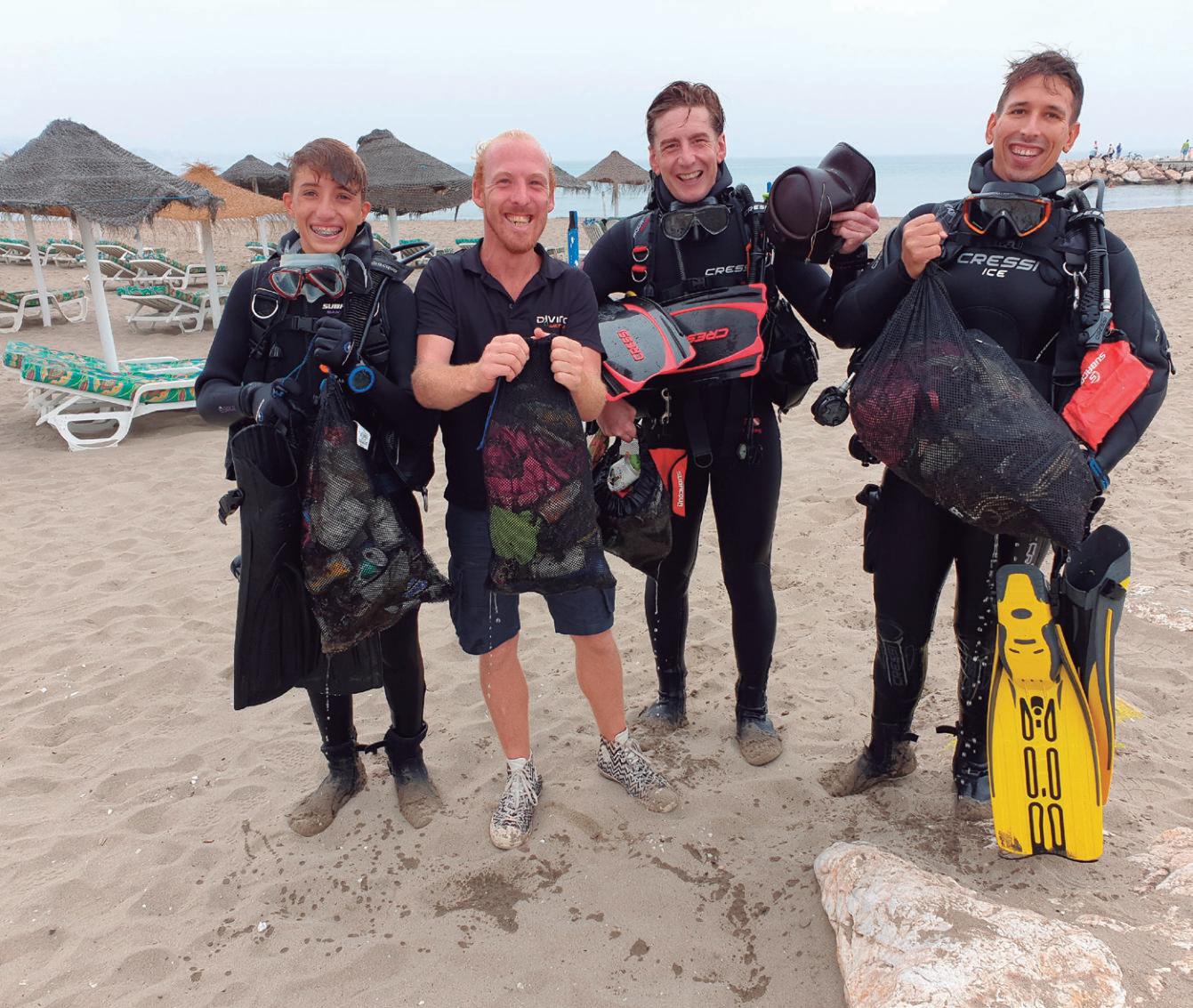
26 OTWO 05 / DECEMBER 2019 OTWO 05 / DECEMBER 2019 27


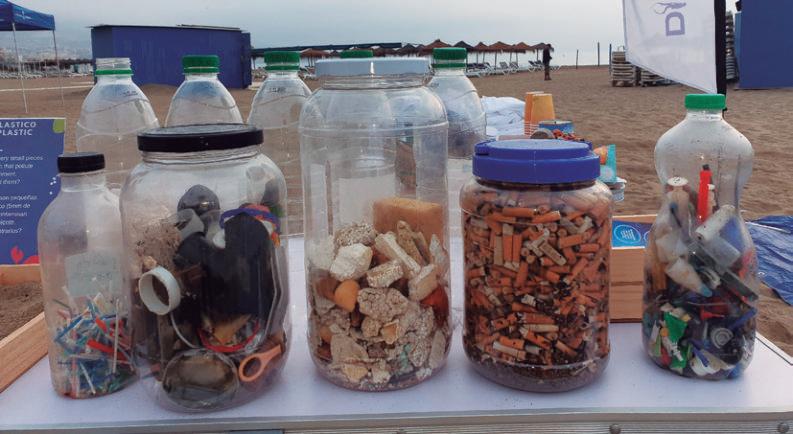
Mi Moana es una asociación medioambiental, creada a finales de 2018 por madre e hija, el equipo de Natasha y Nikky Wegloop, con el objetivo de proteger el mar. Mi Moana significa “Mi Océano” en hawaiano y la inspiración les vino después de ver residuos plásticos en los fondos marinos tras unas vacaciones de buceo. Cuando regresaron a la Costa del Sol, querían poner su granito de arena en el tramo de costa en el que viven y crear una base de Mi Moana. Las buceadoras, se han comprometido a organizar una limpieza de playa al mes y acuden a los colegios de toda la Costa del Sol para educar a la próxima generación y ayudarles a reducir el impacto en su entorno.
Todo el mundo puede hacer su parte para proteger el planeta
En las limpiezas mensuales de la playa de “Mi Moana”, todos están invitados a participar. Quieren reunir el mayor número de voluntarios posible para recoger los desechos, que de otra manera irían al mar, a la vez que aprenderían sobre el efecto que causan nuestras acciones y nuestro estilo de vida despilfarrador. “Mi Moana” quiere educar a los voluntarios, a sus familias y a las personas que disfrutan de la playa, sobre cómo causar menos impacto en nuestro planeta. Tienen una actividad para los niños en todas sus actividades de limpieza de playas, donde animan a los más pequeños a buscar micro plásticos en la arena y recibir una recompensa por encontrarlos y sacarlos del medio ambiente. Con
esta fórmula, amplían su programa de educación, con el objetivo de reducir las fuentes de desperdicios vertidos para minimizar las basuras que terminan en nuestros océanos y en nuestras playas.
“Reutilizar o Rechazar, ese es el mensaje”, subraya Natasha Wegloop. “Tenemos que encontrar la forma de dejar de usar plásticos de un solo uso, reciclar y generalmente reducir nuestros residuos, no dedicarnos a tirar cosas en la calle, en nuestras playas o en el mar. En la actualidad cada minuto el plástico de un camión de basura termina en el mar, ¡esto tiene que cambiar! Podemos limpiar las playas durante los próximos 100 años, pero si la próxima generación no cambia su actitud será en vano”.
Ellas están preocupadas por los efectos de todos estos vertidos en nuestro planeta, la vida silvestre y también en nuestra salud y quieren marcar la diferencia. Nikky Wegloop explica:”Creo que es importante actuar porque si no hacemos todo lo posible para intentar cambiar la mentalidad y las formas modernas de vida, no quedará mucho para mi generación y las generaciones futuras. Como buceadores, mi madre y yo podemos ver el efecto que nuestros hábitos de vida están causando, lo percibimos de una manera que no puedes ver desde la superficie. Sabemos que el hecho de que no puedas verlo, no significa que se haya ido. Decidí crear esta organización benéfica para tratar de reducir la contaminación, porque no sólo es malo para la naturaleza, también es malo para nosotros”.
Natasha Wegloop añade: “Estudios recientes de universidades de los Países Bajos, han encontrado micro y nano plásticos en el flujo sanguíneo de personas. No sabemos qué efecto tendrá esto en nuestra salud a largo plazo, ¡pero no creo que sea bueno! Esta es la razón por la que decidí empezar a marcar la diferencia a nivel local e inspirar a otros a hacer lo mismo”.
Cuando se le pregunta cómo piensa que será el planeta cuando sea mayor, Nikky dice: “En una palabra: sucio, o tal vez incluso inútil. No quedará nada que podamos usar”. Pero ella sigue siendo positiva y apasionada ante la capacidad y posibilidad de propiciar un cambio. “No es tarde para hacer algo, pero tenemos que tomar medidas ahora mismo. Si no cambiamos para 2050, habrá en el mar más plástico que peces. ¡Sólo son 31 años! No creo que sea demasiado tarde, pero el tiempo pasa rápido y hay que cambiar ya”.
Empresas que apoyan el planeta
No son sólo los voluntarios los que están haciendo la diferencia, las empresas y los ayuntamientos están apoyando a “Mi Moana” con su trabajo.
Las empresas locales Buceo con Nic y Togi Data, han estado apoyando el proyecto desde el principio. Nicoli Unt de Diving with Nic, ha apoyado a “Mi Moana” participando en cada limpieza de la playa, donando equipos de buceo para que sus buceadores puedan eliminar los desechos directamente del mar, mientras que los voluntarios limpian las playas. En
el Día Internacional de la Limpieza Costera, Specsavers Ópticas en Fuengirola, anunció que también apoyaban esta importante causa.
El director de la tienda, Amrik Sappal, comentó: “Specsavers Ópticas se compromete a proteger el medio ambiente. Dejamos de usar bolsas de plástico en la tienda el año pasado y ayudamos a nuestros clientes a reciclar sus gafas viejas, proponiendo darles un buen uso a través del programa de reciclaje de gafas del Club de Leones.
Ahora estamos prestando nuestro apoyo a “Mi Moana”, ya que nos ha impresionado el programa educativo y la actividad de limpieza en las playas que Natasha Wegloop y su equipo están llevando a cabo. Nuestro equipo estuvo encantado de asistir a la limpieza de septiembre. Apoyaremos eventos futuros y minimizaremos nuestros residuos e impacto ambiental tanto como sea posible en nuestra tienda”.
“Mi Moana” está animando a otras empresas y marcas a seguir su ejemplo, reduciendo sus residuos y dando ejemplo a sus clientes y empleados apoyando a organizaciones benéficas medioambientales como la suya. “Mi Moana” busca más patrocinadores para apoyar sus limpiezas de playa y submarinas, e iniciar un poderoso programa educativo para las escuelas.
Para obtener más información sobre su trabajo, participar en su próxima limpieza en la playa o convertirse en patrocinador, visite www.mimoana.com o sígalos en Facebook @1mimoana.
28 OTWO 05 / DECEMBER 2019 OTWO 05 / DECEMBER 2019 29
Mi Moana – Protegiendo los océanos de la Costa del Sol
My interest for the sea began at a very early age. I was only four when my step-dad Lewis, introduced me to the mysteries that lie beneath the ocean. Further, my grandfather Brian, has always been an avid fisherman with a few European and World fish species records to his name. Both my stepfather and grandfather have a great passion for the sea and have always respected it. They instilled a love and respect for the sea to both my younger brother Aaron and I.
My Grandad, now 66, began river fishing when he was just a small boy living in UK. He recalls leaving the first fish he ever caught out in the rain for three days trying to revive it! When he moved to Gibraltar, he took to sea fishing. At one point he joined the local EFSA club and in a bid to protect local species, was one of the pioneers in making sure there were limited sizes to the fish caught. He still carries the same ruler to measure when he’s unsure! When he’s out on his boat ‘Freedom’ he collects all the floating plastic and brings it back to shore to recycle it.
A couple of years ago Lewis, who is a Marine Biologist, together with my mum Melanie, decided to launch The Nautilus Project, a voluntary marine science educational program. The project runs different activities such as The Great Gibraltar Beach Cleans, Science Talks and Field Trips to schools, snorkelling and boat trips. We have done 49 beach cleans along our coastline and retrieved tonnes upon tonnes of plastic debris already.
My role in TNP team is to snorkel and help my stepdad find and bring out marine invertebrates on a catch, learn and release basis. I catch sea cucumbers, sea urchins, sea slugs, starfish, conchs, crabs, and even octopuses. We make sure they all return back to their habitat once Lewis teaches the school children all about these animals in a fun way which my friends really enjoy. Lewis has taught me how to become a strong, confident swimmer and how to snorkel responsibly. I take my job very seriously and I love learning about the sea with him. Snorkelling is one of my favourite hobbies and the historic Rosia Bay basin is the perfect place to learn and marvel at such amazing sea life.
At a recent snorkel I found a really large clam shell, pinna nobilis, which TNP now use at schools. Although I’m very proud of my achievement, I’m sad-
dened by the fact that these clams are decreasing in numbers around the Bay Of Gibraltar. I also spotted a cuttlefish at Rosia Bay and I took my chances to try and catch it with my hands. I was able to actually touch it but when I went to grab it, it slipped out of my hands swam away. I was so close! I think my stepdad was impressed.
As part of our family project, we have been raising awareness in Gibraltar on the effects single use plastics have in the sea. My brother and I now use bamboo toothbrushes, reusable water bottles, and carry bags for life in our satchels in case we have to run errands for my mum on our way back from school. We carry paper straws and recycling is a big part of our lives. We tell all our friends at school that small changes can make big differences in the Bay in Gibraltar.
The lady at the Pet Shop now greets me as ‘the boy that refuses the plastic bag!’ My mum always says we must lead by example.
This past summer we found a spider crab tangled in nylon fishing line. Luckily, we cut off all the line and released it back in the sea. These crabs are protected in Gibraltar so I was truly happy to be able to rescue one and for it to live another day.
A few weeks ago, I was sent out on a rescue mission. A sunfish had got stuck between some rocks and was in distress. I jumped into the sea with the fish and ensured it did not scratch itself against the rocks. When the rescue vessel arrived, I helped push the poor sunfish out to sea, near the boat. Chances are it survived!
Some dolphins and turtles have died on our shores due to plastic and this makes me very sad. My brother Aaron and I want to show Gibraltar and the whole world that children care about our ocean and our sea animals. We want to make a difference and protect them. If we all do our bit then, together we can make a big difference. Our motto is #BeTheChangeYouWishToSee
I hope that you’ve enjoyed reading this and that you will join my family and I as we help protect our sea animals! They really deserve for us humans to do better!

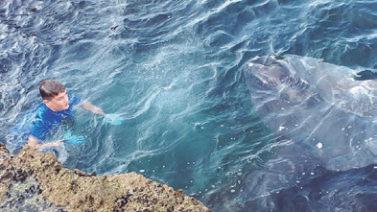


OTWO 05 / DECEMBER 2019 31 30 OTWO 05 / DECEMBER 2019
amor por el mar
Mi
Alexander Sanchez Soiza – The Nautilus Project volunteer – Age 13 - Gibraltar
Alexander Sanchez Soiza – The Nautilus Project volunteer Age 13 - Gibraltar

Mi interés por el mar comenzó a temprana edad. Tan solo tenía cuatro años cuando mi padrastro, Lewis, me descubrió los misterios que se encuentran bajo el mar. Además, mi abuelo Brian, siempre ha sido un apasionado pescador con algunos records europeos y mundiales a su nombre. Tanto mi padrastro como mi abuelo tienen una gran pasión por el mar y siempre lo han respetado. Ellos nos han inculcado a mi hermano pequeño Aaron y a mí, amor y respeto por el mar.
Mi abuelo, que ahora tiene 66 años, comenzó a pescar en el río cuando vivía en Reino Unido, siendo tan solo un niño. ¡Recuerda haber dejado el primer pez que atrapó bajo la lluvia durante tres días para intentar revivirlo! Cuando se trasladó a vivir a Gibraltar, se dedicó a pescar en el mar. Se unió al club local de la EFSA (European Federation of Sea Angler) y en un intento por proteger a las especies locales, fue pionero en difundir que los peces capturados deben cumplir con la normativa del tamaño mínimo de la establecido. ¡Aún lleva la misma regla para medir para asegurarse! Cuando está en su embarcación “Libertad” recoge todo el plástico que encuentra en la superficie y lo trae de vuelta a la costa para reciclarlo.
Hace un par de años Lewis, que es bióloga marina, junto con Melanie -mí madre-, decidieron arrancar The Nautilus Project, un programa de voluntariado educativo sobre ciencias del mar. El proyecto realiza diferentes actividades como The Great Gibraltar Beach Cleans (limpieza playa), Science Talks (charlas de ciencia) y Field Trips (salidas al campo) en las escuelas, submarinismo y excursiones en barco. Hemos realizado cuarenta y nueve limpiezas de playas a lo largo de nuestro litoral y recuperado toneladas de residuos plásticos.
Mi papel en el equipo de TNP (The Nautilus Project) es bucear y ayudar a mi padrastro a encontrar y traer invertebrados marinos para estudiarlos, aprender y volver a liberarlos. Pesco pepinos de mar, erizos, babosas, estrellas de mar, caracolas, cangrejos e incluso pulpos. Nos aseguramos de que todos regresen a su habitat una vez que Lewis enseñe a los niños de la escuela todo sobre estos animales de forma divertida con la que mis amigos disfrutan. Lewis me ha enseñado a cómo ser un nadador fuerte y segur y a bucear de forma responsable. Me tomo mi trabajo muy en serio y me encanta aprender sobre el mar con él. El buceo l es uno de mis pasatiempos favoritos y la histórica cuenca de Rosia Bay es el lugar perfecto para aprender y quedar prendado de la increíble vida marina.
En una inmersión reciente encontré una concha de almeja muy grande, pinna nobilis, que ahora se utiliza por el TNP en los colegios. Aunque estoy muy orgulloso, me entristece que estas almejas estén disminuyendo en número alrededor de la Bahía de Gibraltar. También vi una sepia en Rosia Bay e intenté atraparla con mis manos. Pude tocarla, pero cuando fui a agarrarla, se me escurrió. ¡Estaba tan cerca! Creo que mi padrastro quedó impresionado. Como parte de nuestro proyecto familiar, hemos estado sensibilizando en Gibraltar sobre los efectos que los plásticos desechables en el mar. Mi hermano y yo usamos ya cepillos de dientes de bambú, botellas de agua reutilizables, y llevamos bolsas ecológicas y reutilizables en la mochila por si tenemos que hacer algún mandado para mi madre al volver de la escuela. Llevamos pajitas de papel y el reciclaje es una gran parte de nuestras vidas. Les decimos a todos nuestros amigos en el cole que pequeños cambios como este, pueden marcar diferencias en la Bahía de Gibraltar.
¡La señora de la tienda de mascotas ahora me recibe como ‘el niño que no quiere bolsas de plástico! Y mi madre siempre nos dice que hay que predicar con el ejemplo. El verano pasado encontramos un cangrejo araña enredado en el hilo de pescar. Por suerte, pudimos cortarlo y devolverlo al mar. Estos cangrejos están protegidos en Gibraltar, así que me puse inmensamente feliz al poder rescatar uno y permitirle vivir un día más.
Hace unas semanas, me enviaron a una misión de rescate. Un pez luna se había atascado entre unas rocas y estaba en apuros. Salté al mar con los peces y me aseguré de que no se chocara contra las rocas. Cuando llegó el barco de rescate, ayudé a que se adentrase de nuevo en el mar, acompañando a la embarcación. ¡Lo más probable es que haya sobrevivido!
Algunos delfines y tortugas han muerto en nuestras costas debido al plástico y esto me pone muy triste. Mi hermano Aaron y yo queremos mostrar a Gibraltar y al mundo entero, que los niños se preocupan por nuestro océano y nuestros animales marinos. Queremos protegerlos y marcar diferencias. Si todos hacemos nuestra parte, juntos conseguiremos grandes diferencias. Nuestro hashtag es #BeTheChangeYouWishToSee (Sé el cambio que deseas ver).
¡Espero que hayan disfrutado leyendo y que se unan a mi familia y a mí mientras ayudamos a proteger a nuestros animales marinos! ¡Realmente merecen que los humanos lo hagamos mejor!
OTWO 05 / DECEMBER 2019 33 32 OTWO 05 / DECEMBER 2019

The Straits of Gibraltar, and more specifically the Bay of Algeciras in the province of Cádiz is no stranger to the problem of plastics and their impact on cetaceans.
The Bay of Algeciras plays an important role in the development of the life cycle of species such as the common dolphin, a species categorised as endangered according to the I.U.C.N (International Union for Conservation of Nature), which it uses for both reproduction and feeding. In fact, it is considered a vital area or “hotspot” for cetaceans. In addition to all of this data, it should be kept in mind that species such as the common whale (the second largest whale in the world) and the sperm whale pass through the entrance of the Bay, making it a sensitive area for maritime traffic, thus increasing the impact on marine creatures in the canal and the Bay of Algeciras.
In relation to plastic, the vast majority ends up in the sea. Unfortunately, and as can be seen in the photo that accompanies this article, they end up in the snouts of dolphins. This particular case shown in the photo was sighted three years ago in the Bay of Algeciras. Everything was attempted to try and to release it, but it was practically impossible due to the animals’ constant movement. After a few days, we stopped seeing him in his group, probably because he had died of starvation.
Verdemar Ecologists in Action warns of the landfill oceans have become in recent decades, which puts cetaceans at serious risk: a recent
34 OTWO 05 / DECEMBER 2019 OTWO 05 / DECEMBER 2019 35
Plástico asesino
Alfredo Valencia (Verdemar Ecologistas en Acción) Photographs: Rocío Espada.
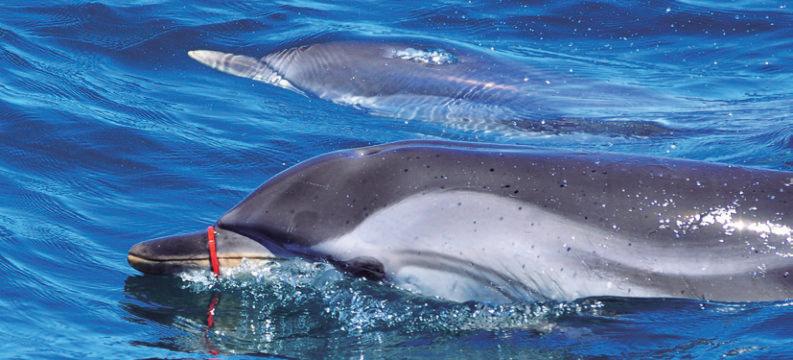
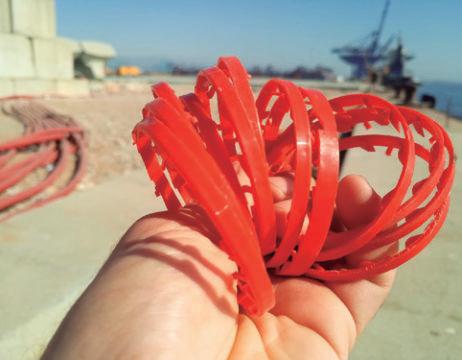
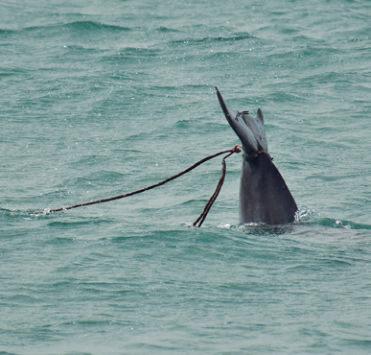
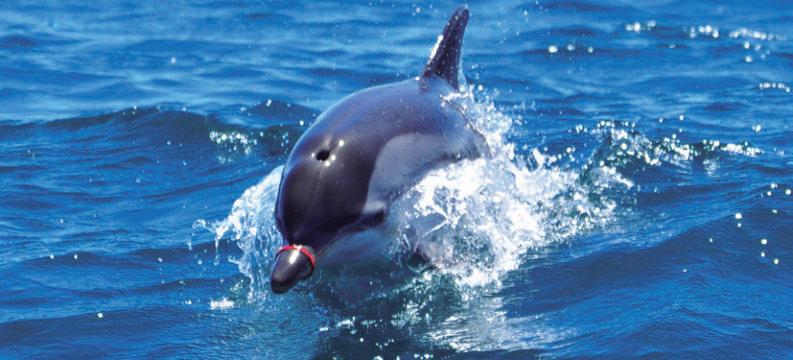
study has revealed that at least three out of every one hundred deaths of these animals can be directly attributed to problems derived from consuming plastic.
Since 1970, when trash was first discovered in the stomach of a cetacean, there have been 462 documented cases worldwide of whales, dolphins, sperm whales, pilot whales and turtles, that have eaten foreign objects; in half of the cases, plastics, in addition to increasingly used and discarded fishing lines and phantom nets were found.
Dolphins are the most affected by plastic waste thrown into the sea. It is increasingly common to see them dying on beaches, choking on plastic
bags. On other occasions, dolphins appear with “rings” in their snouts, preventing them from opening their mouths and therefore feeding. Another 33 underwater species are threatened. According to UN data, it is estimated that in every square kilometre of sea there are about 18,000 pieces of floating waste. 80% comes from the mainland and the rest is thrown in from ships. The most polluted sea is the Mediterranean, proof of this is data from Greenpeace, in which it notes that 79% of the plastic discarded up until the present day, has ended up in landfills or the environment.
Plastics have even been found 10,000 metres deep, and 30 million cans and plastic bottles are abandoned every single day in Spain.
El Estrecho de Gibraltar y más concretamente la Bahía de Algeciras en la provincia de Cádiz no es ajena al problema de los plásticos y su incidencia en los cetáceos.
La Bahía de Algeciras juega un papel importante para el desarrollo del ciclo vital de especies como el delfín común, especie categorizada como en peligro según la U.I.C.N. (Unión Internacional para la Conservación de la Naturaleza/ Fundación), que la utiliza para su reproducción y alimentación. De hecho, es considerada un punto caliente o “hotspot” para cetáceos. Además de todos estos datos hay que tener en cuenta que por la boca de la Bahía pasan en migración especies como el rorcual común (la segunda ballena más grande del mundo) y el cachalote, convirtiéndose en una zona sensible por el tráfico marítimo, aumentando así el impacto sobre los seres marinos en el canal y la Bahía de Algeciras.
En relación a los plásticos la gran mayoría terminan en el mar. Desgraciadamente, y como puede apreciarse en la foto que acompaña este artículo terminan en el hocico de los delfines. En este caso que se reseña en la foto se trata de un ejemplar avistado hace 3 años en la Bahía de Algeciras. Se intentó todo para liberarlo pero fue prácticamente imposible porque el animal tenía libre movimiento. Después de unos días, dejo de verse en su grupo, probablemente porque murió de inanición.
Verdemar Ecologistas en Acción recuerda el
vertedero en el que se han convertido los océanos en las últimas décadas que pone en grave riesgo a los cetáceos: un reciente estudio revela que al menos tres de cada cien muertes de estos animales pueden atribuirse directamente a problemas derivados de comer plástico.
Desde que en 1970 se descubrió por primera vez basura en el estómago de un cetáceo, se han documentado en todo el mundo 462 casos de ballenas, delfines, cachalotes, calderones y tortugas, que habían comido objetos extraños; en la mitad de los casos, plásticos, además de hilos de pesca cada vez más utilizados y desechados, y redes fantasma.
Los delfines son los más afectados por los residuos plásticos arrojados al mar. Cada vez es más frecuente verles agonizando en la playa atragantados con una bolsa. En otras ocasiones los delfines aparecen con estos “anillos” en el hocico impidiendoles abrir la boca y por lo tanto alimentarse. Otras 33 especies submarinas están amenazadas. Según datos de la ONU, se calcula que en cada kilómetro cuadrado hay unos 18.000 restos flotando. El 80% procede de tierra firme y el resto fue tirado desde los barcos. El mar más contaminado es el Mediterráneo, muestra de ello son los datos de la organización Greenpeace en los que reseña que el 79% de los plásticos desechados hasta hoy ha acabado en vertederos o el medio ambiente. Se han encontrado plásticos a 10.000 metros de profundidad, y cada día se abandonan 30 millones de latas y botellas de plástico en España.
36 OTWO 05 / DECEMBER 2019 OTWO 05 / DECEMBER 2019 37
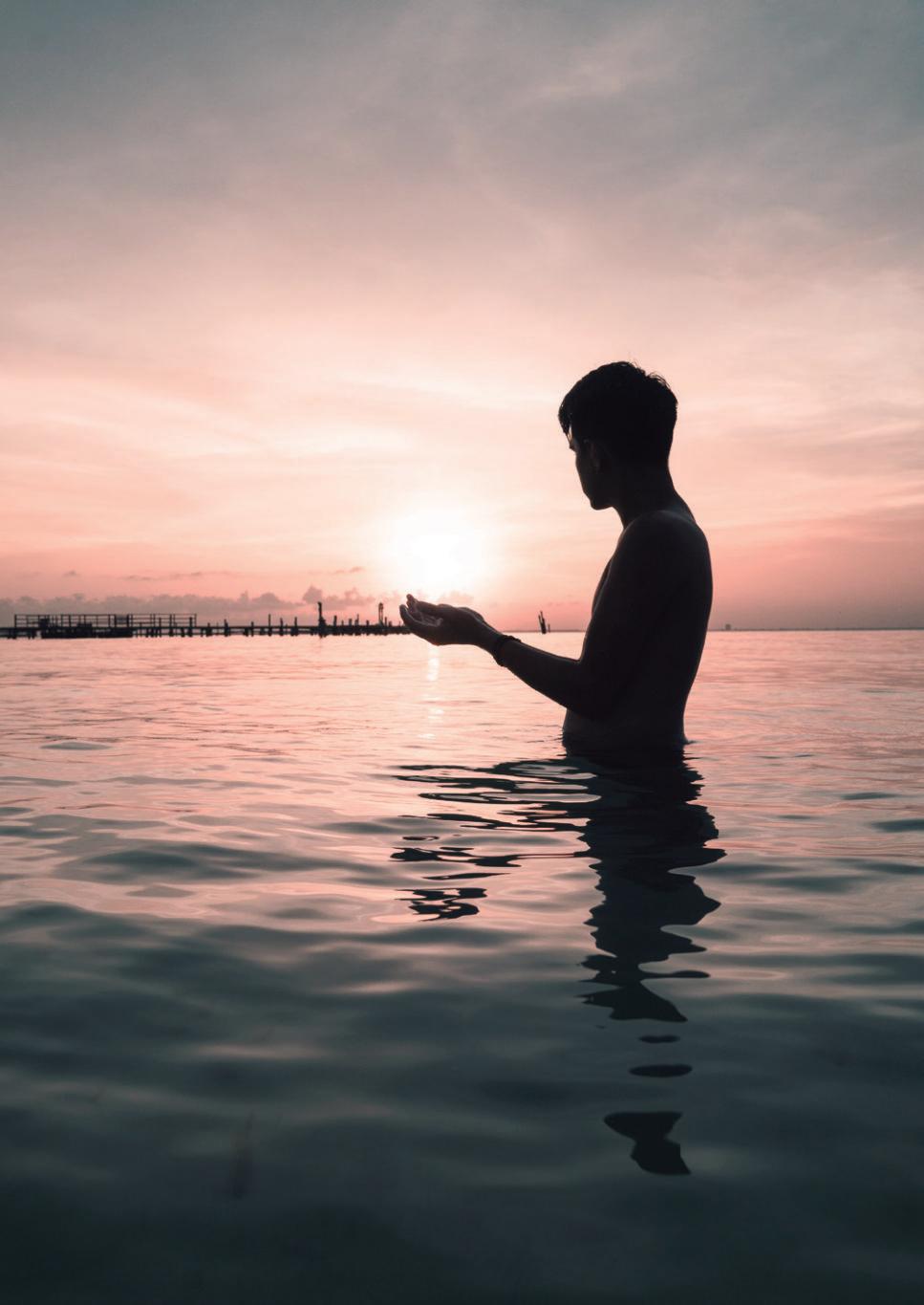
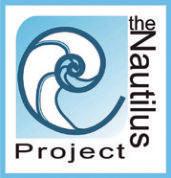
SUSTAINABLE TIPS FOR THE FESTIVE SEASON
Wrap Consciously
Used newspapers are an excellent alternative and look fab with a ribbon too!
Make your own presents
Your time, thoughtfulness and effort will be appreciated.
Find out the provenance of what you buy
Choose ethical, sustainable gifts.
Plan left over food
There are many local soup kitchens and centers that will benefit from good homemade food.
Take your own reusable bags
Place them in your bag when heading down to the shops for your Christmas shopping.
Reduce the amount of waste
Buy the necessary, there’s no need to over indulge.
Keep it local
Reduce the carbon footprint by purchasing in Gibraltar.
Let’s avoid landfill
Make sure you recycle all you can over this festive period.
Check out our local artisan stalls
There is much benefit in these hand crafted eco gifts.
Let’s bestow our Bay with a gift with Christmas too!
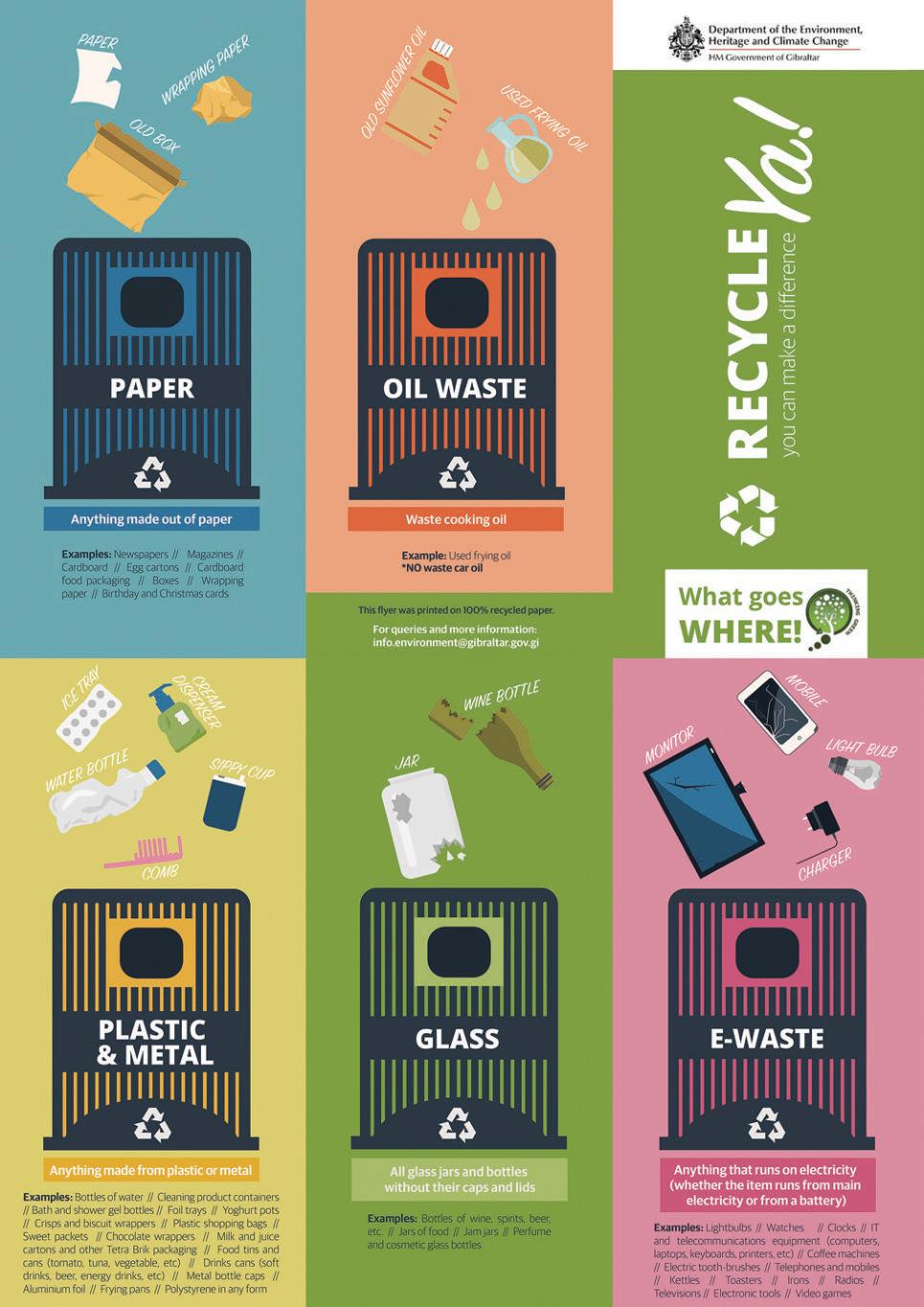
38 OTWO 05 / DECEMBER 2019
Eco-Park - Cardboard & Paper Recycling
PARQUE ECOLÓGICO: CARTÓN Y RECICLAJE DE PAPEL
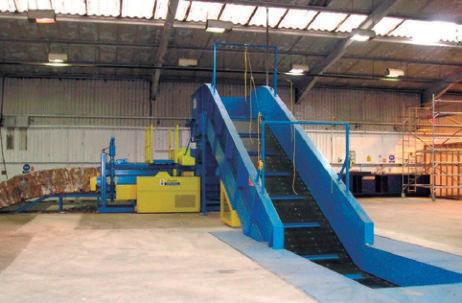
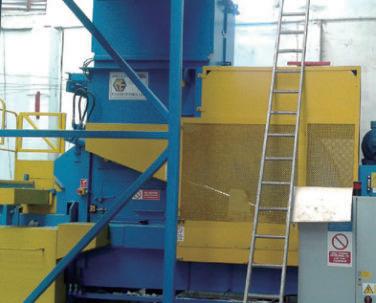 Written by Sarah Birch
Written by Sarah Birch
Photos provided by EcoPark
There are many myths and a lot scepticism surrounding recycling, with people often wondering where our recycling ends up, what happens once it reaches treatment stage, how to properly disposed of waste, and even what can and can’t be recycled.
To help answer some of these questions, we were invited to the Eco-Park on Devils Tower Road to check out what happens to Gibraltar’s recycling and where it all ends up. After seeing the amount that gets sent to be sorted, the sorting and transport process, and the stringent regulations and checks that goes into managing all of our waste, OTWO has teamed up with the Eco-Park for a monthly series summarising the journey each of these materials take from disposal to treatment, with some tips on how to make sure it actually gets recycled.
With Christmas just around the corner, our first instalment will look at cardboard and paper. Over the festive period, it is estimated that the average households waste goes up by a staggering 30%. Cardboard and paper make up a large chunk of this waste, with the equivalent of 365,000 km of wrapping paper and 1 billion Christmas cards ending up in land fill each year in the UK alone.
But paper and cardboard are not only easily recycled, they can be recycled into good quality paper and cardboard products up to 7 times! After which they can also be used in lower grade products such as egg cartons.
So, before chucking it all in the bin when Christmas day is over, think about recycling it instead!
1. After your cardboard and paper items are left in the appropriate recycling bins, it is collected 7-8 times a day and transported to the Eco Park. Collections are doubled during the Christmas period!
2. Once it arrives at the Eco-Park, the waste is unloaded by hand, paper and cardboard are separated, and contaminants such as plastic or polystyrene are removed.
3. Cardboard is placed into an industrial bailer and compressed into large bails. Each one weighing 600kg and measuring 80cm x 160cm.
4. Paper is placed through a compactor that can accommodate up to 600kg of paper at any one time.
5. Once there is enough to transport (approximately 25 bails of cardboard), an application for an export permit must be completed 24hrs before it is due to cross the border. Stringent checks are in place to ensure no hazardous materials are included.
6. The bails are then transported to the authorised treatment facility in Estepona for treatment.
7. Cardboard and paper are separated into different grades of quality and type. They are then shredded, pulped to create a slurry using water, filtered to remove any other materials or inks, rolled and dried, and then pressed once again into new sheets of card or paper.
Hay muchos mitos y mucha desconfianza en torno al reciclaje, pues los ciudadanos a menudo se preguntan qué ocurre tras nuestro reciclaje particular en casa, qué sucede una vez que llega a la etapa de tratamiento, cómo se eliminan los residuos de forma adecuada, e incluso qué se puede y qué no se puede reciclar.
Para ayudar a responder a algunas de estas preguntas, fuimos invitados al Eco-Park en Devils Tower Road donde comprobamos in situ cómo se lleva a cabo el tratamiento de residuos en Gibraltar y dónde termina todo. Después de ver la cantidad de residuos qué deben ser reordenados, el proceso de clasificación y transporte, y las estrictas regulaciones y controles que se destina a la gestión de todos nuestros residuos, OTWO se ha asociado con el Eco-Park para realizar un artículo mensual para explicar el recorrido de los distintos materiales desde la eliminación hasta el tratamiento, con algunos consejos sobre cómo asegurarse de que estamos haciendo lo correcto para el reciclado.
Con la Navidad a la vuelta de la esquina, en nuestra primera entrega daremos unas claves sobre el cartón y el papel. Durante el período festivo, se estima que el promedio de residuos de los hogares sube un 30%, algo asombroso. El cartón y el papel conforman una gran parte de estos residuos, con el equivalente a 365.000 km de papel de regalo y 1.000 millones de tarjetas de Navidad que terminan en cada año en los vertederos, solo en el Reino Unido.
Pero el papel y el cartón no sólo se reciclan fácilmente, ¡pueden tener vida reciclada hasta en siete ocasiones y con buena calidad! Posteriormente,
también se pueden utilizar en productos de menor calidad como cartones de huevos.
Así que, antes de tirarlo todo a la basura cuando termine el día de Navidad, ¡piensa en reciclarlo en el lugar correcto!
1. Después de depositar sus restos de cartón y papel en los contenedores de reciclaje apropiados, se recoge 7-8 veces al día y se transporta al Eco Parque. ¡Las recogidas se duplican durante el período navideño!
2. Una vez que llega al Eco-Park, los residuos se descargan a mano, el papel y el cartón se separan, y se eliminan contaminantes como el plástico o el poliestireno.
3. El cartón se coloca en un achicador industrial y se comprime en grandes fardos o balas. Cada uno pesa 600 kg y mide 80 cm x 160 cm.
4. El papel se coloca a través de un compactador que puede ajustar hasta 600 kg de papel en cualquier momento.
5. Una vez que haya suficiente transporte (aproximadamente 25 fardos de cartón), se debe completar en 24 horas una solicitud de permiso de exportación antes de que llegue a la frontera. Se han puesto en marcha controles estrictos para garantizar que no se incluyan materiales peligrosos.
6. Los fardos se transportan al centro de tratamiento autorizado en Estepona para su tratamiento.
7. El cartón y el papel se separan en diferentes grados de calidad y tipo. Luego se trituran, se convierten en pulpa para crear una mezcla con agua, se filtran para eliminar cualquier otro material o tinta, se enrollan y se secan, para posteriormente presionarlos en nuevas hojas de cartulina o papel.
OTWO 05 / DECEMBER 2019 41 40 OTWO 05 / DECEMBER 2019
DO’S
• Make sure that your cardboard and paper goes into the right bins and is not mixed with other materials.
• Remove any tape or other plastics where possible.
• Pizza boxes aren’t usually recycled due to grease, but if part of the box is clean, make sure that it is torn off and placed in recycling.
DON’TS
• Place cardboard or paper that is contaminated with food or grease into recycling bins.
• Place cardboard in bags with other mixed items. Separating items is extremely important, as any bag with mixed items will not be sorted, often ending up in landfill.
• If cardboard is wet, leave it to dry before disposing of it.

HACER
• Asegúrese de que su cartón y papel entren en los contenedores correctos y no se mezclen con otros materiales.
• Retire cualquier cinta u otros plásticos siempre que sea posible.
• Las cajas de pizza no suelen reciclarse debido a la grasa, pero si parte de la caja está limpia, asegúrese de ARRANCARLA y colocarla en el lugar de reciclaje adecuado.
NO HACER
• Coloque cartón o papel contaminado con alimentos o grasa en contenedores de reciclaje.
• Coloque el cartón en las bolsas con otros artículos mezclados. Separar los artículos es extremadamente importante, ya que cualquier bolsa con artículos mezclados no se clasificará, a menudo terminando en el vertedero.
• Si el cartón está mojado, déjelo secar antes de desecharlo
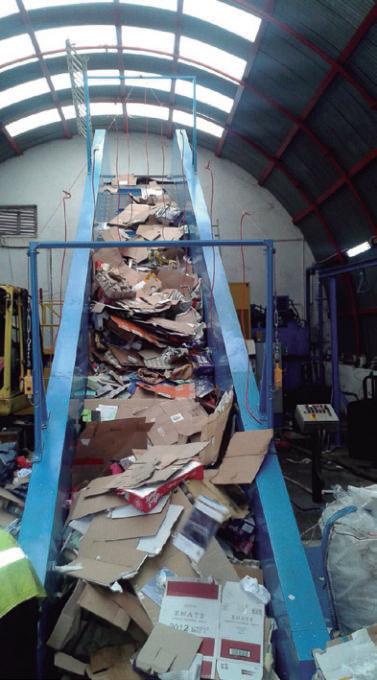

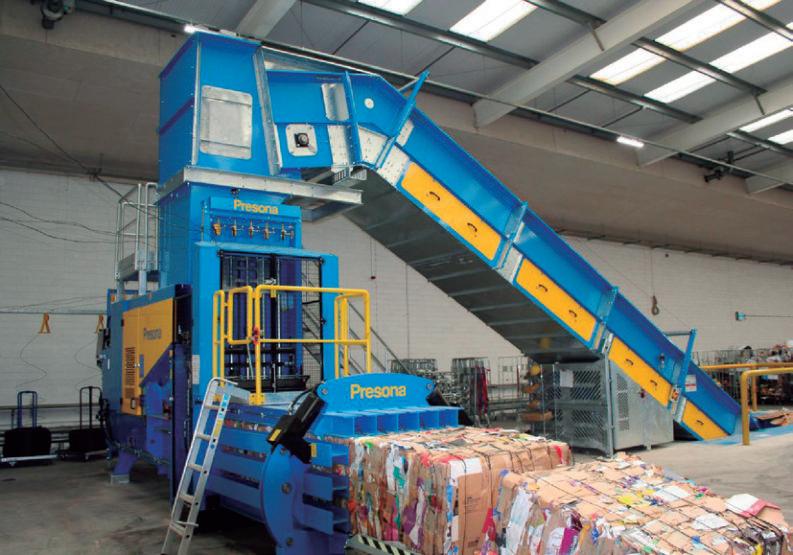

OTWO 05 / DECEMBER 2019 43 42 OTWO 05 / DECEMBER 2019
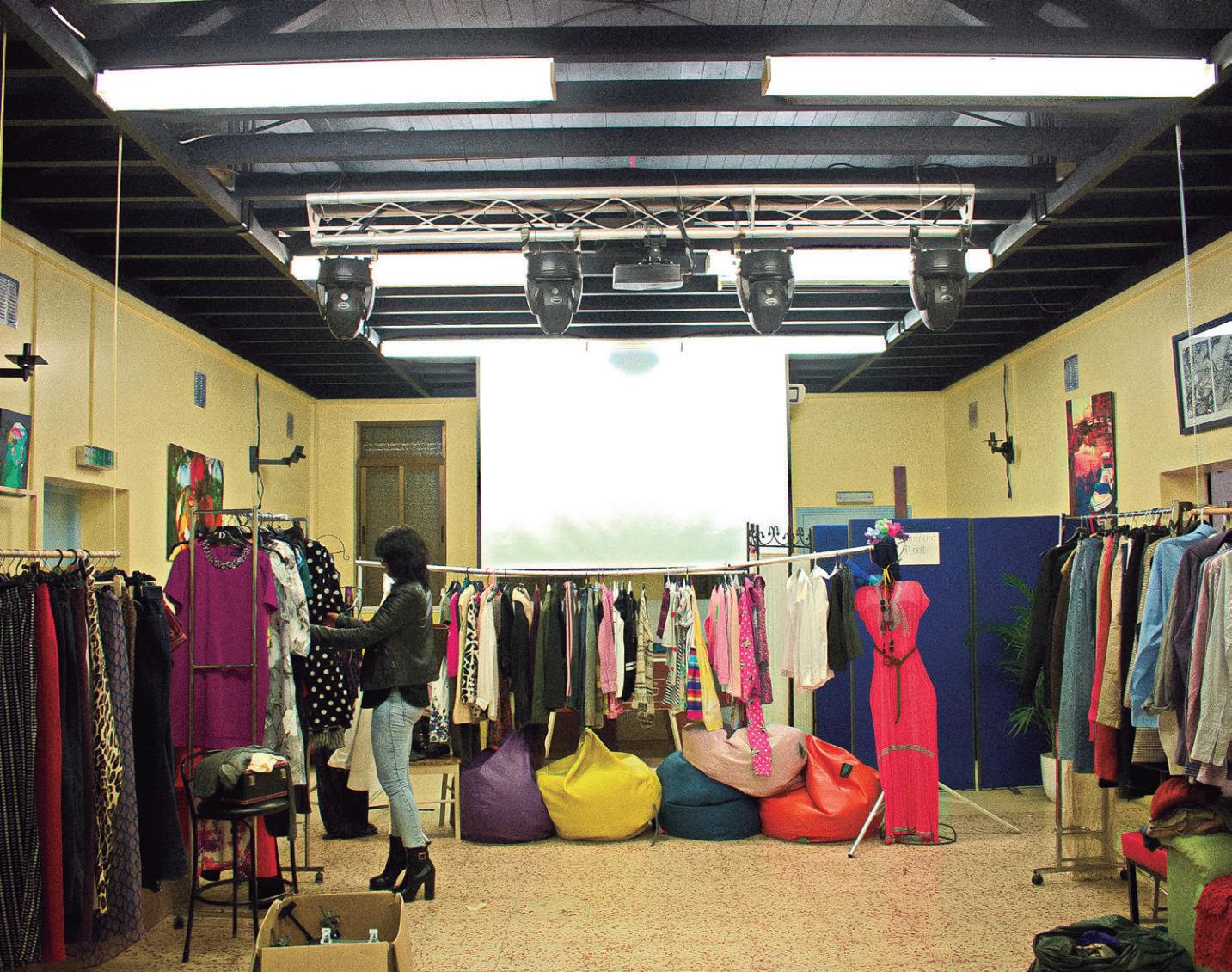
Swap over Shop

The Gibraltar Youth Service is committing to going green, with a series of different projects and events that aim to not only educate young people, but also encourage the community to develop a conscious awareness of how we live, buy and use items.
To promote reusing and recycling, the first ‘Swap over Shop’ day took place at the Youth Centre at the beginning of November. Organised by youth club members concerned with greenhouse gas contributions attributed to non-biodegradable clothing, this clothing exchange event invited members of the community to come along and donate unwanted clothes and then swap them for other donated items. Clothing exchanges have proved very popular around the world, helping people to save money and waste less, whilst promoting a circular economy with a smaller carbon footprint. At the ‘Swap over Shop’ event, each item brought in was exchanged for a button. Using these buttons as ‘currency’, you could then swap one button for another item of your choice. There was a great selection of styles and sizes available, as well as shoes and other accessories.
Speaking to organisers, their hope is that events like this raise awareness of the fashion industry’s environmental impact, encouraging locals to make smarter choices and to think more about the purchases they make. In turn, leading to a new culture of buying lifetime pieces, lending clothes, and even upcycling items rather than disposing of them.
Currently, the clothing industry is one of the Intercambios
OTWO 05 / DECEMBER 2019 45 44 OTWO 05 / DECEMBER 2019
Photos and Text by Sarah Birch
world’s largest polluters, accounting for 20% of global CO2 emissions. Alarmingly, this amount is anticipated to rise to 25% by 2050, making it the second largest CO2 emitting industry in the world.
Clothing production is also incredibly water intensive, consuming 10% of the fresh water used across all industries. That number is set to double by 2030.
General household waste, particularly plastic packaging, is often talked about in terms of its environmental impact; however, clothing waste is rarely discussed. Most clothes are now made from synthetics, such as polyester, nylon and acrylic, all derived from plastic. These three widely used materials take an age to decompose, contaminate land and waterways and produce harmful greenhouse gases.
There are now several ethically sourced and environmentally friendly clothing lines out there, but the
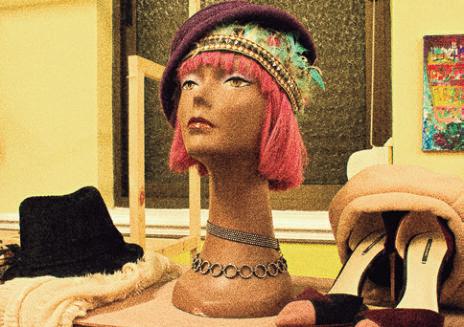

demand for new and cheap clothing has to abate. An awareness of the environmental damage caused by this massive industry should play a bigger part in consumers choices and the amount of clothes we buy.
Recently, the Youth Service also held another clothing related project called ‘Rags to Riches’. Kids were invited to get creative and give old items of clothing a new lease of life by decorating them with donated materials. With the aim of demonstrating that old items can be upcycled and reused, creating less waste.
With 300,000 tonnes of clothing worth £12.5 billion ending up in land fill in the UK last year, most of which was perfectly wearable, reusable or easy to repair, we hope that the ‘Swap over Shop’ event is the first of many in Gib, becoming a regular feature on the Youth Service calendar.
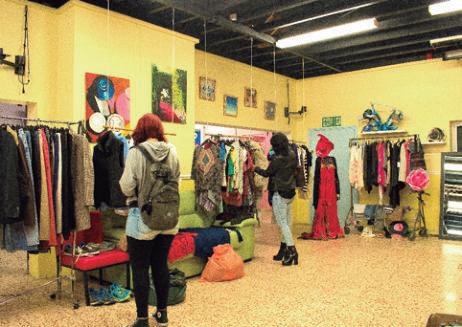
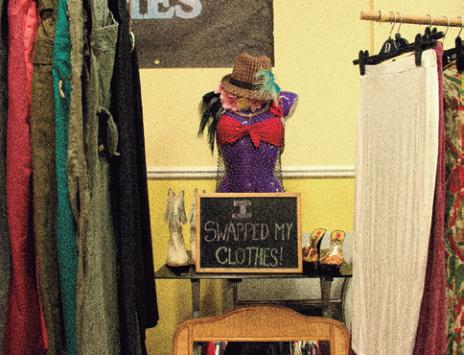
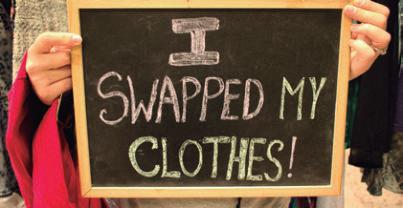
El Servicio De la Juventud gibraltareño, se ha comprometido a ser más ecológico, con una serie de proyectos y eventos diferentes que tienen como objetivo no sólo educar a los jóvenes, sino también animar a la comunidad a desarrollar una conciencia sobre cómo vivimos, cómo compramos y cómo utilizamos determinados artículos.
Para promover la reutilización y el reciclaje, el primer día de “Swap over Shop” tuvo lugar en el Centro Juvenil a principios de noviembre. Organizado por miembros del club juvenil preocupados por la aportación de gases de efecto invernadero achacado a la ropa no biodegradable, este evento de intercambio de ropa, invitó a los miembros de la comunidad a participar y donar prendas que ya no utilizan e intercambiarlas por otros artículos aportados por los implicados en esta cita.
Los intercambios de ropa han demostrado ser muy populares en todo el mundo, ayudando a la gente a ahorrar dinero y desperdiciar menos, a la vez que promueven una economía circular con una menor huella de carbono.
En el evento “Swap over Shop”, cada artículo aportado se cambió por un botón. Usando estos botones como ‘moneda’, podías intercambiar tu botón por un artículo de tu elección. Entre las aportaciones había disponibles una gran selección de estilos y tamaños, a la vez que zapatos y otros accesorios.
Hablando con los organizadores, su ilusión es que eventos como este sensibilicen y generen conciencia sobre el impacto ambiental de la industria textil, animando a los ciudadanos para que participen y tomen decisiones más inteligentes, parándose a pensar en las compras que se llevan a cabo diariamente. Además, actividades como esta, conducen a una nueva cultura que comprará piezas de larga vida, préstamos de ropa e incluso al reciclaje de artículos en lugar de desecharlos.
En la actualidad, la industria de la moda es uno de los mayores contaminadores del mundo, representando el 20% de las emisiones globales de CO2. De
forma alarmante, se prevé que esta cantidad aumente al 25% para 2050, convirtiéndola en la segunda industria emisora de CO2 más grande del mundo.
La producción de ropa también es increíblemente potente en gasto de agua, consumiendo el 10% del agua dulce utilizada por el global de las industrias. Ese número se duplicará en 2030.
A menudo se habla en general de los desechos domésticos, en particular de los envases de plástico, en términos de su impacto ambiental; sin embargo, los desechos de ropa rara vez se ponen en la palestra. La mayoría de las prendas se fabrican con materiales sintéticos, como poliéster, nylon y acrílico, todos ellos derivados del plástico. Estos tres materiales ampliamente utilizados tardan mucho en descomponerse, contaminan la tierra y las vías fluviales, produciendo gases nocivos de efecto invernadero.
Ahora hay varios fabricantes con otra ética industrial y varias líneas de vestir de origen ecológico, pero es imprescindible que la demanda de ropa nueva y barata disminuya. La conciencia del daño ambiental causado por esta industria masiva debería desempeñar un papel más importante en las decisiones de los consumidores y en la cantidad de ropa que compramos.
Recientemente, el Servicio de Juventud también llevó a cabo otro proyecto relacionado con la ropa llamado “Rags to Riches” (De harapos a bienestar). Se invitó a los niños a crear dándoles una nueva vida a las prendas de vestir viejas dándoles nueva vida adornándolas con materiales donados. El objetivo era demostrarles que las prendas antiguas pueden ser recicladas y reutilizadas, creando menos desperdicios. 300.000 toneladas de ropa por valor de 12.500 millones de libras terminaron el pasado año en los vertederos del Reino Unido el pasado año, la mayoría de ellas eran perfectamente ponibles, reutilizables o fáciles de reparar, con estos datos esperamos que el evento ‘Swap over Shop’ sea el primero de muchos en Gib, convirtiéndose en una cita habitual en el calendario del Servicio Juvenil.

OTWO 05 / DECEMBER 2019 47 46 OTWO 05 / DECEMBER 2019

Mi querida bicicleta
José Antonio Duarte Sastre & Ángel Luis Duarte Sastre Laboratorio Urbano de la Bicicleta
49 48
The bicycle has been, and is a part of our lives. Its discovery, its learning, gives the person a certain freedom that they will never forget, just like walking or swimming. In addition, it is the protagonist of stories within each family, and also within our region, just as it was in many other places, the bicycle was the protagonist in the day-to-day routine of our grandparents or our parents, in their daily trips to the market, to work, to the city centre, to the town next door ... even to cross the border.
Today the bicycle is considered a form of “active transport” that improves the health of the population, a tool for sport and a leisure activity, although in some high-income countries beyond being seen as a healthy alternative, many people also use it as another means of transport, finding the necessary space in their cities to enjoy the advantages it brings for taking daily journeys in a more efficient way than using a car; at the same time as reuniting them with their city and with its spaces ... the city is, once again, also reunited with them.
In this article about Bicycles, we want to highlight not only the need for them, but their usefulness and potential, given that they are once again becoming the protagonist of many cities. Cities that are reclaiming the vitality of its streets and breathing a different and dynamic air, all when its citizens choose to ride and traverse them by pedalling.
For this, we will analyse the actions that the Urban Bicycle Laboratory (LUB) collective have been developing for some years to recover the urban culture of the bicycle in the municipalities of the Metropolitan Area of the Campo de Gibraltar. With small practices to stimulate and encourage its use in the urban environment, which currently has a population close to 270,000 inhabitants (not counting those in Gibraltar), these actions can be operated both individually, as well as jointly within the group of municipalities that form the area, and its results can be easily extrapolated to other similar sized cities.
The Urban Bicycle Laboratory
The Urban Bicycle Laboratory (LUB) is a non-profit association, an urban laboratory whose main purpose is to promote activities and scientific dissemination in which the benefits of the bicycle are recognised, both for individuals and for society as
La bicicleta ha formado y forma parte de nuestras vidas. Su descubrimiento, su aprendizaje, dota a la persona de una cierta libertad que nunca va a olvidarse, como el caminar o nadar. Además, es protagonista de historias en cada familia y en el caso de nuestra comarca, como en muchos otros lugares, la bicicleta fue protagonista en el día a día de las rutinas de nuestros abuelos o de nuestros padres, en sus desplazamientos diarios al mercado, al trabajo, al centro de la ciudad, a la ciudad de al lado… incluso para cruzar la frontera.
Hoy en día la bicicleta es considerada como una forma de “transporte activo” que mejora la salud de la población, un instrumento deportivo, de ocio, aunque en algunos países de altos ingresos más allá de verse como una alternativa saludable muchas personas vuelven a utilizarla como otro medio de transporte más y encuentran el espacio necesario en las ciudades para disfrutar de sus ventajas en los desplazamientos cotidianos de una manera más eficiente que usando el automóvil; al mismo tiempo que van reencontrándose con la ciudad, con sus espacios… y la ciudad, vuelve a reencontrarse con ellos.
En este artículo sobre la Bicicleta queremos poner de manifiesto no solo la necesidad, sino su utilidad y posibilidades, dado que ésta vuelve a ser protagonista en muchas ciudades, las cuales vuelven a retomar el vitalismo de sus calles y a respirar una dinámica diferente cuando sus ciudadanos la pasean, las transitan, a pedales.
Para ello, analizamos las acciones que desde el colectivo Laboratorio Urbano de la Bicicleta (LUB) hemos venido desarrollando desde hace unos años para recuperar la cultura urbana de la bicicleta en los municipios del Área Metropolitana del Campo de Gibraltar. Con pequeñas prácticas para dinamizar e incitar a su uso en el ámbito urbano, que en la actualidad cuenta con una población cercana a los 270.000 habitantes (sin contar los de Gibraltar), estas acciones se trabajan tanto de forma individual como conjunta en el grupo de municipios que la forman, y sus resultados pueden ser fácilmente extrapolables a otras ciudades de tamaños similares.
El Laboratorio Urbano de la Bicicleta Laboratorio Urbano de la Bicicleta (LUB) es una asociación sin ánimo de lucro, un laboratorio urbano

51 50 OTWO 05 / DECEMBER 2019
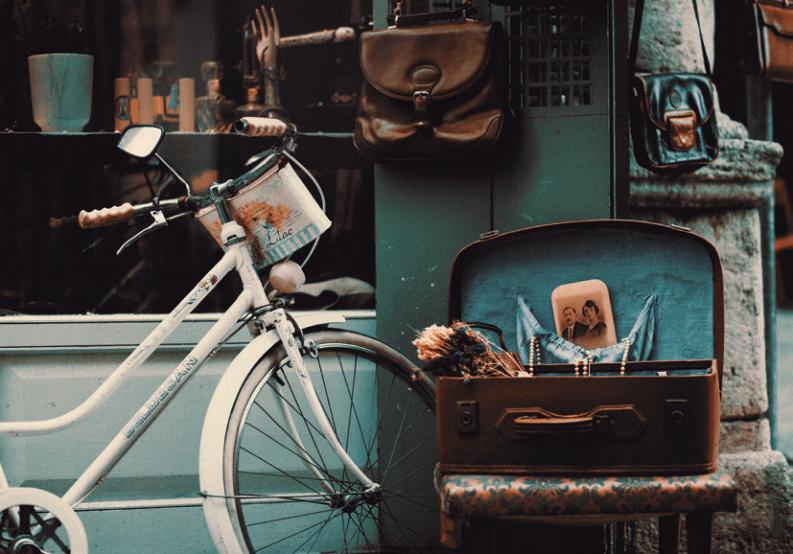
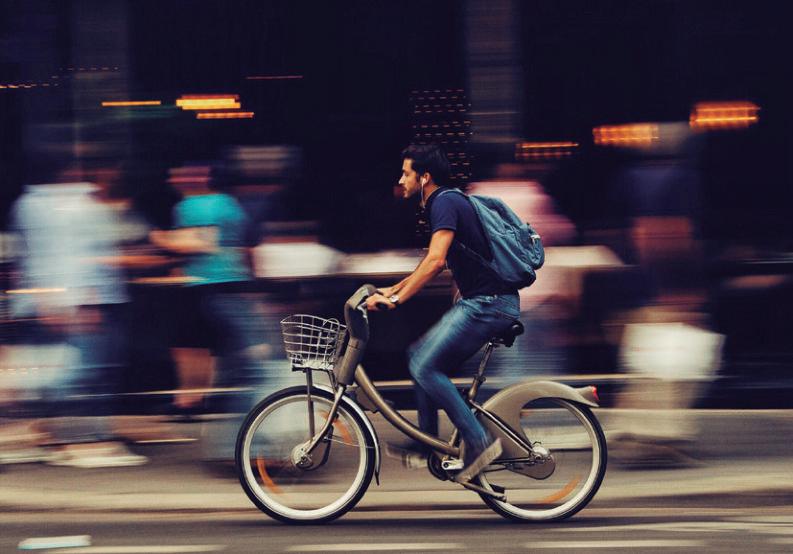
a whole. LUB investigates the reasons why, and the consequences produced by the use of bicycles in the urban public space, as well as its impacts on health, transport and mobility, the environment and the citizen, from the psychosociological perspective.
One of the main premises on which LUB works is that of the reclaimed concept “Think Global - Act Local”, which was originally coined by Patrick Geddes in the early 20th century. The concept consists of addressing global problems with local interventions that allow a change in the dynamics of that environment, not only to benefit from it, but to be a part of that process of global change, both from an environmental and a social stand point.
LUB was born on the one hand, as a result of a group of colleagues and friends dedicated to research, and on the other, as a commitment to a different way of understanding society. The hobby, or rather the passion for the urban bicycle, illustrates the different forms of expression that the members of the collective have gradually developed: not understanding it just as an object of leisure, but as an alternative mode of transport, a protagonist in the day to day lives of many people, and increasingly, in many cities.
Although the research process demonstrates the individual benefits that can be achieved with its daily use, not only from a sporting approach, but as a daily and recurrent means of transport when using a healthy, sustainable and non-motorised mobility method (Larsen and El-Geneidy (2011), Heinen et al. (2011), Köhler et al. (2009), Morency et al. (2011)), the bicycle can answer two of the major problems in cities: on the one hand, pollution, because it not only reduces emissions of CO2 and other gases down to nothing compared to motorised modes, but it also prevents the exposure of citizens to aspects of acoustic pollution, and on the other, making people the main protagonists of their own streets and public spaces, irrevocably contributing to the improvement of quality of life in cities (Borja and Muxí, 2003). In addition, and as advised by WHO (World Health Organisation (Armstrong et al., 2008.)), the use of a bicycle enables users the practice of physical activity (not necessarily sports), which if done for around thirty minutes a day covers the needs required by much of the population against a sedentary lifestyle.
cuyo principal fin es el de promover actividades y la divulgación científica en las que se reconozcan los beneficios de la bicicleta, tanto para los individuos como la sociedad en su conjunto. LUB investiga sobre las razones y las consecuencias que el uso de la bicicleta produce en el espacio público urbano, y sus incidencias sobre la salud, el transporte y la movilidad, el medio ambiente y el ciudadano, desde la perspectiva psicosociológica.
Una de las principales premisas sobre las que trabaja LUB es la del recuperado concepto “Think Global – Act Local” acuñado en su fundamentación por Patrick Geddes a principios del s. XX, que consiste en atender a problemas globales con intervenciones locales que permitan un cambio en la dinámica de ese entorno y no solo genere un beneficio en éste, sino que sea parte de ese proceso de cambio global, tanto desde el punto de vista ambiental como social. LUB nace así como resultado de un grupo de compañeros y amigos dedicados a la investigación, por un lado, y comprometidos con una forma diferente de entender la sociedad, por otro. La afición, o más bien pasión por la bicicleta urbana, explica esa forma de expresión diferente que poco a poco han ido desarrollando los miembros del colectivo: entenderla no como objeto de ocio, sino como un modo alternativo de transporte, protagonista en el día a día de muchas personas y, cada vez más, de muchas ciudades.
A pesar de que la labor de investigación nos demuestra los beneficios individuales que se pueden conseguir con un uso cotidiano de la misma, no ya desde el enfoque deportivo, sino como medio de transporte en aquellos desplazamientos diarios recurrentes al apostar por una movilidad no motorizada, saludable y sostenible (Larsen y El-Geneidy (2011), Heinen et al. (2011), Köhler et al. (2009), Morency et al. (2011)), la bicicleta puede responder a dos de los grandes problemas en las ciudades: por un lado, la contaminación, pues no solo reduce a la nada las emisiones de CO2 y otros gases respecto de los modos motorizados, sino que desde el aspecto acústico también evita a la ciudadanía a su exposición, y por otro, devolver a las personas el protagonismo en la calle, en el espacio público, contribuyendo irremediablemente a la mejora de la calidad de vida en las ciudades (Borja y Muxí, 2003).
52 OTWO 05 / DECEMBER 2019 OTWO 05 / DECEMBER 2019 53
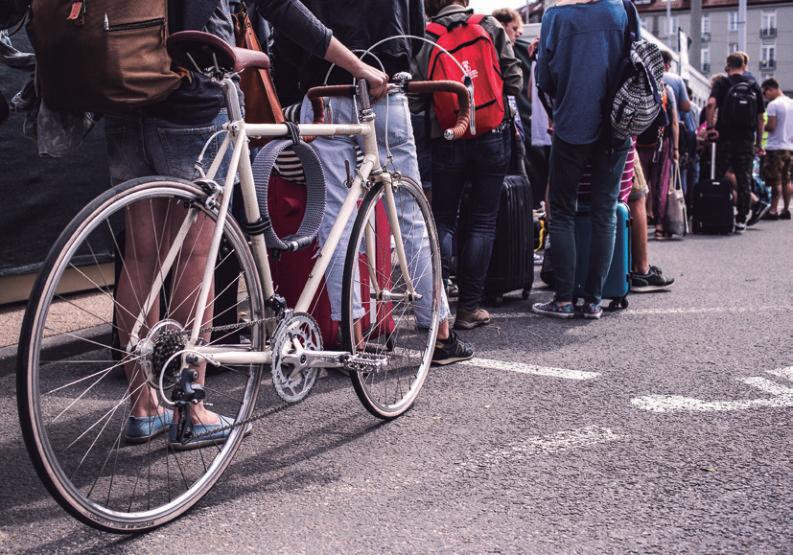
An action as simple and as easy as picking up a bicycle from a storage room every day and leaving the car parked, will not only mean an individual improvement from the perspective of health, but also an economic one.
But if it on top of the above it also contributes to improving our surroundings, creating more pleasant landscapes and quieter and more liveable cities, as a whole it will add towards environmental sustainability and reduce the consumption of natural resources.
With these substantiations and the realities of the Campo de Gibraltar (our acting environment), we were presented with the opportunity and the need to restore the bicycle and its culture, because in every home in the region today it is common to hear occasional talk and anecdotes of a family member who travelled via bicycle routes to cross the border every day, to travel to Algeciras, or to go to San Roque, all of which seem impossible nowadays... in short, as a working tool to make a living. LUB is revisiting this; the possibility of encouraging a habit that, for a long time, was a reality and just another element of the
Además, el uso de la bicicleta, tal como vienen a indicarnos en la OMS (Armstrong et al., 2008.), permite una práctica de actividad física (no necesariamente deportiva) que si se hace en torno a los treinta minutos diarios cubre las necesidades que gran parte de la población precisa en contra del sedentarismo.
Una acción tan simple y sencilla como descolgar la bicicleta del trastero y dejar el vehículo aparcado cada día no sólo va a suponer una mejora individual desde un punto de vista saludable, sino también económico.
Pero si además contribuye a una mejora de nuestro entorno, paisajes más agradables, ciudades más tranquilas, más habitables, en su conjunto sumará de cara a la sostenibilidad ambiental y reducir el consumo de recursos.
Con esta fundamentación y la realidad del Campo de Gibraltar (nuestro entorno de actuación), se nos presentaba la oportunidad y necesidad de recuperar la bicicleta y su cultura, pues en todo hogar de la comarca hoy en día es habitual oír hablar en alguna ocasión, de anécdotas de algún familiar que recorría
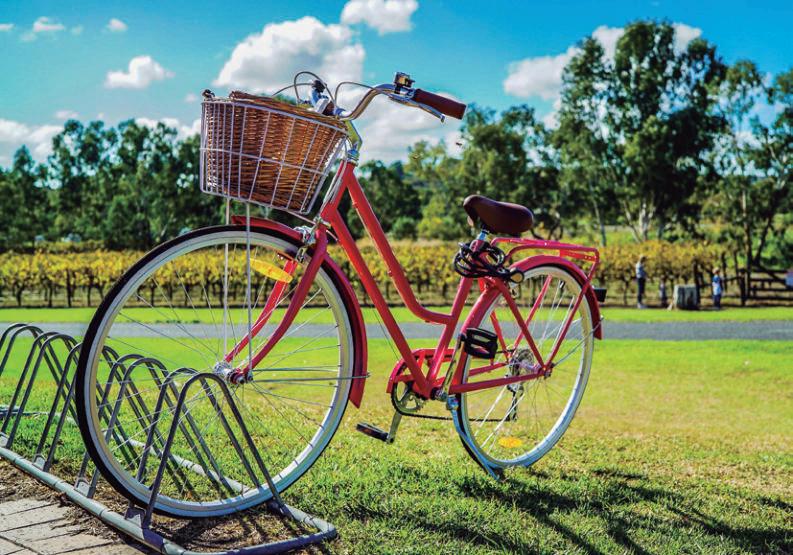
areas landscape, because there is no other way of understanding the bicycle other than by considering its culture.
The Campo de Gibraltar is considered one of the nine Metropolitan Areas of Andalusia, with an area of approximately 1,530 km2 and a population close to 270,000 inhabitants with a characteristic that makes it unquestionably unique - the border crossing with Gibraltar. Accessed through Customs in La Linea de la Concepcion, it is considered one of the hottest border crossings in Europe, through which an average of 35,000 people, 12,000 passenger cars, 4,000 two-wheelers (motorcycles, mopeds) pass through each day, as well as bicycles (more than 530 bikes on average per day, (according to LUB data)) and 300 trucks (ABC, 2013.) Then there is the passage through the Straits via the Port of Algeciras, which, according to official Civil Protection data, saw 2,548,764 passengers and 594,876 vehicles crossing through departures and arrivals just last year. These two aspects unequivocally highlight both the day to day life, and the culture of a region that is accustomed to people passing through it.
trayectos en bicicleta, hoy imposibles, para cruzar la frontera cada día, desplazarse hasta Algeciras, acercarse a San Roque…., en definitiva, como herramienta de trabajo para ganarse la vida. LUB se replantea así, la posibilidad de impulsar un hábito que, durante mucho tiempo, fue una realidad y un elemento más del paisaje en esa zona, pues no queda otra forma de entender la bicicleta si no es desde la cultura de ésta.
El Campo de Gibraltar está considerado como una de las nueve Áreas Metropolitanas de Andalucía, con una extensión de aproximadamente 1.530 Km2 y una Población cercana a los 270.000 habitantes con una característica que lo hace indiscutiblemente singular, como es el cruce de fronteras con Gibraltar, a través de la Aduana en La Línea de la Concepción, considerado como uno de los pasos fronterizos más calientes de Europa por el que pasan cada día una media de 35.000 personas, 12.000 turismos, 4.000 vehículos a dos ruedas (motocicletas, ciclomotores y bicicletas (más de 530 bicis de media al día, según datos de LUB)) y 300 camiones. (ABC, 2013) y el Paso del Estrecho a través del Puerto de Algeciras, que
54 OTWO 05 / DECEMBER 2019 OTWO 05 / DECEMBER 2019 55
At the urban mobility level, certain problems and difficulties can be identified on a metropolitan scale, which both individually and jointly affect the municipalities that make up this metropolitan area (Duarte et al., 2014):
• Extreme dependence on cars for daily recurring trips.
• Lack of short-term action plans to develop Non-Motorized modes of transport.
• There is no single vision of the problem: each municipality faces different issues, with their own mechanisms.
Due to this, certain difficulties have been detected that prevent the implementation of actions outlined in the PMUS (Plan for Sustainable Urban Mobility) to be initiated, and measure the proposed indicators (Duarte et al., 2014), mainly due to:
• Lack of Financing to implement the PMUS.
• Lack of Human Resources.
• Disorganisation (Who will implement it? Who will coordinate?).
• Lack of Preparation.
• Lack of guidance and backing in the implementation and development process.
• No belief that it will succeed (Lack of political and cultural awareness).
Taking action to “Re-establish the Bicycle” in the Campo de Gibraltar
With this starting data, and with the firm conviction that with small incremental actions we can achieve the objective of seeing the bicycle return to the region as an active transport option at an urban level, our collective has put in motion different cross-sectional lines of action, both from the point of view of citizen activism and research:
• Environment-Health.
• Urban Planning-Transportation.
• Training-Education-Promotion.
• Social-Solidarity.
• Cultural-Psychosociological-Anthropological.
All of the actions correspond with each of the disciplines embraced by our association. The link with collaborating professionals or entities together with their respective skills, can serve as support for the bicycle, generating a very positive synergy for the collective.
el pasado año 2014 tuvo en salida y retorno un cruce de 2.548.764 pasajeros y 594.876 vehículos, según los datos oficiales de Protección Civil hechos públicos. Estos dos aspectos marcan inequívocamente tanto el día a día, como la cultura de una comarca acostumbrada a las personas de paso.
A nivel de movilidad urbana se pueden identificar ciertos problemas y dificultades a escala metropolitana, que tanto de forma individual como conjunta afectan a los municipios que forman esta Área metropolitana (Duarte et al., 2014):
• Extrema dependencia del coche en viajes recurrentes diarios.
• Falta de planificación a corto plazo de acciones para desarrollar los Modos No Motorizados.
• No hay una única visión del problema: cada municipio afronta los problemas de forma distinta, con sus propias herramientas.
De esta forma, se detectan ciertas dificultades para iniciar la implantación de las acciones contempladas en los PMUS y medir los indicadores propuestos en ellos (Duarte et al., 2014), principalmente debido a :
• Falta de Financiación para implantar el PMUS
• Falta de Recursos Humanos
• Desorganización (¿Quién va a implantarlo? ¿Quién coordina?)
• Falta de Preparación
• Falta de guía y acompañamiento en elproceso de implantación y desarrollo
• No se cree en el éxito (Falta de sensibilidad política y cultural).
Pasando a la acción para “Recuperar la Bicicleta” en el Campo de Gibraltar
Con estos datos de partida, y con la firme convicción de que con pequeñas acciones se puede ir sumando para conseguir el objetivo de ver nuevamente hecha realidad la bicicleta como opción de transporte activo a nivel urbano en la comarca, se han puesto en marcha por parte de nuestro colectivo diferentes líneas de actuación transversales tanto desde el punto de vista del activismo ciudadano como de investigación:

This way, the actions carried out are aimed towards placing the bicycle as a major, or even minor protagonist, but one that is present. Thus, in the two years since we were founded, we have been able to carry out activities such as:
.- Charity bicycle events, urban bicycle routes
.- Educational promotion campaigns for the local administration (Town Halls, Public Transport Management Companies, University)
.- Planning and implementation of different actions in several of the municipalities of Campo de Gibraltar for the European Mobility Week.
.- Restoring in some municipalities and collaborating in others, for the implementation of Bicycle Day.
.- Design, manufacture and installation of recycled and donated bike racks.
.- Participation in the Social Bureau of the Metropolitan Transport Consortium of the Campo de Gibraltar.
.- Advice to public and private entities for the implementation of actions to improve mobility and incorporate bicycles as a means of travelling to work.
.- Advice for the conversion of roads to 30kph limit streets and for 30kph zones in urban centres
.- Collaborative agreements with the local administration and some public entities..- Participation in the drafting process of regional regulations such as the Andalusian Bicycle Plan and the Andalusian Law of Sustainable Mobility.
.- Participation in the programme of the Friendly City of the Junta de Andalucía.
• Medioambiente-Salud
• Urbanismo-Transporte
• Formación-Educación-Promoción
• Social-Solidario
• Cultural-Psicosociológico-Antropológico
Todas ellas son acordes a cada una de las disciplinas que integran nuestra asociación. La vinculación con profesionales colaboradores o entidades que desde su ámbito, pueden servir de apoyo a la bicicleta, generan una sinergia muy positiva para el colectivo.
De esta forma, las acciones que se llevan a cabo van encaminadas a colocar la bicicleta como protagonista mayor o menor, pero siempre presente. Así, hemos podido realizar en un período cercano a los dos años desde nuestro nacimiento, actividades como:
.- Rutas solidarias, rutas urbanas en bicicleta
.- Campañas de promoción educativas, para la administración (Ayuntamientos, Empresas Públicas de Gestión de Transporte, Universidad)
.- Planificación y puesta en marcha de diferentes actuaciones para la Semana Europea de la Movilidad en varios de los municipios del Campo de Gibraltar.
.- Recuperación en algunos municipios y colaboración en otros, para la puesta en marcha del Día de la Bicicleta.
.- Diseño, fabricación e instalación de aparcabicicletas reciclados y solidarios.
.- Participación en Mesa Social del Consorcio Metropolitano de Transportes del Campo de Gibraltar.
.- Asesoramiento a entidades públicas y privadas para la puesta en marcha de acciones para la mejora de la movilidad e incorporar la bicicleta como medio de desplazamiento al trabajo.
.- Asesoramiento para la conversión de calles a Calles 30 y Cascos urbanos en Zonas 30.
.- Convenios de colaboración con la administración local y algunas entidades públicas.
.- Participación en el proceso de elaboración de normativa regional como el Plan Andaluz de la Bicicleta y Ley Andaluza de Movilidad Sostenible.
.- Participación en el programa de la Ciudad Amable de la Junta de Andalucía.
OTWO 05 / DECEMBER 2019 57 56 OTWO 05 / DECEMBER 2019
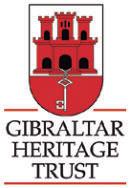
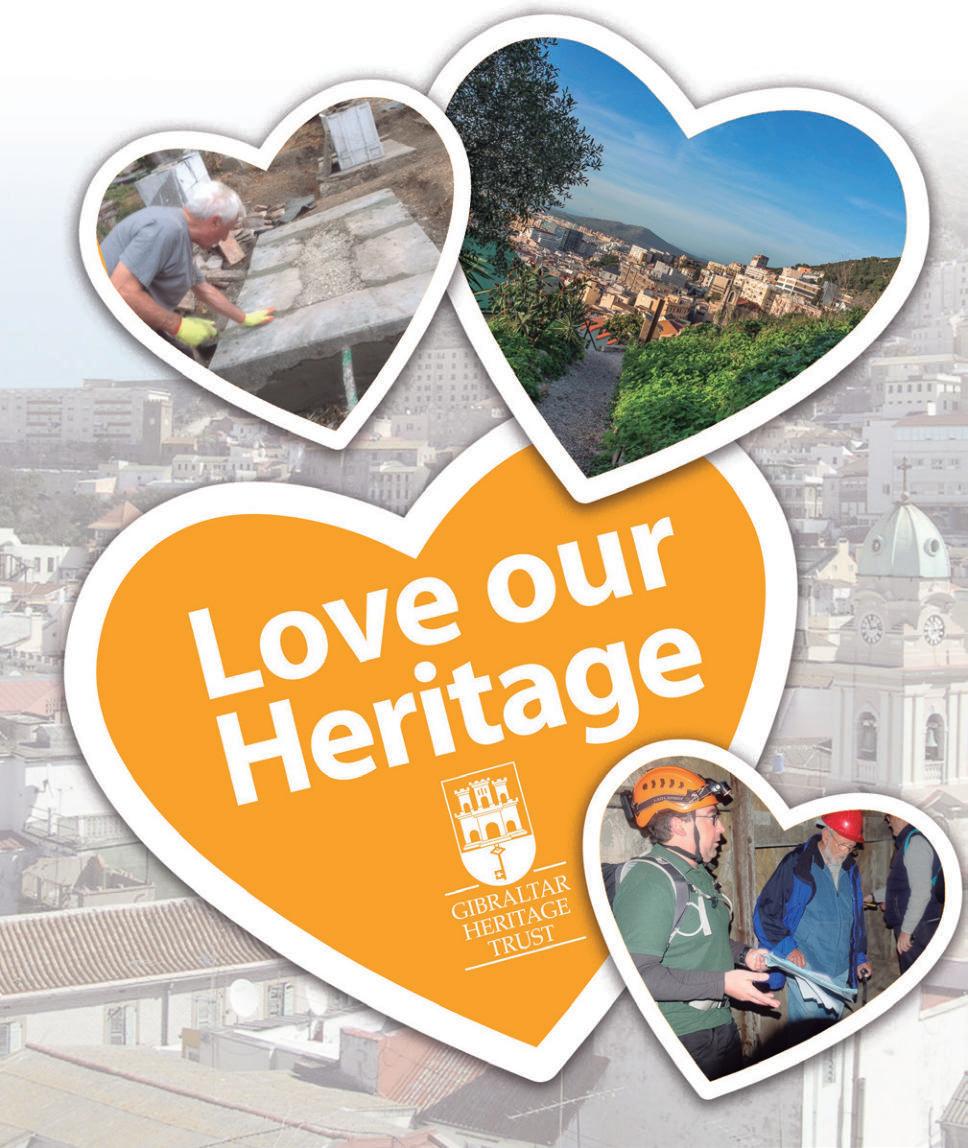
By investing in the Trust you are Investing in Gibraltar’s past, its present and its future
When you take out an annual membership, you support Gibraltar and the work that the Trust does to protect and enhance it however, your membership also entitles you to:
• Access to the Trust’s monthly programme of events, including trips and organized excursions.
• Access, by appointment, to the Trust’s reference library of books related to Gibraltar and its past (The Trust is accepting donations of books on Gibraltar to add to this resource).
• Free entry to the Gibraltar Museum.
• Free entry to the Upper Rock Nature Reserve, St Michael’s Cave, Great Siege Tunnels, Military Heritage Centre, Tower of Homage, Ape’s Den, Windsor Suspension Bridge and WWII Tunnels.
HAZTE MIEMBRO HOY
Si colabora por el Patrimonio, usted está invirtiendo en el pasado de Gibraltar, su presente y su futuro.
Siendo miembro durante un año, apoya a Gibraltar y el trabajo que Patrimonio hace para protegerlo y mejorarlo. Además, también le da derecho a:
• Acceso al programa mensual de eventos, incluidos viajes y excursiones organizadas.
• Acceder, con cita previa, a la biblioteca para consultar los libros relacionados con Gibraltar y su pasado (nuestro fondo bibliográfico crece día a día gracias a las donaciones que recibimos).
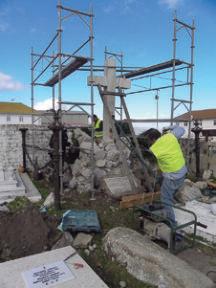
• Annual Report, our regular e-newsletter direct to your inbox, updates and information on what’s happening on the Gibraltar heritage scene.
• Free Cable Car Travel from 1st September 2019 to 31st March, 2020 (not to be used before 4pm until 1st November 2019).
• Discounts at the Gibraltar Heritage Trust Shop on our own publications.
• 10% Discount when purchasing 500g of coffee beans from Sacarello’s Coffee Shop
Visit our Website www.gibraltarheritagetrust. org.gi and click on the JOIN US button.
• Entrada gratuita al Museo de Gibraltar.
• Entrada gratuita a la Reserva Natural de Upper Rock, a la Cueva de San Miguel, a los túneles del Gran Asedio, al Centro del Patrimonio Militar, a la Torre del Homenaje, a la Guarida de los Monos, al Puente Colgante de Windsor y a los Túneles de la Segunda Guerra Mundial.
• También recibirá el Informe Anual y nuestro boletín electrónico enviado regularmente por correo electrónico, actualizaciones e información sobre lo que está sucediendo en la escena del patrimonio de Gibraltar.
• Viaje gratuito en el teleférico desde el 1 de septiembre de 2019 hasta el 31 de marzo de 2020 (no se utilizará antes de las 4 de la tarde hasta el 1 de noviembre de 2019).
• Descuentos de nuestras publicaciones en la tienda Gibraltar Heritage.
• 10% de descuento en la compra de 500 g de granos de café en la cafetería de Sacarello´s Coffee Shop.
Visite nuestro sitio web: www.gibraltarheritagetrust.org.gi y haga clic en el botón JOIN US.
OTWO 05 / DECEMBER 2019 59
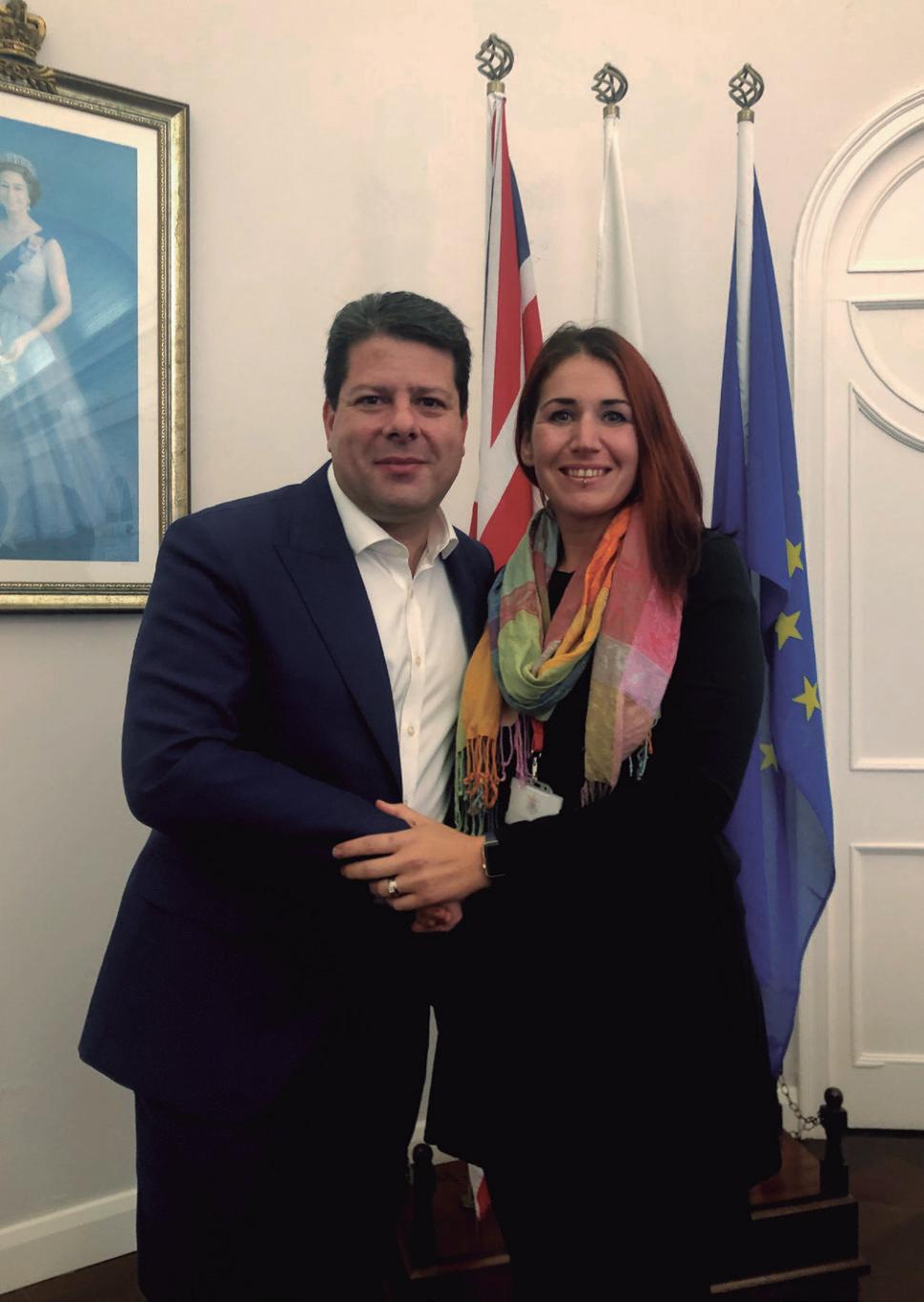
Chief Minister
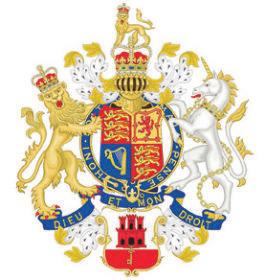
What would you say are the Governments biggest environmental achievements in the last two terms?
I think you need to look at the environment through two different filters. One is the physical world in which we live in and the second is the invisible pollution that we suffer. One of the obvious and huge steps forward was taking what we used to know as USOC or the pre-fab grounds, which was earmarked for two or three large towers, and turning that into Commonwealth Park, which is a green lung in the centre of our city. I think that was a demonstration of how we were going to approach developing Gibraltar, not just in terms more homes and more offices, but also, more places for us to enjoy life. The
second, is our approach to pollution. Now I think everyone in Gibraltar would agree that there is too much pollution and that we need to deal with it by addressing the source. Everybody would like to see pollution disappear overnight, but that is not realistic or possible. What we decided to do was to stop the construction of the new power station proposed by the GSD, which was going to be a diesel burning power station located at the entrance to the Upper Rock, and we replaced it with an LNG facility. This doesn’t address the climate change issues as much as we would like, but in the context of an island economy (and for the production of electricity Gibraltar is an island economy) it certainly deals with air pollutants. When you produce energy from LNG it
OTWO 05 / DECEMBER 2019 61
Vanessa Byrne & Sarah Birch
does not put out pollutants such as NOx (nitrogen oxide). Whilst with diesel, a lot if pollutants are produced, especially CO2. So those I think are two key factors. Another thing that we did which, believe it or not was very controversial at the time, was taking a very British Downton Abbey style Jaguar G1 [The Chief Ministers previous car], which cost £85 to fill the tank, and replaced it with what was then new technology. It was a bit of a punt, but we believed it was the future. The new TESLA car which is charged every night by plugging into the electricity grid, costs 40p to charge. That demonstrated our commitment to new technology and wanting to be much more sustainable in our approach. It took a little bit of time, but despite the controversy people accepted that this was a better option for the future. It’s now been 7 years since we got the TESLA and it still works perfectly, we’ve never had any problem with it. Imagine how much money we’ve saved just on petrol.
What would you say are Gib’s biggest challenges to meet carbon targets of carbon neutrality by 2030 and an 80% reduction in carbon emissions by 2050? Is there any way in which the Government could share real time progress on how these green targets and initiatives are being met?
Let me start at the end, the Government has to determine how we will measure progress before we decide to share it or not, but if we don’t share, we would look like we are running scared of our ability to perform against that target and I am confident that we can. Today, at the ceremonial opening of parliament, I stated that the time has come for people to accept that there needs to be a new ‘social contract’ between the population and the government. Our obligation to the environment makes us realise that the key thing standing between us and sustainability is lifestyle. That is the key issue. It’s not the dreadful government or the dreadful multinationals, it’s us. The multinationals sell petrol, but we buy it. The multinationals build us cars, but we buy those cars and at the end of the day we are that one’s that drive them. Paul Balban, who has really taken the issue of sustainable transport to heart during his time as Minister for Transport is taking a lot of these initiatives over to the Ministry for Health.
He was pointing out to me during a recent discussion in cabinet that in Gibraltar we sometimes get in the car to drive 500m, less than a kilometre. I was guilty of that and I now walk to work every morning I can. There are maybe three days a month where I can’t walk to work because I need to be at a particular place at a particular time, or I just have to ensure something is completed so I need those additional 10 minutes, but I walk to work every single day I can. Now, I think of it this way, I live quite far in the South District, I’ve got three children, they need to get to school and I’ve got a fairly responsible job. If I can take 16 minutes to walk to work, so can everyone else. Those are the key issues, the biggest challenge we are facing, is us.
Question from ESG - Given that Climate Change is such a major issue facing humanity today will you do all within your power to ensure that this term will see the right actions taken across all policies to reflect this urgency? That the economy, social impacts and our environment are intertwined in every major policy sector?
That is exactly what the manifesto commitments and the statement from parliament today says, that the Climate Change Act will be an almost constitutional document for the purposes of what the government will do. Everything will be subject to compliance with the Climate Change Act and the Clean Air Act which we are going to pass. I think it’s important to raise the issue of what that means, because I see young children marching down Main Street on a very laudable endeavour and miss school to demonstrate. If we were to be radical and drastic in the way that we deal with these issues and don’t migrate to new technologies, which is not yet possible in a place like Gibraltar, the drastic ways in which we could deal with their issues means that those children wouldn’t have their Nintendo Switches, PS4’s or Xboxes available to them. That’s the reality. One of the ways that we could deal with the problem would be to ration the availability of electricity produced from fossil fuels. Obviously going to work is important, we can make electricity available from 8am to 8pm or 11pm, we can give electricity to essential services and gaming companies between 8pm to 7am and not make it available elsewhere because we don’t need
it. When people demonstrate and they say, ‘will you do everything in your power?’, they need to understand what it is that they are pushing us to do and consider the impact of what they are really insiting we do.
There have been a lot of new builds in Gib over the last few years (private developments, schools and affordable housing). Why were none of these new builds installed with their own renewable energy sources, and will the government consider enforcing new builds to incorporate new technologies to ensure efficiency?
Many are, some of the sporting facilities and the University etc, are very sustainable buildings. They all have to comply with current European standards and British standards of sustainability. I just think that people need to be more forward looking, actually making a building sustainable and having sources of energy built in to the building at the time of development is good business. I think it has been clear for a decade that being sustainable is a more lucrative and profitable thing to do. It’s not something that is going to take away from your bottom line as a developer, it’s going to add to your bottom line. So, I think people are starting to come around to the fact that the environment, protecting the environment and sustainability is actually good business. This will happen the minute they realise that the development next door is more attractive because it has solar panels or other sources of renewable energy built in. And today a solar panel doesn’t need to look like a solar panel, a window can be a solar panel with a node on it. I think all of these things are coming and are catching, and in a place like Gibraltar with so much sunlight, I think it is actually the right thing to do. You are saving yourself the cost of electricity, electricity is not something that is given away, it is subsidised but it is already expensive, so if you can have the ‘free’ why have the ‘pay for’. Will policies that you put in place for new developments incorporate a minimum environmental standard that they have to comply with?
We have, that is already the law, but that law is about different levels of sustainability. Second, all of the expenses that you incur in order to put in sustainable measures are entirely tax free already. So,
people need to realise those things and understand the value. But I sometimes think that however much a reward may attract people, there is nothing that makes them sit up and take notice as much as a sanction. If you look at what the Norwegians have done, they have no tax on electric vehicles, was that enough to get people to migrate to electric vehicles?
No, it wasn’t, even in a society like Norway. What they had to do was go the other way, they had to impose a huge tax on combustion engines in order to make people go for electric vehicles, even though these had no tax and therefore should have been more attractive than those with combustion engines. So, it really, unfortunately, is about curbing and encouraging behaviour with a rod and a carrot, not just a carrot.
How about all of the new affordable home developments?
They are all designed to be sustainable. That is part of what the government has said we want to do. It’s part of what has been included in the tender and it is a key factor in being able to show people that the government is leading by example.
(Question from The Nautilus Project) How do you envisage people living in places with no car parking facilities (Government rental estates, main street etc) being able to charge their cars if they make the change to electric. Do you ever see a setting up of clean/green public car charging points?
Yes. There will be many charging points in public parking spaces in Gibraltar and there will be parking spaces in private car parks that will also have charging facilities. But I think the key factor here will be including charging stations in public parking spaces. It sounds onerous if you think about it simply from the point of view of having to add the infrastructure, but there is actually another side to this. If you take a long-term view however and consider how rich the Rockefellers have become, and how rich all of the families behind the Saudi oil boom are, then think about how you are going to require infrastructure to charge electric vehicles and how those charging points need to be in public places. This would depend on the government adding that infrastructure, the government then has the opportunity to essentially own every new petrol station in Gibraltar. So,
62 OTWO 05 / DECEMBER 2019 OTWO 05 / DECEMBER 2019 63
if the vehicles are now going to run on electricity rather than on petrol and we control the electricity in Gibraltar, we can essentially be the BP, the Shell, the Rockefeller Petroleum, the Mobil, the Texaco, of the next hundred years for every vehicle that runs here in Gibraltar. Which means that if you think of these corporations, yes, they make a lot of money because they sell you the actual physical petrol, but the profit they make is very small because you’ve got to take it out from the centre of the earth, refine it, move it, then put it in a very controlled environment and then you then you have to provide facilities to pump it into vehicles, its extraordinarily complicated. If you actually think about who worked out that we should use oil which comes out crude, to then refine it to power engines, it was actually doing things the hardest way around. We are going to start doing things in a simpler way, which is to use battery powered vehicles. So, now, when you consider the 2-3 pence of profit for every litre of petrol used by each vehicle, we can take those 2-3 pence of profit in respect of every kilowatt hour it takes to charge electric vehicles. So, for the tax payer, although there would be a front-loaded cost in providing these charging stations, it is potentially a very lucrative market in the long term as every vehicle that is used on our roads will be charged by us, and therefore we will make a profit.
It would be nice to see that amount reinvested back into renewables.
We might not need to by then. By then the idea of renewables may be ubiquitous. By the time you’ve got to that stage, you’re probably running almost entirely on renewables anyway.
Although the new LNG power station is an improvement on the previous diesel station, many environmental groups see it as just an interim solution. They consider a move toward renewable sources the only viable option. In your manifesto renewables are mentioned, could you tell us more about any concrete plans to switch over to wind, solar power etc?
I don’t think that Gibraltar has the geography to enable us to power the whole of Gibraltar from renewables. So, I think we need to look at two different options. We need to look at powering individual areas with renewables, so making each building
self-supported by renewable energy so that they take less from the grid, and potentially importing renewable energy. We have been discussing having a cable in from Morocco which brings would bring solar energy for use. You have to amortise the cost of that cable against the cost of the electricity that you are going to be providing. So those are two key factors to look at to be able to make the most of the renewable energy that is available not just in Gibraltar, but around the area as well. You also need a copper bottom guarantee that there will be electricity, so I think we do need to have a fossil fuel burning facility available. Success would mean that the fossil fuel burning facility is operating as little as possible. And in the context of the sort of fossil fuel burning facilities that are available, if you are an island economy, as we are for electricity, water and waste purposes, then LNG is the best technology available today. The bicycle lanes you have published in your manifesto look amazing and we are really looking forward to seeing these new lanes, but it does look like a logistical nightmare to connect all the walls. Do you have any proper plans you can share with us to publish? How long do you think this would take to build?
What you see in the manifesto are the ideas of the political party. The political party is then elected and now the civil service is developing those plans. Some plans have already been developed as we were already in government prior to the elections. Connecting the lanes is a difficult issue and there will be areas where we will have to work with the Ministry of Heritage and the Heritage Trust because we may need to add things to our walls. These are designed to ensure that the wall is still visible, and so that people can see that it is an addendum for a purpose. I think the value of being able to walk or ride on our walls is huge and I think it makes Gibraltar not just more attractive from the point of view of transport, but makes us more attractive as a healthy place to live in, where you can walk or ride your bicycle from one point to theother. I think it is also making Gibraltar more attractive for tourists as well, the High Line in Manhattan is a real tourist attraction and I think Walk the Wall in Gibraltar could also be - remember that for people from the United States, these walls are older than the United States itself.
There will have to be compromises as well, we need to understand that we’ve been prioritising car traffic for too long and we need to create rights of way for pedestrians and cyclists in a way that encourages people to realise that these are now the preferred forms of transport.
Has Gibraltar Heritage been positive about these plans?
The balance here is what you get in return, remember that the Parish Hall will disappear. The Parish Hall is a second world war car bunker which obscures the old heritage wall. So, there is a value in doing Walk the Wall in that sense as well. All you are going to have to do is add some protection for the general public in some areas, as we have already done very successfully in Wellington Front working with the Heritage Trust. Working together we can do the project in a manner that doesn’t detract from the heritage value we have in our walls, and also enables us to create the thoroughfare that we want. Taking people back to nature is the best way the public can be made to understand the need there is to protect it. Activities done in these areas is the biggest incentive to get people to enjoy it, skate parks, picnic areas, rock climbing, mountain bike treks etc. What ideas are there to incorporate in the upper rock and the very welcomed mount area such activities?
If you look at what has happened in the Upper Rock in the last 8 years, a lot of areas have already been cleared and we’ve created those new picnic areas which were just not there, we’ve invested millions of pounds in the Upper Rock. The Upper Rock Nature Reserve had literally zero investment in 16 years. A lot of areas including the north and south of Tovey cottage, by Princess Caroline’s, have been cleared and picnic facilities have been added, so I think we are doing quite well there. If you look at the area of the Northern Defences and what is being proposed, it really is going to be a theme park. What we are going to propose at the Mount is really going to blow people away, and as you say will get people out of their homes, it will also provide a different way to get people to exercise. It’s our aim to get our children to know and love areas of the Upper Rock, the nooks and crannies that make us familiar with the Rock as our home and I can’t think of anything
better for people to do at the weekends or on an evening after school. I’m very excited about what that is going to be because I think additionally it is also going to drive tourism to Gibraltar, so again this also plays into my idea of these changes working both in terms of the Health Ministry, the Transport Ministry, the Tourism Ministry, delivering a green Gibraltar and delivering a child friendly city. All these objectives get tied up into one, you can’t do one without the other, once you’ve done one, you’ve delivered the other.

As per the GSLP Manifesto, more recycling bins have been promised around Gibraltar. However, we have heard that the collection services responsible are struggling to keep up with the current demand as is. How will this be managed? We need to be ramping up the resources available here, what you’re telling me sounds like a success story. People are recycling more and we need to upgrade how we collect the amount of waste out there, that’s the best news I’ve had all month. We’ve spent a lot of money promoting recycling. If the public are recycling more now and we need to collect more waste, that means that the advertising is hitting the target and we need to keep going down the road of ensuring that people don’t feel that their recycling is not being collected or that it is somehow a useless endeavour. They need to feel it is being collected quickly and that it going back into the system in some way. So, I am very keen to understand where those failings are to be able to correct that.
64 OTWO 05 / DECEMBER 2019 OTWO 05 / DECEMBER 2019 65

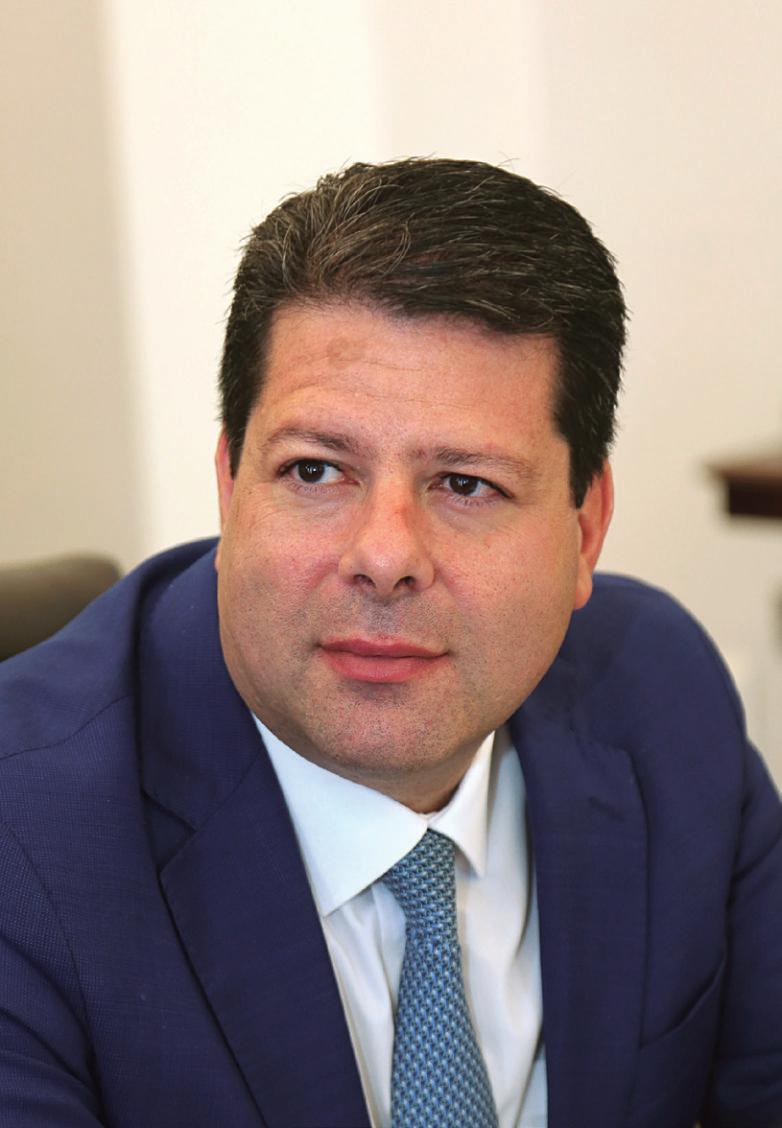
¿Qué logros medioambientales destacaría por parte de su gobierno en las dos últimas legislaturas? Entiendo que se necesita analizar el medio ambiente desde dos ámbitos diferentes. Uno es el mundo que habitamos y el segundo la contaminación invisible que padecemos. La transformación en el actual Commonwealth Park de lo que antes fueron los terrenos USOC para construcciones prefabricadas, posibilitando con ello la consecución de un pulmón verde en el centro de nuestra ciudad, constituye uno de los avances más evidentes. Considero que esta actuación prueba la manera en la que concebimos la evolución urbanística de Gibraltar, no sólo contemplando la construcción de más hogares y oficinas, sino también promoviendo la creación de espacios para el disfrute de las zonas públicas. El segundo avance ha sido nuestra actuación ante la contaminación. Opino que todos en Gibraltar estaríamos de acuerdo en que la contaminación es excesiva y se requiere combatirla atacando su fuente de origen. A todos nos gustaría verla desaparecer de la noche a la mañana, pero ésa no es una idea realista. Lo que decidimos fue paralizar la construcción de la nueva central eléctrica que impulsó el GSD y que hubiera constituido una planta de combustión de gasóleo en el acceso a la parte alta del Peñón. Reemplazamos ese proyecto por unas instalaciones para la licuefacción de gas natural. No se trata de una medida que resuelva los problemas de cambio climático en la medida que desearíamos, pero en el contexto de una economía autosuficiente (y Gibraltar cumple esta definición en cuanto a su producción y suministro eléctricos) desde luego que ataja el problema de las emisiones. Cuando se produce energía a partir del gas natural líquido no se emiten contaminantes como el óxido de nitrógeno en tanto que con el gasóleo sí se producen cantidades ingentes de contaminantes, especialmente dióxido de carbono. De modo que considero que las citadas son dos cuestiones claves. Otra medida que llevamos a cabo y que se crea o no fue fuente de polémica en su día fue el reemplazo del Jaguar G1 que utilizaba el anterior ministro principal, muy del estilo Downtown Abbey y cuyo coste para llenar el depósito era de 85 libras, por un vehículo oficial más moderno. La recarga del nuevo coche TESLA, que se realiza cada noche desde la red eléctrica, cuesta 40 peniques. No
fue un proceso corto, pero a pesar de la polémica la población acabó por aceptar que ésta era una mejor opción de futuro. Han pasado siete años desde que adquirimos el TESLA y aún funciona a la perfección y sin haber sufrido ningún problema. Imagínese el dinero que hemos ahorrado sólo en combustible. ¿Cuáles diría que son los mayores retos de Gibraltar en cuanto a cumplir con los objetivos de la neutralidad de carbono para 2030 y la reducción de estas emisiones para 2050? ¿Tiene el gobierno alguna manera de compartir en tiempo real los avances reales que se produzcan en el cumplimiento de ambos objetivos?
Déjeme empezar por el final. El gobierno tiene que determinar cómo mediremos tal progreso antes de decidir si lo hará público o no. De hacerlo, daríamos la impresión de estar preocupados por nuestra capacidad para llegar a esa meta con éxito. Estoy seguro de que podemos. En la apertura oficial de la nueva legislatura manifesté que ha llegado la hora de que la población acepte la necesidad de que se constituya un nuevo “contrato social” entre la población y el poder ejecutivo. Nuestra responsabilidad para con el medio ambiente hace que comprendamos que el estilo de vida constituye el elemento clave para resolver la cuestión de la sostenibilidad. Ahí reside la cuestión fundamental y no se trata de lo malvados que sean el gobierno o las multinacionales sino que se trata de una cuestión de todos. Las multinacionales venden combustible, pero nosotros los compramos. Las multinacionales construyen coches, pero nosotros compramos esos vehículos y somos nosotros quienes los conducimos. Paul Balban, quien como ministro de Transporte se ha dedicado en cuerpo y alma al transporte sostenible, está trasladando muchas de estas iniciativas al ministerio de Salud. Y durante un reciente debate intergubernamental me transmitió que en ocasiones nos metemos en el coche para conducir 500 metros, menos de un kilómetro. Me sentí culpable por ello y ahora camino hacia mi lugar de trabajo cada vez que puedo. Pueden darse, quizás, tres días al mes en los cuales no puedo hacerlo por tener que estar en un sitio concreto a una hora en concreto o simplemente tener que asegurarme de zanjar algo, de modo que necesito diez minutos adicionales. Pero camino cada vez que puedo. Ahora pienso de esta manera. Vivo
OTWO 05 / DECEMBER 2019 67 66 OTWO 05 / DECEMBER 2019

en un extremo del distrito sur, tengo tres hijos que tienen que ir al colegio y ocupo un puesto de cierta responsabilidad. Si puedo dedicar 16 minutos a llegar, también podemos todos. Y éstas son las cuestiones fundamentales. Nuestro mayor reto es nuestra actitud.
(Pregunta del ESG) Dado que el cambio climático constituye una cuestión tan crucial hoy en día para la humanidad, ¿hará todo lo que su poder político le permita para que en esta legislatura se lleven a cabo las medidas necesarias de cara a actuar respecto a esta necesidad? ¿A que cada área de sus políticas se ocupe de los impactos en la economía, lo social y nuestro medio ambiente?
Eso es lo que, literalmente, reflejan nuestro programa político y compromiso parlamentario. Que la ley sobre el cambio climático sea prácticamente un documento constitucional sobre lo que el gobierno llevará a cabo. Todo se orientará al cumplimiento de la legislación sobre el cambio climático y el aire limpio que vamos a aprobar. Entiendo que es importante significar lo que ello comporta porque veo a niños reivindicándolo, en horas escolares, por nuestra calle Real. Si fuésemos capaces de ser reivindicativos en esta cuestión y prescindir de las nuevas tecnologías, lo cual aún no es posible en un sitio como Gibraltar, las alternativas implicarían que nuestros hijos no dispongan de sus Nintendo Switch, PS4 or Xbox. Y ésa es la realidad. Una de las alternativas sería la de limitar el acceso a la energía eléctrica procedente de combustibles fósiles. Es evidente que trasladarse al trabajo es importante. Podemos constreñir el suministro eléctrico desde las 8:00 hasta las 20:00 o 23:00 horas. Podemos dictaminar un régimen de suministro eléctrico básico y de las 20:00 hasta las 7:00 horas a las casas de apuestas, cortando el resto por no sernos fundamental. Cuando los ciudadanos se manifiestan y nos preguntan si haremos todo lo que podamos, tienes que entender qué es lo que reivindican que hagamos y el impacto que tendría lo que exigen.
Se ha producido un desarrollo urbanístico significativo en Gibraltar durante los últimos años (urbanizaciones, colegios y viviendas de protección oficial). ¿Por qué ninguna de esas construcciones incorporó sus propias fuentes de energía renovables? ¿Obligará el gobierno a que las próximas edificaciones lo hagan?
Hay muchas que las tienen. Por ejemplo las instalaciones deportivas y universitarias. Todas tienen que cumplimentar las directivas comunitarias y británicas de sostenibilidad. Simplemente considero que tenemos que tener mayor visión de futuro: hacer que una construcción sea sostenible e incorporarle fuentes de energía resulta productivo. Me parece claro que desde hace una década se está demostrado que ser sostenible es la fórmula más rentable y beneficiosa. No perjudica a los promotores, les beneficia. De modo que opino que la sociedad empieza a entender que el medio ambiente y la sostenibilidad son rentables. Y esto se vislumbrará definitivamente cuanto nos percatemos de que la urbanización a nuestro lado resulta más atractiva porque tiene placas solares u otras fuentes de energía renovables. Una ventana puede funcionar como placa solar y pienso que todos estos elementos están ya aquí y resultan atractivos. En un lugar como Gibraltar, con tantas horas de sol, considero que es ésta la vía que transitar. Ahorramos costes de electricidad y la electricidad no es un regalo. Está subvencionada pero si existe la posibilidad de tenerla sin coste, por qué tener que costearla.
¿Sus próximas medidas urbanísticas impondrán un mínimo de exigencias medioambientales a los promotores?
Ya existen, está legislado. Pero nuestro ordenamiento contempla diferentes niveles de sostenibilidad. En segundo lugar, el dinero derivado de dichos gastos está exento de impuestos. De modo que la ciudadanía debe de comprenderlo. Pero a veces tengo la impresión de que con independencia de lo evidente que sea el beneficio, sólo se entiende como una imposición económica. Si se atiende a lo hecho en Noruega, el eximirlos de carga fiscal no sirvió para que la población se decidiera a comprar vehículos eléctricos. No sirvió ni siquiera en una sociedad como aquella. Tuvieron que emplear otra medida, la de establecer una gran carga fiscal sobre los motores de combustión para que la población optara por los eléctricos. De modo que se trata de aplicar la política del palo y la zanahoria y no sólo la de la zanahoria.
¿Y qué nos puede decir de las próximas casas de protección oficial?
Todas incorporan un diseño sostenible. Esto es
parte de aquello a lo que el gobierno se comprometió hacer. Es parte de las condiciones de adjudicación así como de la necesidad de mostrar a la ciudadanía de que su gobierno pretende ser ejemplarizante en este sentido.
(Pregunta de The Nautilos Project) ¿Qué se contempla para que los residentes en zonas que carecen de aparcamientos (las casas de alquiler público, main street, etc) y deseen adquirir un coche eléctrico puedan cargar los mismos?
¿Tiene planteada la instalación de zonas de carga eléctrica públicas y ecológicas?
Sí. Se habilitarán varios puntos de carga en zonas de aparcamiento público locales y otro tanto sucederá con zonas de aparcamiento privado. Pero creo que el factor decisivo lo aportará la inclusión de estaciones de carga en zonas de aparcamiento público. Suena costoso si sólo se analiza desde la perspectiva de tener que aportar la infraestructura, pero hay otra forma de verlo. Si se aplica un análisis a largo plazo y se considera la fortuna que han acumulado los Rockefeller y cuánto se han lucrado las familias que se han beneficiado del boom del petróleo saudí, hay que pensar en cuán necesaria va a ser la infraestructura para cargar vehículos eléctricos así como que su instalación se realice en espacios públicos. Todo ello exigiría que el gobierno se ocupe de instalar dicha infraestructura y con ello el gobierno tiene la posibilidad de ser propietario de prácticamente todas las estaciones nuevas de servicio. De modo que si los coches van a funcionar mayoritariamente con electricidad y no con petróleo, y si nosotros controlamos ése suministro eléctrico, podremos ser, en esencia, la BP, Shell, Rockefeller Petroleum, Mobil, o la Texaco, durante los próximos cien años, para el abastecimiento de cada uno de los vehículos que circule por Gibraltar. Estas grandes empresas generan, efectivamente, grandes ingresos. Pero el beneficio real que obtienen es en realidad muy pequeño dado que tienen que extraer la materia prima de las profundidades de la tierra, refinarla, transportarla y almacenarla en un entorno muy controlado antes de proporcionar la infraestructura necesaria para suministrar el producto a los vehículos. Es un proceso largo y complicado. Si lo analizamos, el emplear combustible que proviene del crudo y luego refinarlo para alimentar motores constituye la forma más
complicada de hacer las cosas. Vamos a empezar a actuar de una forma más sencilla; la consistente en emplear vehículos propulsados por electricidad. El beneficio de dos o tres peniques que se consigue de cada litro de combustible consumido por vehículo puede ser establecido en términos equivalentes, dos o tres peniques, por cada kilovatio por hora que se requiere para cargar los vehículos eléctricos. De modo que, a pesar de que habrá un coste inicial de importancia en la fase de habilitar las estaciones de servicio, al contribuyente se le presentará un mercado muy lucrativo a largo plazo dado que todos los vehículos que circulen por nuestra red viaria serán abastecido por nosotros y por tanto disfrutaremos de beneficios económicos.
Resultaría bonito que ese beneficio fuese reinvertido en energías renovables
Puede que para entonces no sea necesario y que las renovables sean ya la fuente preponderante. Cuando lleguemos a esa fase es posible que ya nos abastezcamos de forma casi exclusiva con renovables.
Aunque la nueva planta de gas líquido constituye una mejora respecto a la central de gasóleo que la precedió, varios grupos medioambientales la contemplan como una mera solución temporal. Entienden que la única opción viable es la de apostar por las energías renovables. Su programa electoral menciona las renovables, ¿podría contarnos más sobre proyectos específicos para reemplazar lo existente por energía solar, eólica y otras alternativas? No creo que las características geográficas de Gibraltar nos permitan depender exclusivamente de renovables. Así que pienso que tenemos que compatibilizar dos alternativas diferentes. Debemos contemplar el abastecimiento de zonas individuales con renovables, facilitando un sistema de autosuficiencia en cada edificio de cara a que consuma menos de la fuente general. Hemos debatido la posibilidad de construir un cableado que permita recoger energía solar de Marruecos. Habría que compensar el coste de dicha infraestructura con el precio de la electricidad que se suministraría a través de la misma. Así que ambos son factores clave que considerar con vistas a sacar el máximo provecho de la energía renovable disponible tanto en Gibraltar como en toda nuestra zona geográfica. Se necesita asimismo una
OTWO 05 / DECEMBER 2019 69 68 OTWO 05 / DECEMBER 2019
reserva de cobre para garantizar el suministro así que creo que sí es necesario disponer de una instalación basada en combustibles fósiles. El escenario ideal sería utilizarla en la menor medida posible. Y en relación al tipo de instalaciones de este tipo disponibles, siendo como somos una economía aislada en términos del consumo de electricidad, agua y residuos, la del gas líquido resulta ser la mejor tecnología existente en la actualidad.
Los carriles-bici descritos en su programa tienen un aspecto magnífico y esperamos su materialización con entusiasmo. Pero da la impresión de que conectar todos los muros será extremadamente complicado. ¿Tiene usted alguna novedad que compartir con nosotros al respecto? ¿Cuáles serían los plazos de ejecución?
Lo que puede ver en el programa son las ideas del partido. El partido resulta elegido y a continuación los servicios de la administración pública desarrollan esos proyectos. Algunos ya han sido puestos en marcha al ser ya nosotros el partido de gobierno antes de las elecciones. Conectar los carriles es complicado y habrá aspectos en los que se tendrá que trabajar tanto con el ministerio como con la fundación de Patrimonio porque es posible que sea necesario añadir algún elemento a esos muros. Éstos han sido diseñados para que la pared siga siendo visible de modo que los ciudadanos puedan comprobar que será un añadido funcional antes que estético. Creo que el plus de poder caminar o montar en bici sobre nuestros muros es enorme y no sólo hace de Gibral-
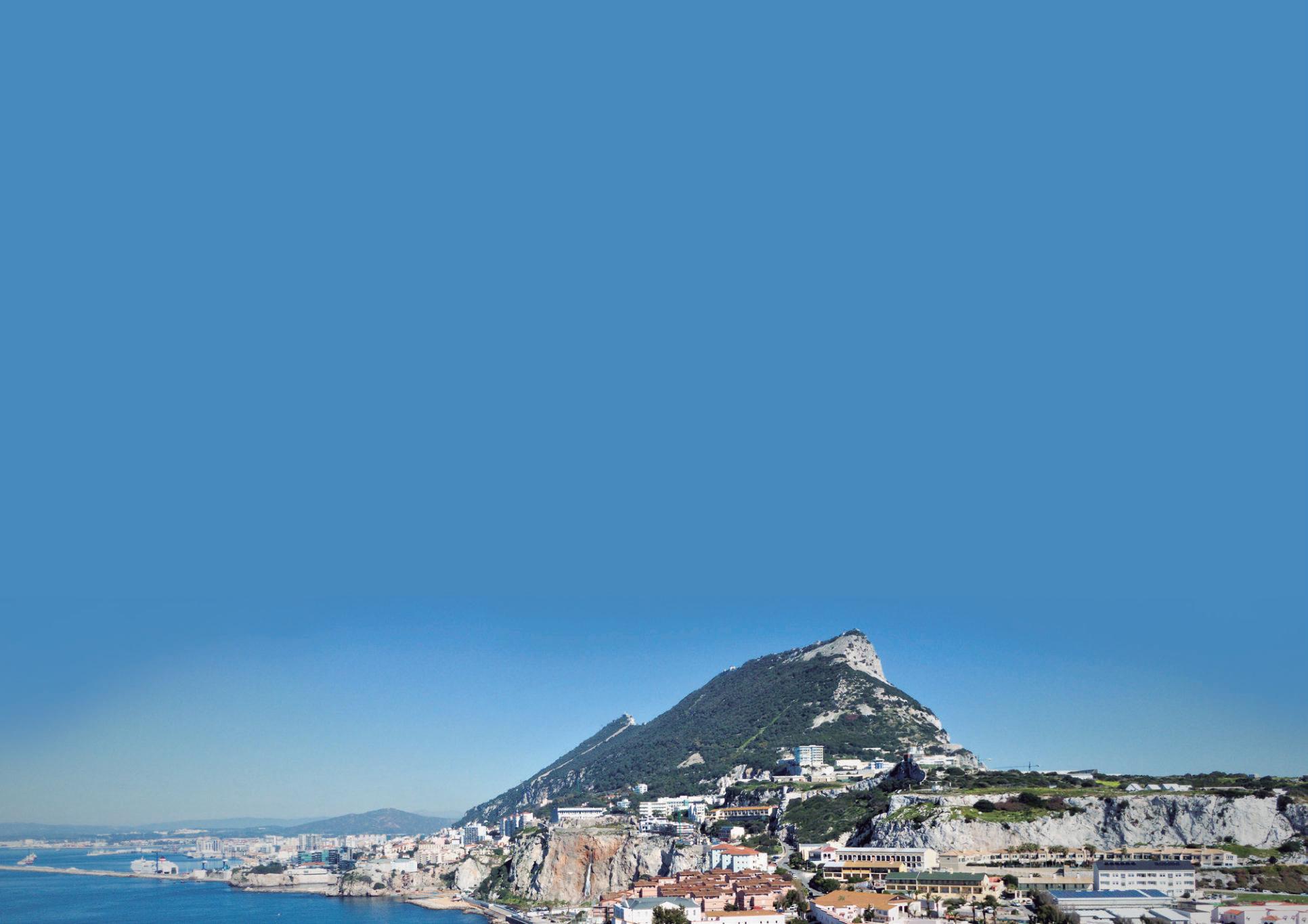
tar un lugar más atractivo desde la perspectiva del transporte, pero también en cuanto a lugar saludable en el que vivir, en el cual las personas pueden desplazarse caminando en bicicleta de un lugar a otro. Creo que también aumenta el atractivo de Gibraltar para los turistas. La High Line de Manhattan constituye un atractivo turístico de primera categoría y creo que nuestro Walk the Wall puede serlo también. Cabe recordar que esos muros norteamericanos son para los estadounidenses más antiguos que su propio país. Asimismo, habrá que hacer concesiones. Necesitamos entender que hemos priorizado el tráfico rodado durante demasiado tiempo y tenemos la necesidad de proporcionar derechos de circulación a peatones y ciclistas de un modo que anime a los ciudadanos a percatarse de que éstas son ahora las formas predilectas de transporte.
¿Ha reaccionado Gibraltar Heritage de forma positiva a esos planes?
Aquí el equilibrio consiste en qué se consigue a cambio de qué. Recuerde que el Parish Hall desaparecerá. El Parish Hall es un bunker para coches de la segunda guerra mundial que tapa la vieja muralla. De modo que hay un segundo beneficio en construir el Walk the Wall como lo contemplamos. Todo lo que habrá que hacer es incrementar la protección para la ciudadanía en determinadas zonas del mismo modo que se ha hecho, con mucho éxito y colaborando con el Heritage Trust, en Wellington Front. Trabajando de forma conjunta podemos llevar a cabo el proyecto de manera que se materialice de la forma que queremos
sin restar valor al patrimonio de nuestras murallas. Poner a los ciudadanos en contacto de Nuevo con la naturaleza constituye la mejor manera de concienciar a la población sobre la necesidad de proteger el entorno. El desarrollo de actividades en estas zonas representa el mayor incentivo para que los ciudadanos las disfruten a través de pistas para el patinaje, zonas de picnic, escalada, circuitos de bici en montaña y demás. ¿Qué más iniciativas pueden ser incorporadas a la parte alta y la muy bienvenida zona de montaña?
Una retrospectiva de lo acontecido en la parte alta en los últimos ocho años nos permite ver que muchas zonas han sido ya despejadas y hemos habilitado esas zonas de picnic que antes no existían. Hemos invertido millones de libras en la parte alta. La reserva natural de la parte alta no había recibido inversión alguna en 16 años. Muchas zonas entre las que se incluye Tovey Cottage, junto a Princess Caroline, han sido desbrozadas para la habilitación de zonas de picnic, de modo que entiendo que lo estamos haciendo bastante bien en este sentido. Si se observa la zona de las defensas del norte y lo propuesto para las mismas, se aprecia que va a convertirse en un auténtico parque temático. Lo que propondremos para el monte fascinará a la ciudadanía porque conseguirá que la gente salga de sus casas y proporcionará otro modo de hacer ejercicio. Nuestro objetivo consiste en que nuestros hijos aprecien y conozcan las zonas de la parte alta, los rincones que
hacen del Peñón nuestro hogar y no se me ocurre mejor alternativa para hacer los fines de semana o al salir de clase. Estoy muy emocionado con lo que se va a materializar porque además incrementará nuestro atractivo turístico. Esto entronca también con mi idea de trabajar de forma conjunta con los ministerios de Salud, Turismo y Transporte de cara a construir un Gibraltar verde e ideal para los niños. Todos estos proyectos se enlazan entre sí. El programa del GSLP promete más contenedores de reciclaje en Gibraltar. Sin embargo, hemos oído que los servicios de recogida están teniendo enormes dificultades para cumplir con la demanda actual. ¿Cómo se puede solventar esto?
Es preciso incrementar los recursos en esta área y lo que usted me cuenta suena a un relato fructífero. Los ciudadanos están reciclando más y tenemos que mejorar el sistema de recogida de residuos. Es la mejor noticia que he tenido este mes. Hemos invertido mucho dinero en promocionar el reciclaje. Si la población está reciclando más y necesitamos recoger más residuos, la conclusión es que la publicidad está alcanzando su objetivo y tenemos que seguir garantizando que los ciudadanos no tengan la sensación de que su reciclaje no está siendo recogido o que están realizando una tarea inútil. Tienen que sentir que se recoge con celeridad y que los residuos vuelven a alimentar la cadena de consumo. Así que tengo toda la voluntad de detectar cualquier fallo para poder corregirlo.
71 70
CHAPTER THREE / CAPÍTULO TRES
Chefchaouen, a love story
Chefchaouen, una historia de amor
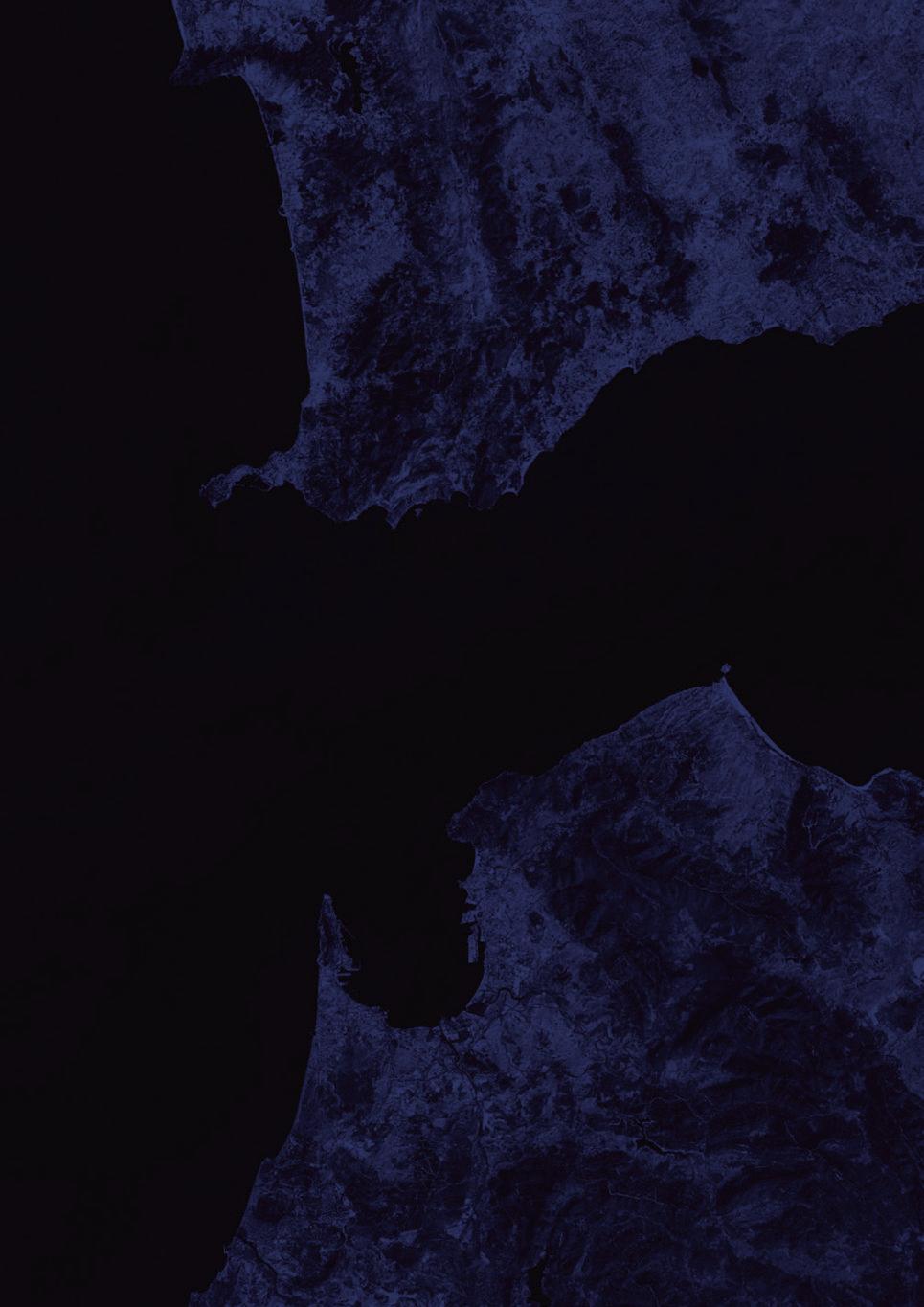
Juanlu González
Article and images

At the end of the 15th century, Emir Moulay Ali Ben Rachid, having just arrived from Al Andalus, decided to build a city hidden between the mountains of the RIF, irrigated by the rich springs filled with permanent fresh water. At that time, Portugal had just conquered the city of Ceuta and it was strategically necessary to maintain a place at a certain distance from the coast, just at a rearguard position from where to consolidate control over the Riffian territory and to send forces to harass the Portuguese troops, who wouldn’t often leave the coast unprotected. It was also necessary to find settlements for Andalusians and Andalusians of Arab and Jewish faith who were being expelled from their lands or fleeing due to the advance of Christian troops.
The Emir himself had married a noble woman named Lalla Zahra, “The Lady of the Flowers” - whose Christian name was Catalina Fernández. Tradition has it that the princess was very sad at having been made to leave her homeland. As her nostalgia worsened over time, Ali Ben Rachid, in an act of love, decided to build his new city as a reproduction of an intramural Andalusian town. With its labyrinthine cobbled streets, it was adapted to the mountainous terrain and built from lime and stone as well as the ubiquitous “Andalusian tile”, a characteristic feature of Andalusian towns exported by Andalusians and the Moors throughout the Maghreb.
In Berber, the name Chefchaouen means “look at the peaks”, alluding to the two peaks that flank the city; Tissouka (2,050 m) and Megou (1,616 m). It can also be referred to as Chaouen or Xaouen.
Andalusian settlers arrived in Chefchaouen in various waves, several of them during the lifetime of its founder, then during that of his sons – Mohamed, and up until the 17th century after the expulsion of the Moors. Even today, the memory of Al Andalus remains alive in the blue city, which has kept the essence of Andalusian culture in the physiognomy of its Medina, its gastronomy, music, crafts and in its popular religiosity ... but it is also rooted firmly in the sentiments of its original inhabitants.
Over time, Chefchaouen became a sacred city for Islam, prohibiting entry to Jews and Christians. This isolation made it a mysterious and almost mythical city for travellers. Today, it constitutes an important destination for tourism and has experienced great
A finales del siglo XV el Emir Moulay Ali Ben Rachid, recién llegado de Al Andalus, decidió construir una ciudad escondida entre las montañas rifeñas y regadas por ricos manantiales de agua fresca permanentes. En esos tiempos, Portugal acababa de conquistar la ciudad de Ceuta y era estratégicamente necesario mantener una plaza a cierta distancia de la costa, justo en la retaguardia desde donde poder consolidar el control sobre el territorio rifeño y enviar fuerzas a hostigar a las tropas lusas que no solía abandonar la protección del litoral. También era necesario encontrar acomodo a los andaluces y andaluzas de religión árabe y judía que estaban siendo expulsados de sus tierras o huían ante el avance de las tropas cristianas.
El propio emir había contraído matrimonio con una noble vejeriega llamada Lalla Zahra, “La dama de las flores” —cuyo nombre de cristiana era Catalina Fernández—. Cuenta la tradición que la princesa se sentía muy triste por haber tenido que abandonar su tierra natal. Como su nostalgia se agravaba con el tiempo, Ali Ben Rachid, en un acto de amor, decidió reproducir en la nueva ciudad que estaba construyendo la tipología de un pueblo andaluz intramuros, con sus calles laberínticas, empedradas, adaptadas al relieve montañoso, construidas a base de cal y piedra, y la omnipresente “teja andaluza”, rasgo característico del urbanismo andaluz exportado por andalusíes y moriscos a todo el Magreb.
El nombre Chefchaouen significa en beréber “mira los cuernos”, una alusión a los dos picos que flanquean la ciudad, el Tissouka (2.050 m) y el Megou (1.616 m). También se la puede nombrar como Chaouen o Xaouen.
A Chefchaouen llegaron pobladores andaluces en diferentes oleadas, varias de ellas en vida del fundador, en la de su hijo Mohamed y hasta el s XVII tras la expulsión de los moriscos. Aún hoy, el recuerdo de Al Andalus, se mantiene vivo en la ciudad azul, que guardó las esencias de la cultura andaluza en la fisonomía de su Medina, pero también en la gastronomía, la música, la artesanía, en la religiosidad popular… y en el sentir de sus habitantes originarios. Con el tiempo, Chefchaouen se convirtió en una ciudad sagrada para Islam, que vedaba la entrada a judíos y cristianos. Ese aislamiento la convirtió en una ciudad misteriosa y casi mítica para los viajeros.

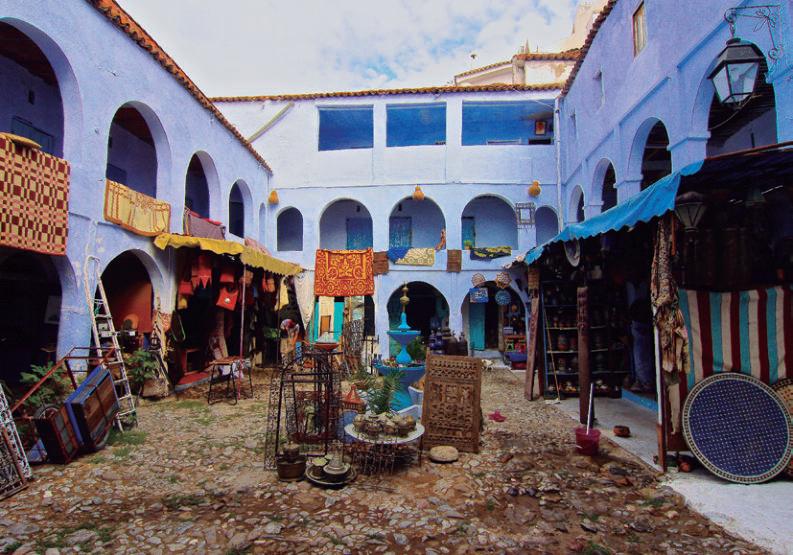
74 OTWO 05 / DECEMBER 2019 OTWO 05 / DECEMBER 2019 75

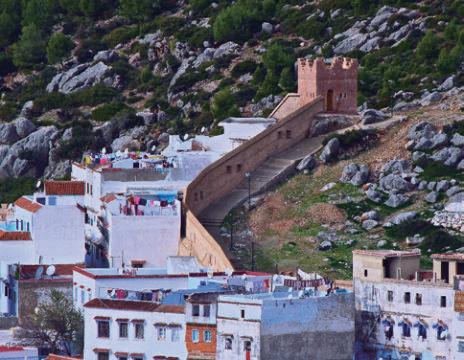
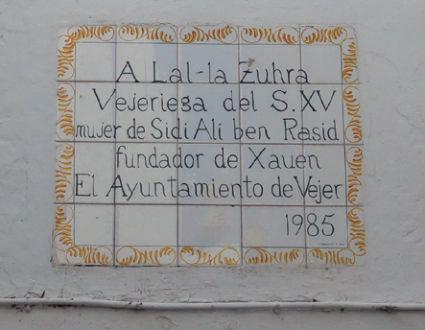
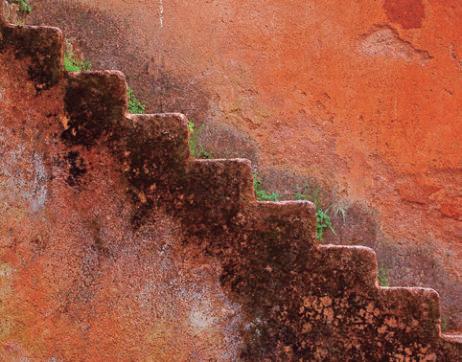
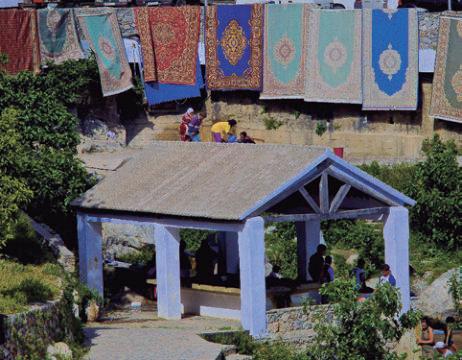

growth, attracting rural people from the surrounding area and even from other regions of Morocco.
Its most important monuments:
Medina of Chefchaouen
The inhabitants of Chefchaouen often say that their city does not have great monuments, but that it is all a great and incomparable monument. In a way they are right. It is the urban complex in itself that bestows the city with its beauty, within it, its historic centre is the highlight: the medina. In Arabic, medina is synonymous with city, however, in Castilian it refers exclusively to the old town area of North African towns. The Medina of Chefchaouen is composed of endless narrow and winding alleyways, grouped in to neighbourhoods that share all of the same facilities, adapted to the conditions imposed by the land’s complex orography. Although Chefchaouen is a very busy city, its medina is even more so. Artisan workshops, bakeries, shops, public toilets, mosques, street food stalls, fountains, playgrounds, chatting or meeting areas, are all dotted around the traditional centre, and all impeccably painted indigo - the most characteristic hallmark of this beautiful location.
Grand mosque
Also known as the Mosque of Jama’a el Kebir, it was built during the end of the 15th century by the founder of Chefchaouen, although it was his son who during the following century, finished it and built the unique minaret. It is located in the Outa El Hamman square, the nerve centre of Chefchaouen town and, along with the annexed citadel, constitute the most monumental buildings in the city. It is a building comprised of simple lines, painted in pristine lime yet lacking the ornamentation expected in such monuments. Its only highlights are its octagonal minaret, built in the Andalusian style, which they say is inspired by the Torre del Oro in Seville, and the main door, painted in Chaouen indigo, accessed by a stairway called Bab al-Hamra in the square.
Kasbah and museum
The Kasbah is the heart of Chefchaouen. It is located in the central square of Outa el Hamman, right in the middle of the two main areas of the Medina, and is the most famous building in the city. Since its construction in 1471, it has undergone numerous reforms, reconstructions and restorations, adapting
Hoy en día constituye un importante destino para el turismo y ha experimentado un gran crecimiento a costa de atraer a población rural de los alrededores e incluso de otras regiones de Marruecos.
Monumentos más importantes:
Medina de Chefchaouen
Los habitantes de Chefchaouen suelen decir que su ciudad no tiene grandes monumentos, sino que toda ella es un gran e incomparable monumento. En cierto modo tienen razón. Es el conjunto urbano el que confiere la belleza al lugar y, dentro de él, destaca significativamente su casco histórico: la medina. En árabe medina es sinónimo de ciudad, aunque en castellano se refiere en exclusiva al casco antiguo de las ciudades norteafricanas. La Medina de Chefchaouen está compuesta por un sin fin de callejuelas estrechas y sinuosas, agrupadas en barrios que cuentan con sus servicios comunes, adaptadas a las condicionantes que impone la compleja orografía del terreno. Aunque Chefchaouen es una ciudad muy bulliciosa, su medina lo es aún más. Talleres artesanos, panaderías, tiendas, baños públicos, mezquitas, puestos de comida ambulantes, fuentes, zonas de juegos, de charla o de reunión, jalonan su centro más tradicional, impecablemente pintado de añil y que constituye la seña de identidad más característica de esta localidad.
Gran Mezquita
Conocida también como mezquita de Yamaa el Kebir, se comenzó a construir durante el final del siglo XV por el fundador de Chefchaouen, aunque fue su hijo quien la finalizó y construyó el particular minarete en el siglo siguiente. Está situada en la plaza Outa El Hamman, el centro neurálgico de la villa de Chefchaouen y, junto a la alcazaba anexa, conforman los edificios más monumentales de la ciudad. Es un edificio de líneas simples, pintado de impoluta cal. Carece de la ornamentación esperable en un monumento de esta índole. Únicamente destaca el alminar octogonal, de tradición andalusí, que dicen que está inspirado en la Torre del Oro sevillana y la puerta principal, pintada de añil chauní, sobre la plaza a la que se accede por una escalinata llamada Bab al-Hamra. Kasbah y museo
La Kasbah es el corazón de Chefchaouen. Está situada en la céntrica plaza de Outa el Hamman, justo
OTWO 05 / DECEMBER 2019 77
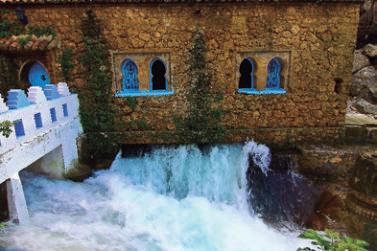
it to the different needs of the times. In the almost four thousand square metres of surface area that it occupies, its eleven towers are its stand out feature, with the impressive tower of homage and its high reddish walls of crenelated mud that preside over the centre of the city, providing the town with its unique vignette.
Ras el Maa
This is the name given to the fresh water spring that supplies the Chauní population. The water source begins at one of the far ends of the city, shaded by the canvased walls. The upwelling is so spectacular, that it has, in its own right, become one of the hubs and one of the most visited areas in all of Chaouen.
The Tissemlal River runs a good part of its length as an underground water source, but just before entering the town, it rises to the surface and, from there, it becomes a stream that sets the rhythm of the city, since it supplies the public laundries, the flour mills that remain operational, some of the canals, and of course, all of fountains that are spread throughout the city, especially in the old town.
Ramparts
Chefchaouen is a walled city. Its ramparts have faced a multitude of attacks throughout history, so they have had to build several defensive lines that were constantly being adapted to secure the perimeter of the city area. Obviously, the inner walls that remain in the medina are the oldest, while the outer walls of the perimeter, are the most recent. The best way to observe the walled enclosure is from the upper part of the city, where the mountainous orography has not allowed the existing urban area to spread. The spectacular viewpoint of the Talassemtane National Park, located on the way up to Chouihat, is perhaps the best way to understand the evolution of the defensive structure of Chaouen.
Flour Mill Riverside
Immediately after the beginnings of the Ras el Maa spring, the volume and strength of its waters
en medio de las dos zonas de la Medina y es el edificio más conocido de la ciudad. Desde su edificación en 1471, ha sufrido numerosas reformas, reconstrucciones y restauraciones que la han ido adaptando a las necesidades de los tiempos. En los casi cuatro mil metros cuadrados que ocupa de superficie, destacan sus once torreones, la impresionante torre del homenaje y sus altos muros rojizos de adobe almenados que presiden el centro de la ciudad y le proporcionan una estampa inconfundible. Ras el Maa
Por este nombre se conoce al manantial que abastece a la población chauní. El nacimiento de agua se produce en uno de los extremos de la ciudad, al abrigo de los lienzos de la muralla. La surgencia es tan espectacular, que se ha convertido por méritos propios en uno de los puntos neurálgicos y en una de las zonas mas visitadas de todo Chaouen.
El río Tissemlal discurre buena parte del recorrido como curso de agua subterráneo, pero justo antes de entrar en esta localidad, sale a la superficie y, desde entonces, se convierte en un arroyo que marca el pulso de la vida de la urbe, ya que abastece a los lavaderos públicos, a los molinos harineros que aún quedan en circulación, a alguna acequia y, por supuesto, a las fuentes que se reparten por toda la población, sobre todo por su casco antiguo.
Murallas
Chefchaouen es una ciudad amurallada. Sus lienzos han tenido que enfrentar multitud de ataques a lo largo de la historia por lo que se han tenido que construir varias líneas defensivas que se adaptaron al perímetro de su casco urbano en cada momento. Obviamente, las murallas interiores que quedan en la medina son las más antiguas, mientras que las exteriores, las perimetrales, son las más recientes. La mejor manera de observar el recinto amurallado es la parte alta de la ciudad, donde la orografía montañosa no ha permitido desbordar la trama urbana existente. El espectacular mirador del Parque Nacional de Talassemtane, ubicado sobre en el camino de subida hacia Chouihat, es quizá la mejor manera de comprender la evolución de la estructura defensiva de Chaouen.
Ribera de los Molinos
Inmediatamente después del nacimiento de Ras el Maa, el volumen y la fuerza de sus aguas servían
served to move the water wheels of five traditional flour mills that, despite not being in operation (except in the case of Rha ben Malek) are in a good state of conservation and are connected via a beautiful walkway which is sheltered from the noisy stream and runs alongside a canal that accompanies us for most of the way.
Chfichou Fondouk
Traditional Fondouks, were buildings in which merchants who came from the surrounding areas and municipalities to sell their merchandise would stay. The only fondouk left in Chefchaouen of the four that existed in the 19th century, is next to the Outa el Hamman square and is from the 16th or 17th century, but today it barely retains its original atmosphere, although, sometimes, some traders of low income still rent the rooms on the top floor for the night.
It is a beautiful two-storey building situated around a porticoed central courtyard that originally, was divided into different areas of functionality, with warehouses and stables located on the ground floor and the bedrooms on the first floor. Today, the courtyard is used for various workshops and shops that sell diverse artisanal goods.
para mover los ingenios de 5 molinos harineros tradicionales que, a pesar de no estar prácticamente en funcionamiento (salvo en el caso de Rha ben Malek) están en buen estado de conservación y se unen a través de un bello paseo al abrigo del ruidoso arroyo y con el frescor de una acequia que nos acompaña gran parte del camino.
Fondouk de Chfichou
Las fondas tradicionales eran edificios en los que los que se alojaban los comerciantes que venían de las tierras y municipios circundantes a vender sus mercancías. El único fondouk que queda en Chefchaouen de los cuatro que existían en el siglo XIX, junto a la plaza Outa el Hamman, es del siglo XVI o XVII y apenas si mantiene su sentido original hoy día, aunque, a veces, algunos mercaderes con pocos recursos aún alquilan las habitaciones de la planta superior para pasar la noche.
Es un bonito edificio de dos plantas situado alrededor de un patio central porticado que, en sus orígenes se dividía funcionalmente de manera que, en la planta baja se situaban los almacenes y las cuadras y en planta primera las habita- ciones. Hoy día, el patio se usa como talleres y tiendas de diversos artesanos.

78 OTWO 05 / DECEMBER 2019 79
OTWO 05 / DECEMBER 2019
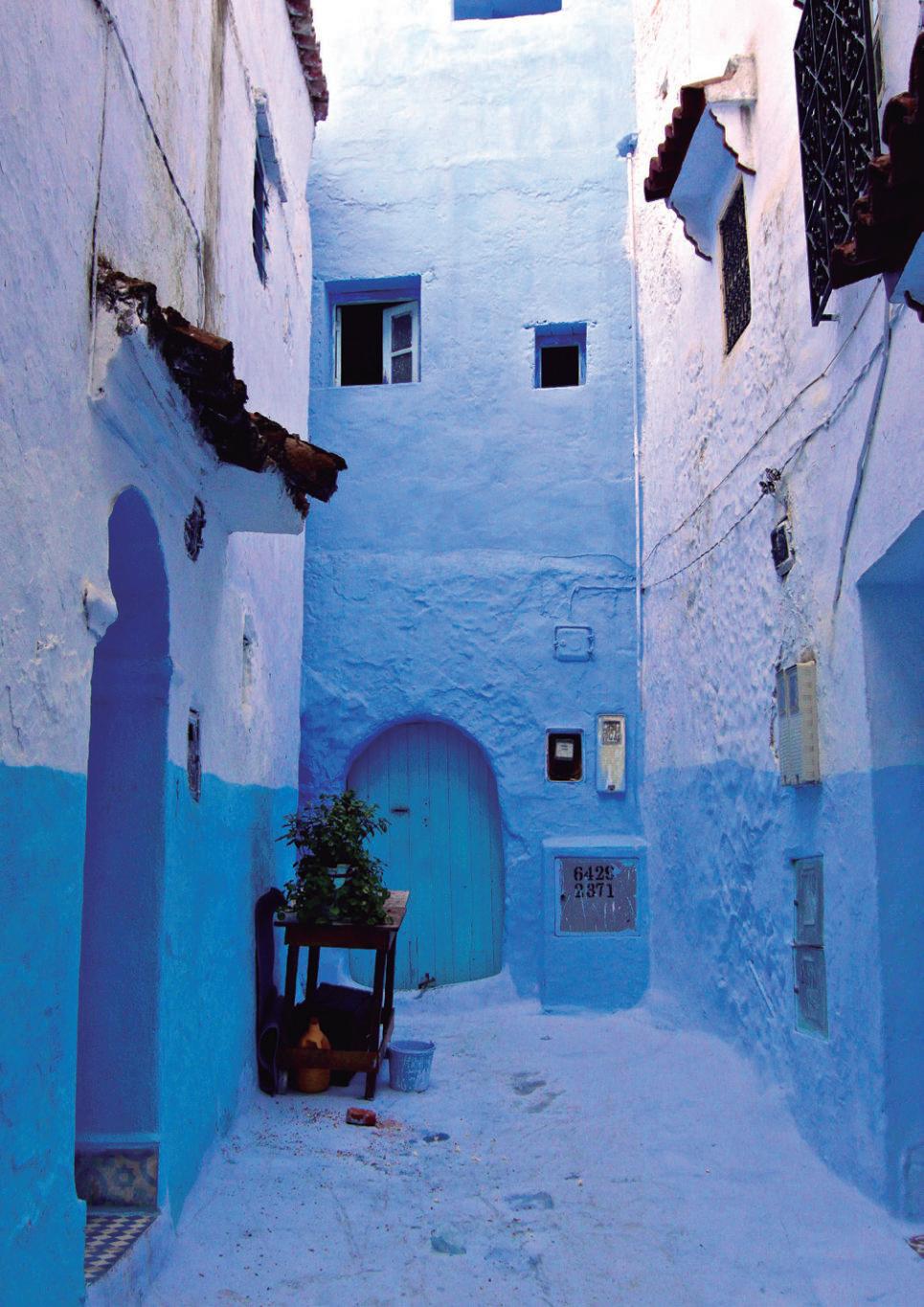
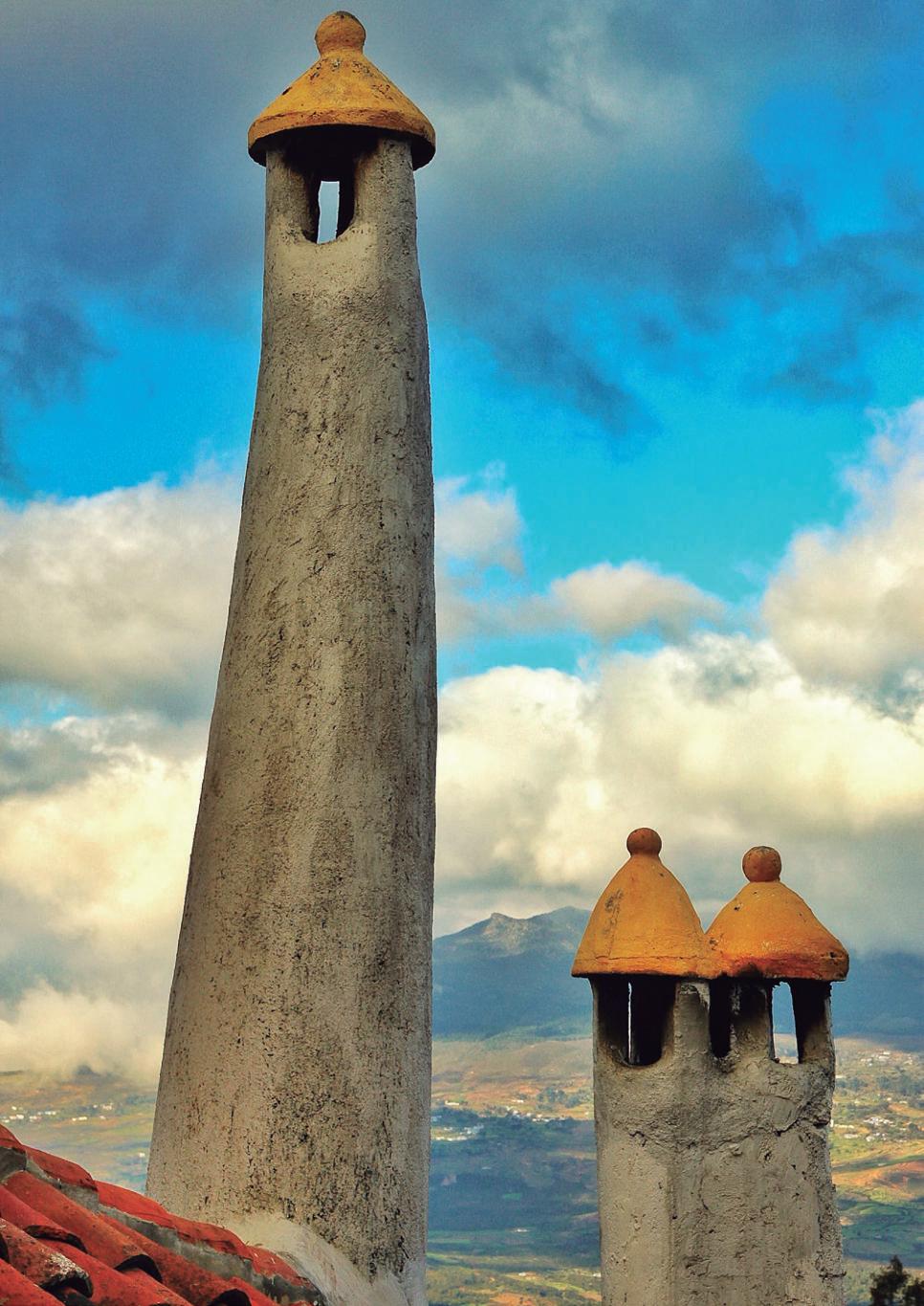
INTERNATIONAL
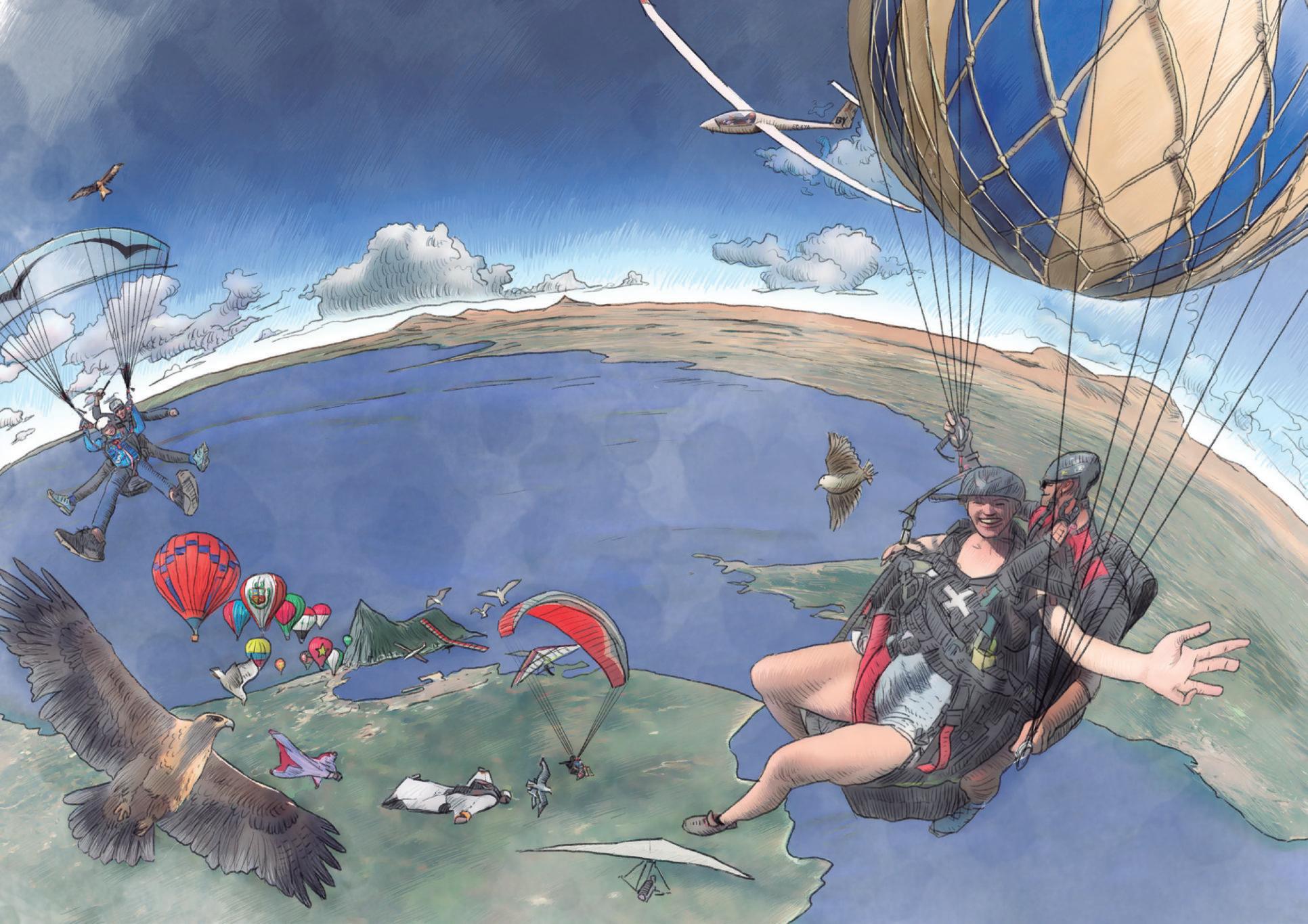
ENVIRONMENT AND ECOLOGY
RENEWABLE ENERGY
ACTIVE AND ADVENTURE TOURISM
HIKING AND MULTIAVENTURE
ENVIRONMENTAL EDUCATION
CULTURAL HERITAGE
CONFERENCES AND WORKING GROUPS
WORKSHOPS AND ACTIVITIES
BIRD WATCHING
VISITS TO INTERPRETATION CENTRES
TASTING OF ORGANIC AND ECOLOGICAL PRODUCTS
EXHIBITIONS AND EVENTS
ILLUSTRATION: JUANJO TRUJILLO

00
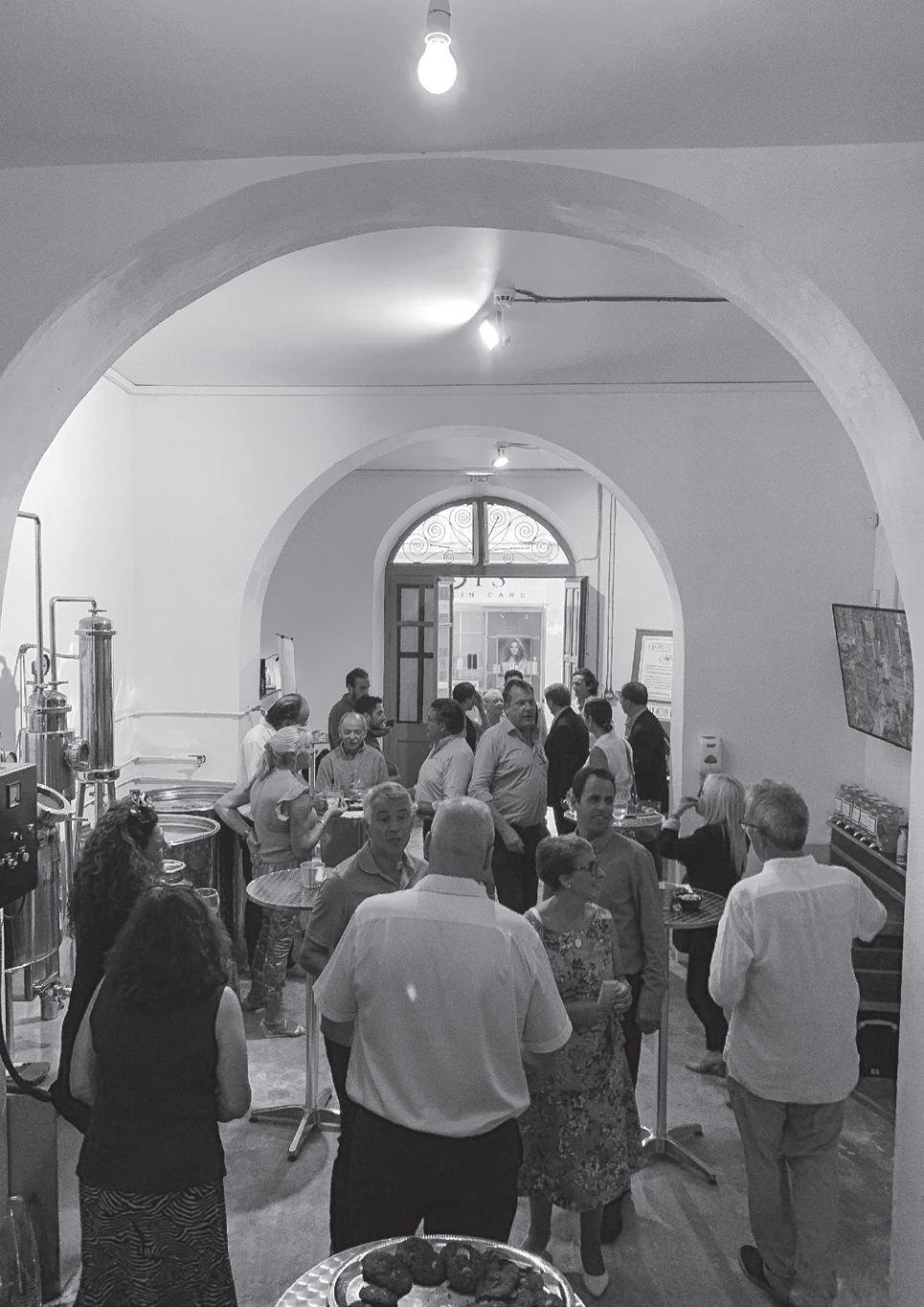

As you may have noticed, gin is in! Britain certainly can’t get enough of it, with a massive surge in distilleries opening across the country, gin has made a stellar comeback.
Enter, Spirit of the Rock, the first and only distillery that produces its very own unique craft gin right here in Gibraltar!
The idea for Spirit of the Rock and its very own artisanal gin - Campion, came to Peter and Stella Millhouse in late 2017, in what some could describe as cosmic kismet nudged along by the Gin Gods.
Having spent an evening enjoying good quality gin at a party, and the following morning watching a segment on tv about craft gin, Stella decided to stroll to Europa Point. On the way, she passed a sign that read - Glen Rocky Distillery, and that’s when the ’lightbulb’ hit.
They began by going on gin tasting and distillery tours in the UK, after which they contacted the Craft Distilling Business, a UK company that helps similar start-ups. After nearly two years, they have perfected the art of distilling high quality gin and developed their uniquely Gibraltarian blend.
In April 2019, they secured a premises on George’s Lane. Coincidently, the building is first cited in records soon after the British and Dutch took possession of the Rock in 1704, at a time when Anglo-Dutch naval forces drank jenever (Dutch gin) to calm the nerves - also known as ‘Dutch courage’.
In just six short months, Peter and Stella turned an empty shell with no utilities into a fully functioning distillery with specialist tasting tours. They also supply various shops and bars around Gib.
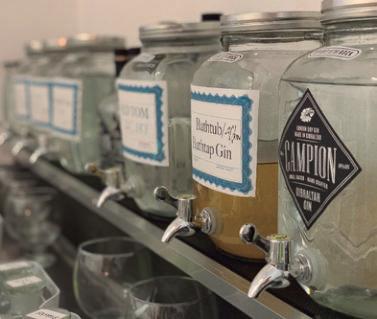
and a little clove. But what makes this blend truly special are rosebuds from Morocco, carob pods, and finally, the seeds from the rare flower that gives the gin its name - Campion, only found here on the Rock.
Campion also packs a punch at a mighty 48% ABV but is still bold, flavourful and well-rounded, honouring the 300-year bond Gibraltar has with the military.
Campion’s smooth and versatile blend makes it perfect neat or with a mixer. It combines particularly well with the seasonal Fever-tree Clementine & Cinnamon Tonic or in a classic Negroni.
But what also makes Spirt of the Rock special is their environmental ethos. Having both been members of Greenpeace, Stella and Peter wanted to ensure that their production and packaging were as green as possible.
Rather than ordering their bottles from cheaper manufacturers in Asia, they opted to order from Portugal. They avoid plastic where possible, having tested various bottle stoppers and compromising on a cork stopper with a protective sleeve. During production, they recycle their cooling water, saving a massive half a million litres a year. Finally, they use 100% organic ingredients and actively encourage recycling by offering a bottle return discount to all customers. Campion, and their latest addition, Moon Lizard Vodka, can be purchased from various stores around Gibraltar or directly from the distillery.
For a novel and fun experience, why not book one of their Historical Tasting Tours, giving both locals and visitors alike a new angle in which to learn more about Gibraltar’s extensive history, while also sampling different gins through the ages.
You can book via www.buytickets.gi or by contacting Spirit of the Rock directly. And remember, once you’ve enjoyed your bottle of Campion, take it back to the distillery for a discount on your next purchase! 8
Their singular London Dry Gin incorporates the usual botanical villains of juniper, orris, coriander and angelica. Citrus notes come from orange and lemongrass. Plus, a spice mix of cassia, cinnamon, cardamom
OTWO 05 / DECEMBER 2019 85
George’s Lane, Gibraltar info@spiritoftherock.gi
350 22501294 www.spiritoftherock.gi
Text by Sarah Birch. Photos provided by Spirit of the Rock and Sarah Birch

Como habrás notado, ¡la ginebra es lo más In! Gran Bretaña no da abasto con el masivo, hay un aumento masivo de aperturas de destilerías en todo el país, la ginebra ha regresado de forma estelar.
¡Entra en la escena, Spirit of the Rock, la primera y única destilería que produce su propia ginebra artesanal en Gibraltar!
La idea de Spirit of the Rock y su ginebra artesanal Campion, les llegó a Peter y Stella Millhouse a finales de 2017, en lo que algunos describirían como kismet cósmico empujado por los dioses de la Ginebra.
Después de haber pasado una noche de fiesta, disfrutando de una ginebra de buena calidad, y a la mañana tras ver un documental de televisión sobre la ginebra artesanal, Stella decidió pasear hasta Punta Europa. En el camino, pasó por una indicación en la que se leía: Glen Rocky Distillery y fue cuando se le encendió la ‘bombilla’.
Comenzaron haciendo unos tours de degustación de ginebra y destilerías por el Reino Unido, para con posterioridad ponerse en contacto con Craft Distilling Business, una compañía británica que ayuda a start-ups. Tras casi dos años de trabajo, han perfeccionado el arte de destilar ginebra de alta calidad y han desarrollado su mezcla, única de Gibraltar.
En abril de 2019, se hicieron con un local en George’s Lane. Coincidencias de la vida, el edificio se nombra por primera vez en el registro poco después de que los británicos y holandeses tomaran posesión de la Roca en 1704, precisamente en el momento en que las fuerzas navales anglo-holandesas bebían jenever (ginebra holandesa) para calmar los nervios, también conocido como “coraje holandés”.
En tan sólo seis meses, Peter y Stella convirtieron una estructura vacía sin utilidad alguna en una destilería en pleno funcionamiento con tours de degustación especializados. También suministran desde aquí a varias tiendas y locales alrededor de Gib. Su singular Ginebra Seca (London Dry Gin) incorpora
los ingredientes aromáticos de origen vegetal habituales como son enebro, lirio, cilantro y angélica. Las notas cítricas proceden de naranja y limoncillo. Además, trabajan una mezcla de especias de casia, canela, cardamomo y un poco de clavo. Pero lo que hace que esta combinación sea verdaderamente especial son los capullos de rosa de Marruecos, las vainas de algarrobo, y finalmente, las semillas de la rara flor que da a la ginebra su nombre “Campion”, autóctona de la roca.
“Campion” también causa un fuerte impacto con su poderoso 48% de ABV, pero que le permite seguir siendo audaz, sabroso y completo, honrando el vínculo de 300 años que Gibraltar mantiene con los militares.
La mezcla suave y caprichosa de “Campion” la hace perfecta pura o combinada. Particularmente, conjuga bien con la tónica de temporada Clementine & Cinnamon Tonic o con un Negroni clásico.
Pero, lo que también hace especial a Spirt of the Rock es su esencia ecológica. Stella y Peter, después de haber sido miembros de Greenpeace, tenían claro que su producción y embalaje tenían que ser medioambientalmente sólidos.
En lugar de pedir sus botellas a fabricantes asiáticos baratos, se decidieron por proveedores de Portugal. Evitando el plástico siempre que sea posible, probaron varios tapones y se decidieron por un tapón de corcho con un manguito protector. Durante la producción, reciclan el agua de refrigeración, ahorrando medio millón de litros al año. Por último, utilizan ingredientes 100% orgánicos y fomentan activamente el reciclaje ofreciendo un descuento por la devolución del envase a todos los clientes.
“Campion” y su última incorporación, Moon Lizard Vodka, se pueden comprar en varias tiendas alrededor de Gibraltar o directamente en la destilería.
SI te apetece una experiencia nueva y divertida, ¿por qué no reservas uno de sus Tours Históricos de Degustación, en el que brindan tanto a los lugareños como a los visitantes, una nueva visión con la que aprender más sobre la extensa historia de Gibraltar, mientras se degustan diferentes ginebras a lo largo de los siglos.
Puede reservar a través de www.buytickets.gi o poniéndose en contacto directamente con Spirit of the Rock. Y recuerda, una vez que hayas disfrutado de tu botella de “Campion”, ¡devuélvela para obtener un descuento en tu próxima compra!
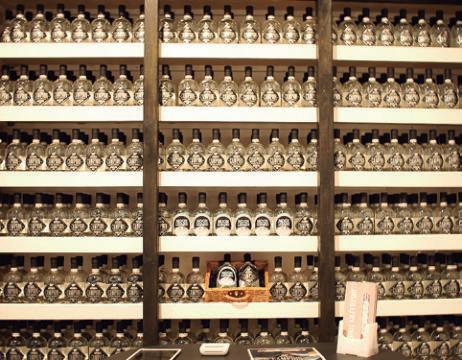
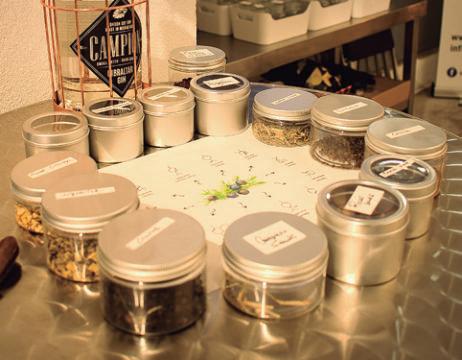
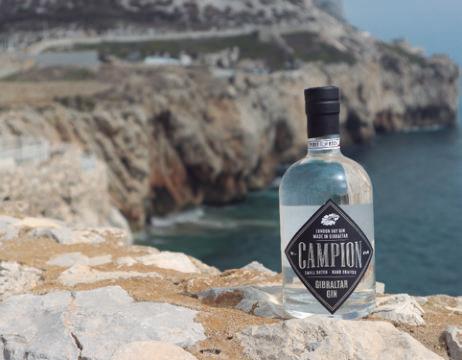
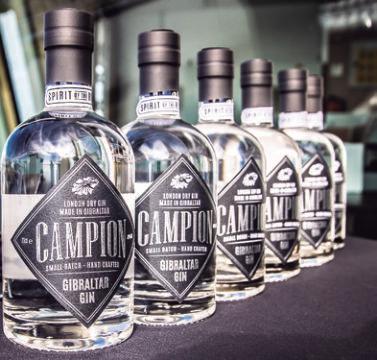
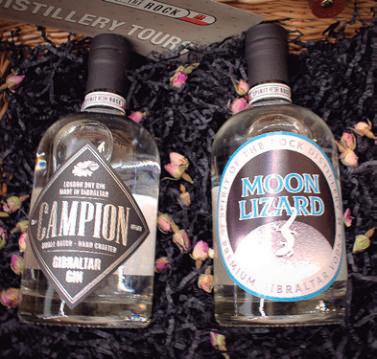
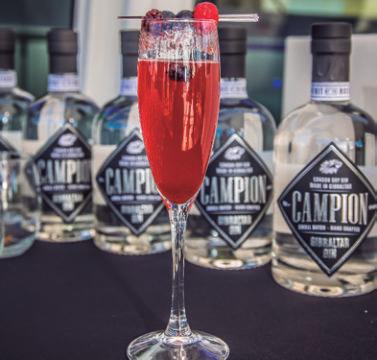
OTWO 05 / DECEMBER 2019 87 86 OTWO 05 / DECEMBER 2019
Ronda Via Ferrata
Text
and photos by Diexter Thomas
Through some bendy roads accompanied with beautiful views, we made our way in an 8 seater to Ronda, a journey which took us around an hour and a half from Gibraltar.
This was the first time I had visited Ronda, a gorgeous village at an elevation of 750 metres above sea level which features stunning views of the surrounding area and a very impressive and iconic stone bridge which immediately left me gobsmacked. Ronda is rich in history, in fact being the place where Spanish Bullfighting originated from.
We went with In2Adventures to experience Ronda’s two ‘Via Ferrata’ climbing routes. Via Ferrata, which in Italian means ‘Iron Path’, provides climbers a safe way of climbing certain areas and are friendly for people from the ages of 9 onwards. Climbers use the carabiners (hooks) on the Via Ferrata Set to secure themselves to a steel cable which is periodically attached to the rock face every 1 to 10 metres. This procedure is to reduce the height in which they could fall and prevents a nasty accident happening, and a helmet to protect against any falling stones. This makes for a safer and a very beginner friendly alternative to traditional rock climbing.
The origin of Via Ferrata routes dates back to the 19th century but they are more commonly recognised to have aided the movement of troops during the First World War in the Dolomite mountain region of Italy. Many more have been developed in recent years due to its surge of popularity and its clear tourism benefits due to its safety and enjoyability, with there being over 1000 in the European Alps, most of which being in Italy and Austria. Closer to home there are more than 50 Via Ferratas in Spain in areas like the Pyrenees, the Mediterranean Coast from Girona to
Murica, the region between Malaga and Cordoba and of course, Ronda.
Ronda has two routes for Via Ferrata climbing, one being subsequently harder than the other, but both providing a fun experience for those new to the activity. I had never experienced anything like the Via Ferrata before, and once we were taught how to manoeuvre the activity by In2Adventures’ Climbing Expert, Jimmy, there was no stopping our momentum to reaching the top of the first and easier Via Ferrata route. There is a slight feeling of freedom when you’re climbing, its surreal not having your feet on solid ground. The Via Ferrata Set’s third carabiner can be used to attach yourself to the metal steps in both routes for when you want to relax and take in the view, or to secure yourself whilst feeling uneasy.
In2Adventures is a company dedicated to providing outdoor experiences for individuals and companies like paddle boarding, team-building and rock activities. They feel that with the stresses in today’s society we never seem to have a moment to spend quality time with our families and friends, and they encourage people to take on board the great outdoors to maintain a balance in our everyday lives.
Upon finishing the second Via Ferrata route which was shorter but for me was a little bit difficult, we decided to make our way into the village for a hot drink and for something to eat. Although we weren’t in Ronda for long, the place was full with people walking around, especially the tourists taking in the beautiful views. I would very much recommend doing a via Ferrata and going with In2Adventures to Ronda for a great and enjoyable day out.
For more information about the activities and services In2Adventures provide, contact us on info@ otwomag.com or call 22500799
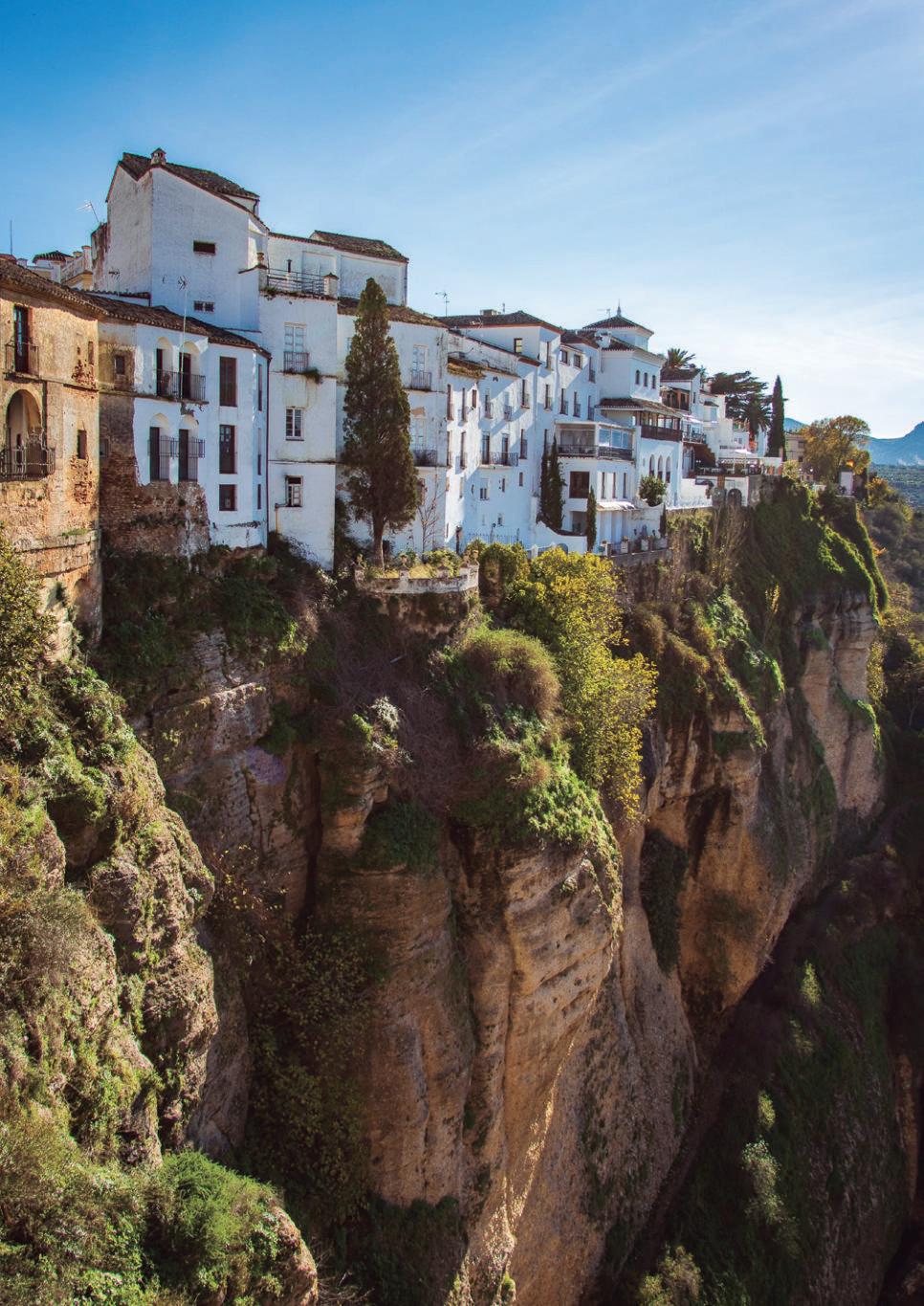
OTWO 05 / DECEMBER 2019 89 88 OTWO 05 / DECEMBER 2019
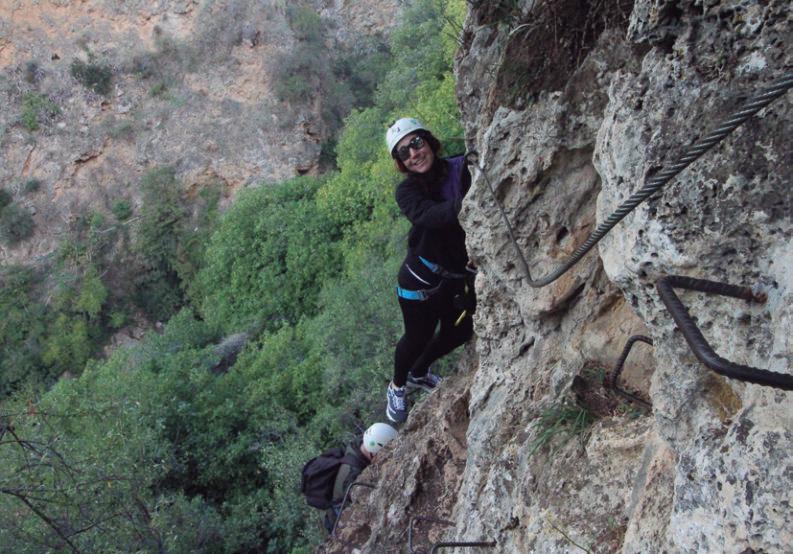
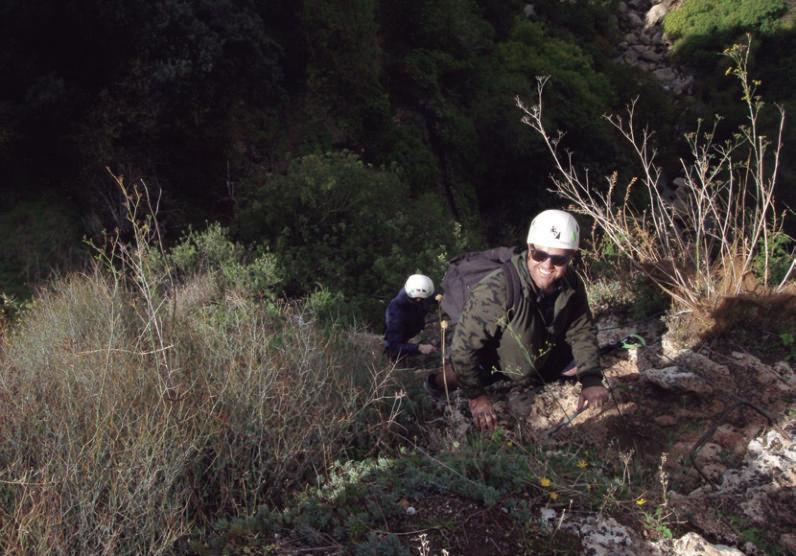
Through some bendy roads accompanied with beautiful views, we made our way in an 8 seater to Ronda, a journey which took us around an hour and a half from Gibraltar.
This was the first time I had visited Ronda, a gorgeous village at an elevation of 750 metres above sea level which features stunning views of the surrounding area and a very impressive and iconic stone bridge which immediately left me gobsmacked. Ronda is rich in history, in fact being the place where Spanish Bullfighting originated from.
We went with In2Adventures to experience Ronda’s two ‘Via Ferrata’ climbing routes. Via Ferrata, which in Italian means ‘Iron Path’, provides climbers a safe way of climbing certain areas and are friendly for people from the ages of 9 onwards. Climbers use the carabiners (hooks) on the Via Ferrata Set to secure themselves to a steel cable which is periodically attached to the rock face every 1 to 10 metres. This procedure is to reduce the height in which they could fall and prevents a nasty accident happening, and a helmet to protect against any falling stones. This makes for a safer and a very beginner friendly alternative to traditional rock climbing.
The origin of Via Ferrata routes dates back to the 19th century but they are more commonly recognised to have aided the movement of troops during the First World War in the Dolomite mountain region of Italy. Many more have been developed in recent years due to its surge of popularity and its clear tourism benefits due to its safety and enjoyability, with there being over 1000 in the European Alps, most of which being in Italy and Austria. Closer to home there are more than 50 Via Ferratas in Spain in areas like the Pyrenees, the Mediterranean Coast from Girona to Murica, the region between Malaga and Cordoba and of course, Ronda.
Ronda has two routes for Via Ferrata climbing, one being subsequently harder than the other, but both providing a fun experience for those new to the activity. I had never experienced anything like the Via Ferrata before, and once we were taught how to manoeuvre the activity by In2Adventures’ Climbing Expert, Jimmy, there was no stopping our momentum to reaching the top of the first and easier Via Ferrata route. There is a slight feeling of freedom
when you’re climbing, its surreal not having your feet on solid ground. The Via Ferrata Set’s third carabiner can be used to attach yourself to the metal steps in both routes for when you want to relax and take in the view, or to secure yourself whilst feeling uneasy.
In2Adventures is a company dedicated to providing outdoor experiences for individuals and companies like paddle boarding, team-building and rock activities. They feel that with the stresses in today’s society we never seem to have a moment to spend quality time with our families and friends, and they encourage people to take on board the great outdoors to maintain a balance in our everyday lives.
Upon finishing the second Via Ferrata route which was shorter but for me was a little bit difficult, we
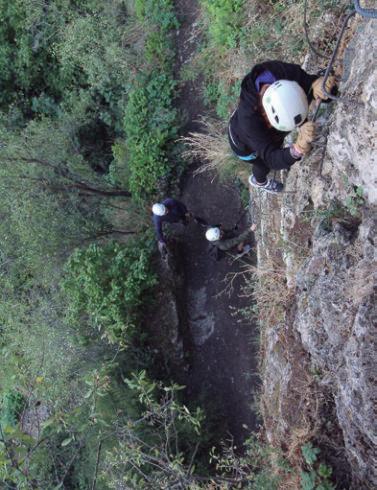
decided to make our way into the village for a hot drink and for something to eat. Although we weren’t in Ronda for long, the place was full with people walking around, especially the tourists taking in the beautiful views. I would very much recommend doing a via Ferrata and going with In2Adventures to Ronda for a great and enjoyable day out.
For more information about the activities and services In2Adventures provide, contact us on info@ otwomag.com or call 22500799
OTWO 05 / DECEMBER 2019 91 90 OTWO 05 / DECEMBER 2019
Guía Rápida de: Finlandia
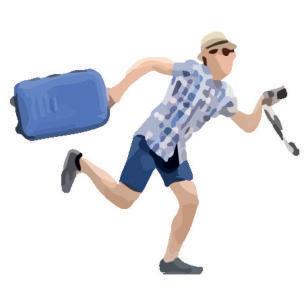
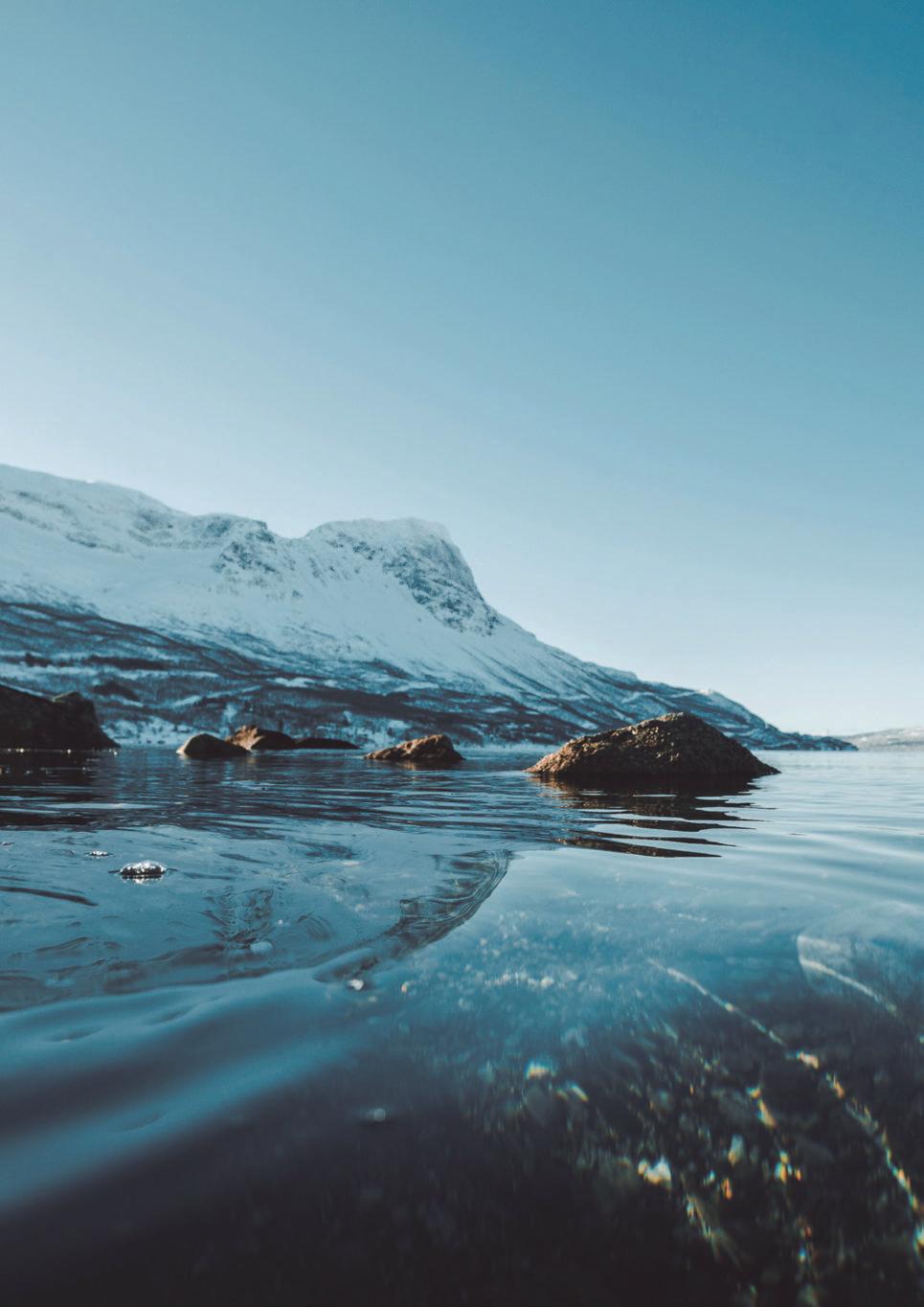
Language: Finnish.
Currency: Euro.
Capital: Helsinki.
Famous for:
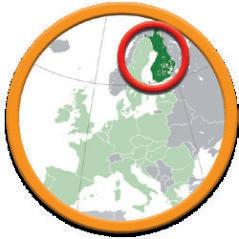
Northern Lights. Lapland. Birth place of Saunas Some top places: Sleep in a Glass Igloo and watch the Northern Lights. Wander the beautiful wooden towns of Old Porvoo or Neristan. Hike through stunning National Parks such as Nuuksio or Koli. Sweat it out at the world’s biggest smoke sauna in Herrankukkaro. Explore Helsinki boulevards and beautiful architecture. Visit Santa Claus, Reindeer and take a husky sleigh ride in Lapland.Spot the world’s rarest seal at Lake Saimaa.
Activities:
Skiing, hiking, mushroom and berry picking, kayaking, sailing, fishing .
Weather:
High season – Busiest time (Jul). Shoulder season – Long days with decent temperatures (Jun & Aug).
Low season – Short, cold days. Best time for Northern Lights (Sep to May).
Health/Vaccinations:
Always check with your nearest travel clinic at least 4 to 6 weeks before travel for up to date advice.
Eco fact:
Finland is the country with the cleanest air in the EU and the third cleanest air in the world.
Eco resorts:
Budget: Nallikari Holiday Village from £75 per night (Oulu).
Mid: Klaus K Hotel from £130 per night (Helsinki). Luxury: Original Sokos Hotel Vaakuna Rovaniemi from £200 per night (Near Santas Village, Lapland).

Idioma:
Finlandés.
Moneda:
Euro.
Capital:
Helsinki.
Famosa por:
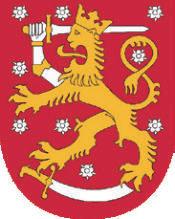
Auroras boreales. Laponia. Lugar de nacimiento de aguas termales.
Lugares de interés:
Dormir en un iglú de cristal y ver la aurora boreal. Pasea por los hermosos pueblos viejos de madera del Porvoo o Neristán. Camina por los parques naturales impresionantes como Nuuksio o Koli. Relajate en la sauna de humo más grande del mundo en Herrankukkaro. Explore por los bulevares de Helsinki y su bella arquitectura. Visita a Santa Claus, Reno y da un paseo en trineo husky en Laponia. Descubre la foca más raro del mundo en el lago Saimaa.

Actividades:
Esquí, senderismo, cosecha de setas y bayas, kayak, vela, pesca.
Clima:
Temporada alta: Tiempo más popular (julio). Temporada mediana: días largos con temperaturas decentes (junio y agosto).
Temporada baja: días cortos y fríos. Mejor época para la aurora boreal (septiembre a mayo).
Salud / Vacunas:
Siempre consulte con su clínica de viajes al menos 4 a 6 semanas antes del viaje para obtener consejos actualizados.
Ecología:
Finlandia es el país con el aire más limpio de la UE y el tercer aire más limpio del mundo.
Los mejores resorts ecológicos:
Economico: Nallikari Holiday Village desde £ 75 por noche (Oulu).
Medio: Klaus K Hotel desde £ 130 por noche (Helsinki).
Lujo: Original Sokos Hotel Vaakuna Rovaniemi desde £ 200 por noche (cerca de Santas Village, Laponia).
93
OTWO 05 / DECEMBER 2019

From freshly home made local dishes to Nosha’s healthy corner. Yogurts, extended salad and veggie options. We let you create your own.
Vegan, gluten and lactose free options always available.
Eat in, take away or delivery via Hungry Monkey or Rock Hero.
Party menu’s available.
Tel: 20071905/ 54034815
Address: unit G4 ground floor ICC
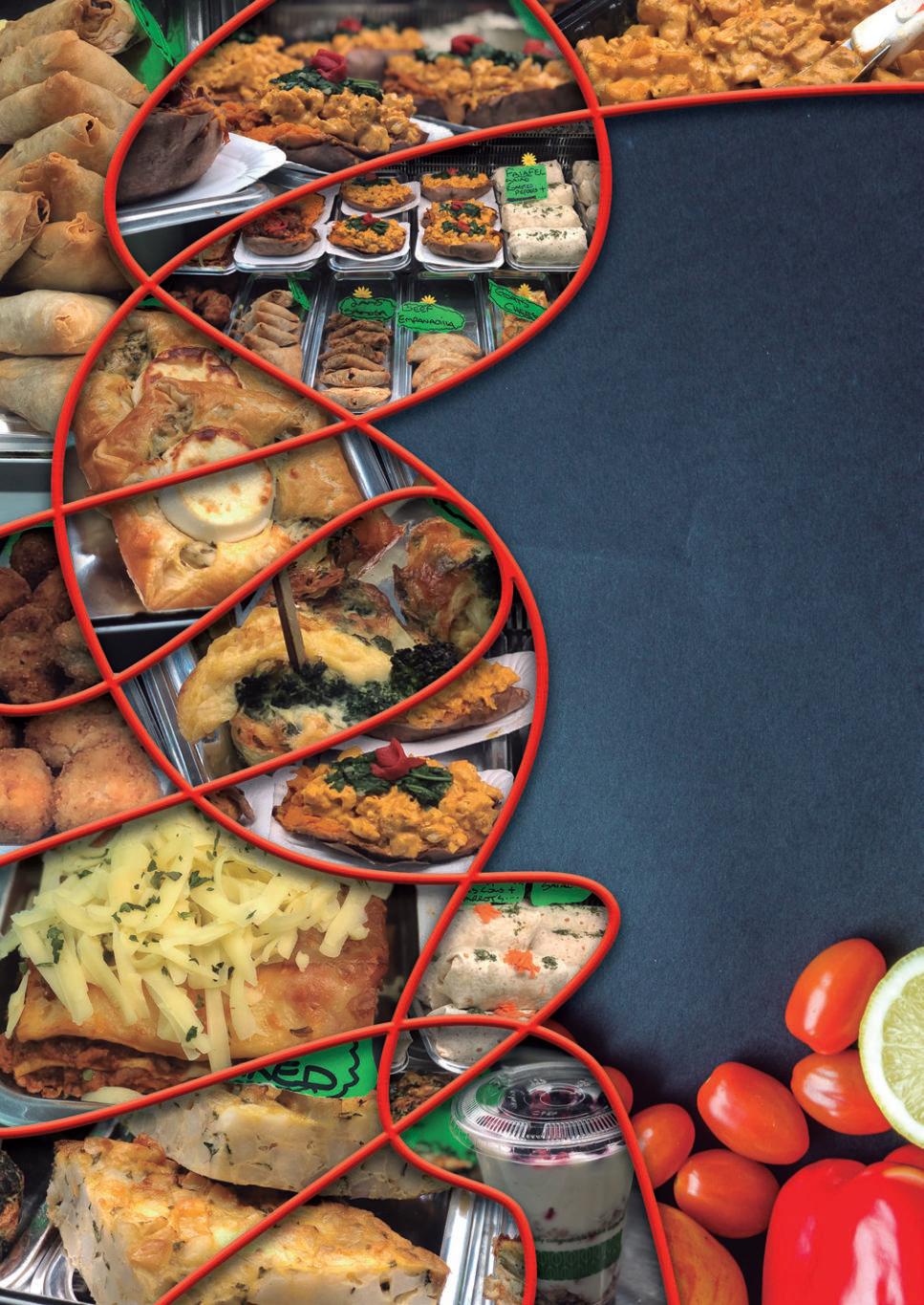

Catálogo de Experiencias. Invierno 19
Organized by: OTWO Magazine
Tel. +00350 22500799 / info@otwomag.com
Transport available for groups.Check with us for your requirements. OTWO is a facilitator on these packages. All activities are contracted directly between the respective centre operator and the client. Prices are for the month of december only, please contact us for other dates.
Transporte disponible para grupos. Consultenos si estás interesado. OTWO es un mediador de estos paquetes. Todas las actividades se contratan directamente entre el operador y el cliente. Precios válidos solo para el mes de diciembre, consulte para otras fechas.
NOVEMBER
OTWO 04 /
2019
DETAILS OF THE EXCURSION
Includes:
Bilingual expert guide (Spanish and English). RC and accident insurance.
Round trip transportation from the border.
Included Meals: Day 1: lunch and dinner. Day 2: breakfast and lunch. One drink included per meal. Hotel accommodation in El Bosque, Sierra de Grazalema (prices are for shared rooms. Ask for price for individual).
Materials included: binoculars and telescope. Identification guides.
Recommended time: autumn, winter and spring.
Date: Although the activity is titled bird weekend, after consultation and confirmation of availability by the company, this can be done any day of the week.
Schedule: pick up 8:00 a.m. at the border and end the next day at 6:00 p.m. approx.
Minimum number of people: 2
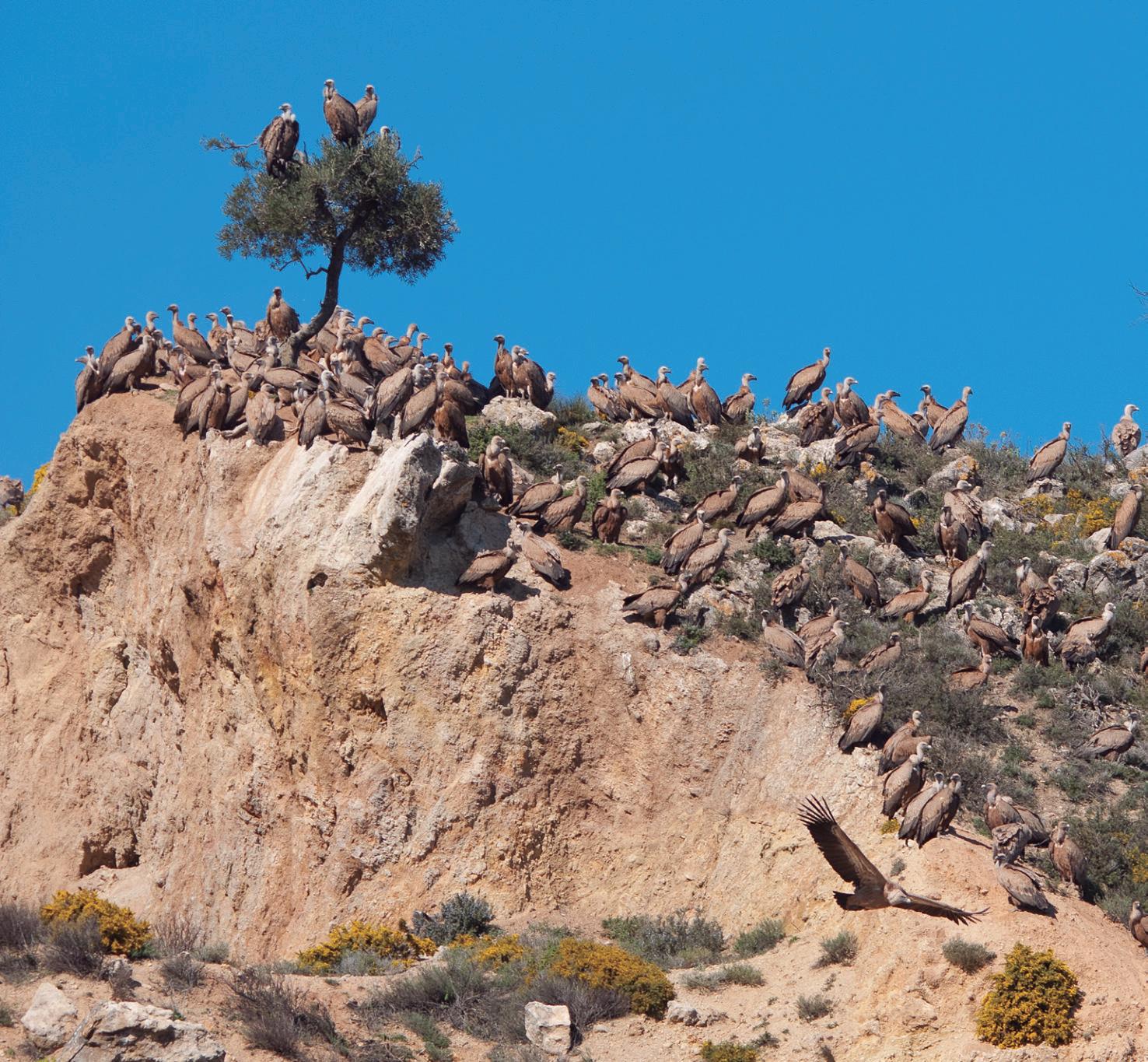
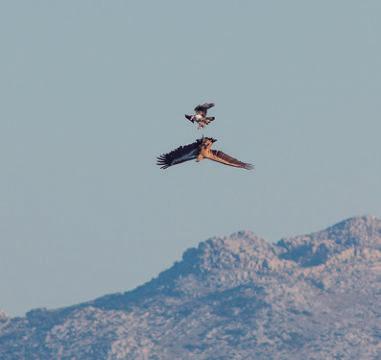
DAY 1: LA JANDA WETLAND
The old lake of La Janda used to be one of the most important and extensive wetlands in the Iberian Peninsula. There are large pastures, an important and unusual wild olive grove, rain fed crops, rice paddy fields and canals with marsh vegetation that together welcome millions of birds through the different seasons.
This unparalleled strategic situation, the last stop before leaving the continent, makes La Janda a paradise of great ecological interest: here birds must stop to rest and recover strength before or after their trip across the Strait of Gibraltar.

DAY 2: SIERRA DE GRAZALEMA NATURAL PARK
The Grazalema Natural Park is a nearly 52.000 Ha paradise for walkers, birdwatchers and photographers. Here we can find a mountain landscape formed by limestone and dolomites, dominated by fantastic views of both Spanish Fir and Mediterranean forests with their abundant Holm oaks and Cork oaks. The area is renowned for orchids and butterflies, but raptors will distract us from the ground cover. From hilltops like Puerto de las Palomas or Puerto del Boyar, with luck we will spot Bonelli’s and Golden Eagles, Goshawk, Peregrine Falcon and Red-billed Chough.
Other species present in this region are Egyptian Vultures, Blue Rock and Rufous Tailed Rock Thrushes, Black Wheatears, Crag Martins, Red-rumped Swallows and Rock Buntings, among others.
Grazalema is a wonderful place for nature lovers and we have designed the best guided tour possible to get an extensive bird, orchid and butterfly list, as well we have the possibility to focus on special species.
DÍA 1: OBSERVACIÓN DE AVES EN LA ANTIGUA LAGUNA DE LA JANDA
La antigua laguna de La Janda fue uno de los humedales más importantes y extensos de la península ibérica. Existen extensos pastizales, una importante e inusual dehesa de acebuche, diferentes cultivos de secano, arrozales y canales con vegetación palustre, que hacen de este sitio un lugar idóneo para acoger a miles de aves en las diferentes épocas del año.
Además, su estratégica situación en el extremo meridional de Europa y su cercanía con el continente africano, hacen de este paraje un enclave de un alto valor ecológico ya que es en lugar obligado de descanso para las aves que cruzan el Estrecho de Gibraltar.
DÍA 2: PARQUE NATURAL SIERRA DE GRAZALEMA
El Parque Natural Sierra de Grazalema con sus cerca de 52.000 ha, es un paraíso para senderistas, observadores de aves y fotógrafos de naturaleza. Dominado por un paisaje montañoso de calizas y dolomías, destacan las impresionantes vistas de sus pinsapos y de un monte mediterráneo compuesto en su mayoría por especies como encinas y alcornoques.
La Sierra de Grazalema es una zona de especial interés para orquídeas y mariposas, pero no hay que olvidar su excepcional riqueza en cuanto a rapaces, lo que nos mantendrá atentos al cielo en todo momento. Desde lo más alto de sus miradores y si la suerte acompaña, es común observar especies como el águila perdicera, águila real, azor, halcón peregrino y la chova piquirroja.
Otras especies presentes en la zona son el alimoche, roquero solitario y rojo, collalba negra, avión roquero, golondrina daúrica y escribano montesino, entre otros.
Grazalema es un lugar increíble para los amantes de la naturaleza así que hemos diseñado la mejor de las excursiones para disfrutar observando un buen número de aves, orquídeas y mariposas, aunque lógicamente existe la posibilidad de centrarnos en la observación de aves.
DETALLES DEL TOUR
Incluye:
Guía local experto bilingüe (español e inglés). Seguro RC y accidentes.
Transporte ida y vuelta desde la frontera. Comidas: se incluyen la comida y cena del día 1, así como desayuno y comida del día 2. Una bebida incluida por comida.
Alojamiento en hotel en El Bosque, Sierra de Grazalema (precios para habitación compartida. Preguntar por precio para individual).
Material óptico: prismáticos y telescopio. Guías de identificación.
Época recomendada: otoño, invierno y primavera.
Fecha: aunque la actividad se titula fin de semana de aves, previa consulta y confirmación de disponibilidad por la empresa, esta puede realizarse cualquier día de la semana.
Horario: recogida 8:00 h en la frontera y fin al día siguiente a las 18:00 h aprox.
Número mínimo de personas: 2
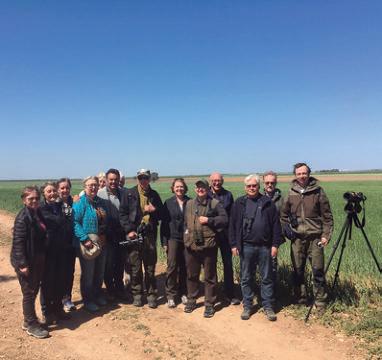
BIRDING WEEKEND AT LA JANDA WETLAND & GRAZALEMA
96 97 OTWO 05 / DECEMBER 2019 OTWO 05 / DECEMBER 2019
FIN DE SEMANA DE AVES EN LA JANDA Y GRAZALEMA
£360 (Precio por persona)
£360 (Price per person)
Algaba de Ronda
Enjoy a weekend with the family in a privileged natural environment, La Serrania de Ronda. Learn, play, enjoy in the heart of nature through the interpretation of a prehistoric village where we can learn how our ancestors lived. Nature trails, night routes, workshops, games for all to enjoy.
Come and enjoy an autumn with a difference,
Price Adults; £145. Children (3-12years old) : £84. Babies 0-3: free of charge. Children of 3 years old or younger who would do not eat baby food can have the choice to eat from menu: £24.
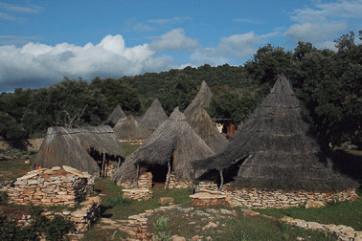
Fines de Semana Familiares de Otoño
Algaba de Ronda
Disfruta de un fin de semana en familia, en un entorno natural privilegiado, como es, la Serranía de Ronda. Aprender, jugar, disfrutar en plena naturaleza a través de la interpretación de un Poblado
Prehistórico, donde podremos aprender cómo vivían nuestros antepasados. Senderos en la naturaleza, talleres, juegos y actividades conjuntas, rutas nocturnas.
Carretera Ronda-Algeciras. Km. 4,5.
Precio: £145 adultos y 84 £ /niñas y niños de de 0 a 3 años. Bebés gratis. (0 a 3 años) : Aquí hay una opción de bebé con alimentación, que serían aquellos niños de menos de 3 años que los sientas a la mesa porque comen igual que los demás. Precio 24 £.
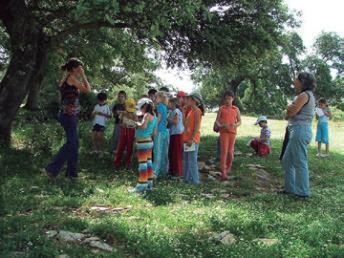


FAMILY WEEKENDS
98 99 OTWO 05 / DECEMBER 2019 OTWO 05 / DECEMBER 2019
Our adventure”programs combine different activities in nature, in this case: Hiking and Multiadventure. We have chosen a trip to the Natural Park of Sierra de Grazalema located in the province of Cádiz. We will stay in a hostel in the mountain town of El Bosque.
The first HIKING adventure is considered level 0, with a little slope. The second adventure, is an inciation to adventure sports. The necessary technical equipment will be provided for all activities.
PINSAPAR ROUTE
Our hiking route is listed as a “protected area” due to its great public interest and natural landscape.
We arrive at the port “Las Cumbres” and then cross the Pinsapar with “Centenarian Pinsapos” to reach Benamahoma, here we will have lunch. Our return route is the same so we can enjoy the most unique landscape. A great route!
MULTIAVENTURES
The multiadventure consists of a Zip Line, rappel, climbing and archery. We will make rappels at different heights, a simple climbing route, a zip line of almost 40 m and we will practise archery all this completes a morning full of adventures. We will stay at the Tavizna Hostel “El Bosque”, located in the heart of the Sierra de Grazalema. This is where we can enjoy an exquisite dinner and lunch typical of the Sierra. Adventures for all!
Duration:
Hiking 4 to 5 hours.
Multiadventure 3 to 4 hours.
Minimum / Maximum of participants:
7/15 participants.
Recommended Dates:
Autumn, winter and spring.
Services:
Qualified monitors and specialised equipment. All technical material
First aid kit. RC and Accident Insurance. Photo keepsake of your adventure with video summary. Hostel in Tavizna “The Forest”. Dinner, Breakfast and Lunch.
Prices:
Only Hiking £15
Multiadventure only £18
All adventures £70

Nuestros programas de “findeaventuras”, combinan diferentes actividades en la naturaleza, este caso: “Senderismo” y “Multiaventuras”. El lugar elegido es el Parque Natural de la Sierra de Grazalema, en la provincia de Cádiz. Para realizar la aventura, nos alojaremos en un albergue de pueblo serrano de El Bosque. La primera aventura de SENDERISMO está considerada de nivel 0, con poco desnivel. La segunda aventura, es totalmente de inciación a los deportes de aventura.
Para todas las actividades se dispondrán de los materiales técnicos necesarios.
RUTA DEL PINSAPAR
Nuestra ruta de senderismo, es una de las catalogadas como “espacios protegidos” de la provincia por su gran interés paisajístico y natural.
Llegaremos hasta el puerto de las Cumbres para luego atravesar el Pinsapar con “pinsapos centenarios” para llegar al Llano del Benamahoma, donde tendremos el almuerzo. Regresaremos por el mismo lugar disfrutando de un paisaje único.
¡Una ruta genial!
MULTIAVENTURAS
La Multiaventuras, consta de Tirolina, ráppel, escalada y tiro con arco. Realizaremos ráppeles en diferentes alturas, una via sencilla de escalada deportiva, una tirolina de casi 40 m y nos iniciaremos en el tiro con arco, para completar una mañana llena de emociones.
Nos alojeremos en el Albergue de Tavizna “El Bosque”, situado en pleno corazón de la Sierra de Grazalema. En él podremos disfrutar de una exquisita cena y almuerzo típicos de la Sierra.¡Aventuras para todas
Duración:
Senderismo, de 4 a 5 horas
Multiaventuras, 3 a 4 horas.
Mínimo/Máximo de participantes: 7/15 participantes. Fechas Recomendadas: Otoño, invierno y primavera.
Servicios:
Monitores y equipos especializados. Todo el material técnico Botiquín primeros auxilios. Seguros RC y Accidentes. Reportaje fotográfico con vídeo resumen. Albergue en Tavizna “El Bosque”. Cena, Desayuno y Almuerzo.
Precios:
Sólo Senderismo £15
Sólo Multiaventuras £18
FINDEAVENTURA: SIERRA DE GRAZALEMA, CÁDIZ 101 100 OTWO 05 / DECEMBER 2019 OTWO 05 / DECEMBER 2019
Findeaventura £70
Enjoy breath taking views across 3 countries and 2 continents, explore Gibraltar’s fascinating history and be introduced to our most famous inhabitants, the Barbary macaques – the only free roaming monkeys in Europe!
Highlights:
Europa Point and Lighthouse, Upper Rock Nature Reserve, Pillars of Hercules Monument, Windsor Suspension Bridge, O’Hara’s Battery (top of Rock 424m), kywalk, Ape’s Den, Great Siege Tunnels, Moorish Castle...and many more.
What’s included?
Premium e-bike by Riese&Müller. Cycle helmet. Safety instructions. Entrance fee into the Nature Reserve. An official tour guide. Bottled water.
Duration:
3 hours. Suitable for everyone over 155 cm, over 12 years old and capable of riding a bicycle.
EBIKES GROUP TOURS. GIBRALTAR
Disfrute de las impresionantes vistas de 3 países y 2 continentes, explore la fascinante historia de Gibraltar y conozca a nuestros habitantes más famosos, los macacos de Berbería, ¡los únicos monos que se desplazan libremente en Europa!
Puntos destacados:
Punta de Europa y el Faro, Reserva Natural Upper Rock (Parte superior del peñon), Monumento de las Columnas de Hércules, Puente colgante de Windsor, Bateria de O’Hara (parte superior del peñon - 424m), El Skywalk, Guarida de los monos, Gran túneles de asedio, Castillo Arabé. …y muchos más ¿Qué está incluido?
Alta calidad E-bike de Riese&Müller. Casco de bicicleta. Instrucciónes de seguridad. Entrada a la reserva natural. Guía oficial. Agua embotellada.
Duración:
3 horas. Adecuadas para todos los que midan más de 155 cm, tengan más de 12 años de edad y puedan montar en bicicleta.
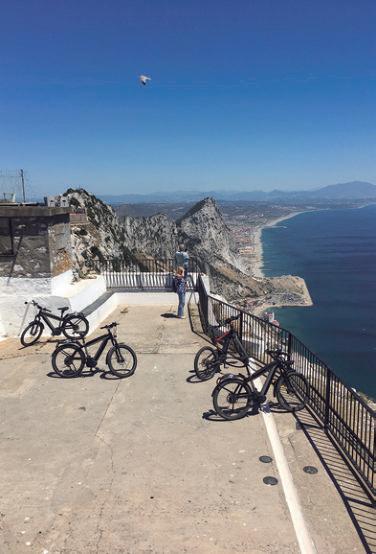
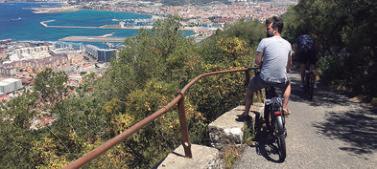
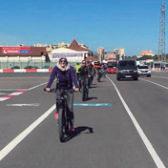

VIA FERRATA DAY AT RONDA
09:00 Meet at the border (Spanish side) by Burger king, look for the white Toyota van.
10:30 Instruction and vias. Look round Ronda.
15:30 Head back. Drop off (Spanish side)
All technical equipment and instruction on use provided. Professional and safe monitoring and guiding throughout. Fully qualified for all services we offer.
What you need to bring:
Comfortable clothes and shoes. Avoid loose or dangly bits. Warm top. Sunglasses and sun cream.
If you have long hair please tie it up but remember that you will need to put a helmet on. Water and a pack lunch (we will have pack lunch on the route).
What we provide:
Expert instruction and safety advice. Transport from and back to the border (Spanish side). All the technical equipment UIAA approved and inspected.
El día de la Vía Ferrata en Ronda:
09:00 Reunimos en la frontera (La Linea de la Concepcion) junto a Burger King, busca la camioneta Toyota blanca.
10:30 Instrucción y vias. Un paseo por Ronda.
153:0 Empezamos el camino para atras. Bajar en La Linea de la Frontera.
Se proporciona todo el equipo técnico y las instrucciones de uso. Monitoreo y guía profesional y seguro en todo. Plenamente cualificado para todos los servicios que ofrecemos.
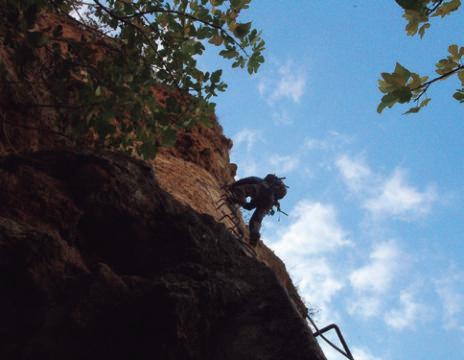
£60
per person (por persona)
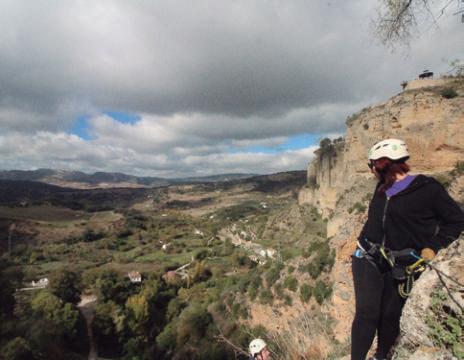
£69 per person (por persona)
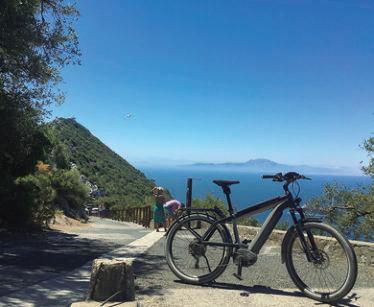
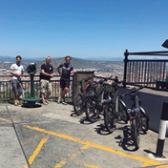

Lo que necesitas traer: Ropa y calzado cómodos. Evite ropas o accesorios sueltos o colgantes. Ropa cálida. Gafas de sol y crema solar. Si tiene el pelo largo, átelo, pero recuerde que deberá ponerse un casco. Agua y un almuerzo (tendremos tiempo para almuerzo en la ruta).
Lo que proporcionamos: Instrucción experta y consejos de seguridad. Transporte desde y hacia la frontera (La linea de la Concepcion). Todo el equipo técnico UIAA aprobado e inspeccionado.
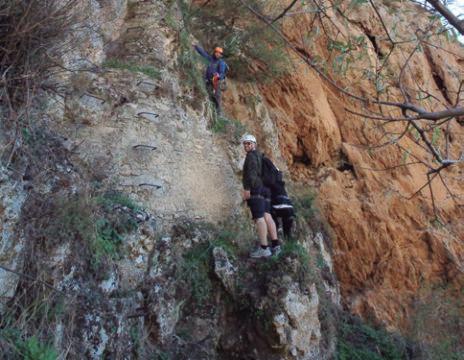
EBIKES DAILY ROCK TOURS. Gibraltar
103 OTWO 05 / DECEMBER 2019 OTWO 05 / DECEMBER 2019


































































 Written by Sarah Birch
Written by Sarah Birch
























































































